The real purpose of this flight was to visit Kaifeng on the way from Shanghai to Beijing, and the nearest airport was in Zhengzhou.
The real purpose of this flight report is to share its bonus, which could be of interest to aviation geeks.
The last flight to PEK was inconveniently early in the afternoon, and we chartered a taxi, rather than taking a long distance bus, to maximize visiting time.
The traffic was very light on the expressway. The directions on the expressway may not be legible to all: S85 takes you to Shaolin Temple 少林寺 of kungfu fame, G30 to Xi'an 西安 of terracotta army fame and G4 to Wuhan 武汉 (the Chinese automotive industry capital) and Beijing 北京.
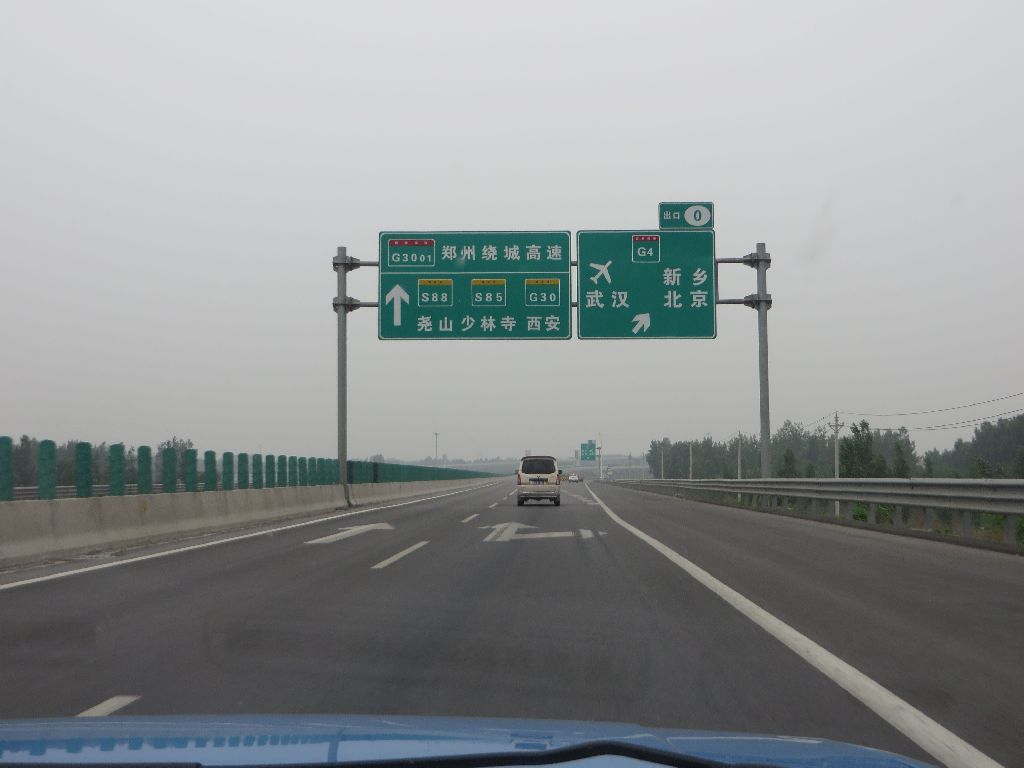
… but the loading of some trucks made up somewhat, like this one
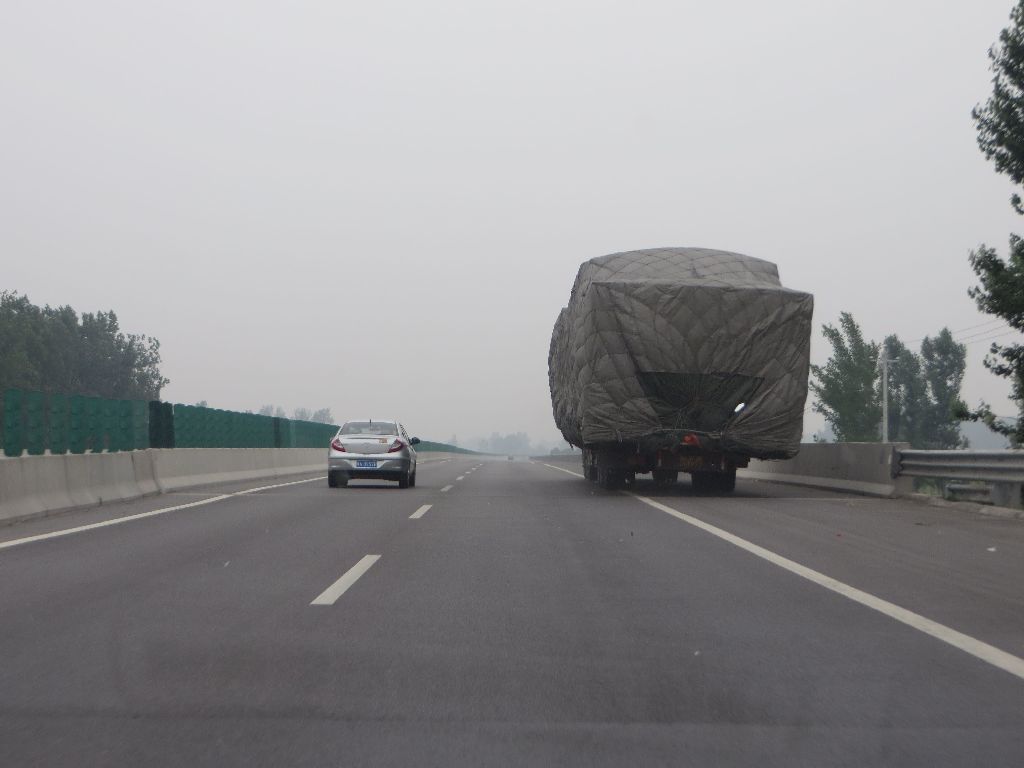
… or that other one, which were actually quite commonplace on Chinese major roads. These oversized loads result from the too low market price for road freight in China, and from the affordable level of the fines and corruption to get away with overloading.
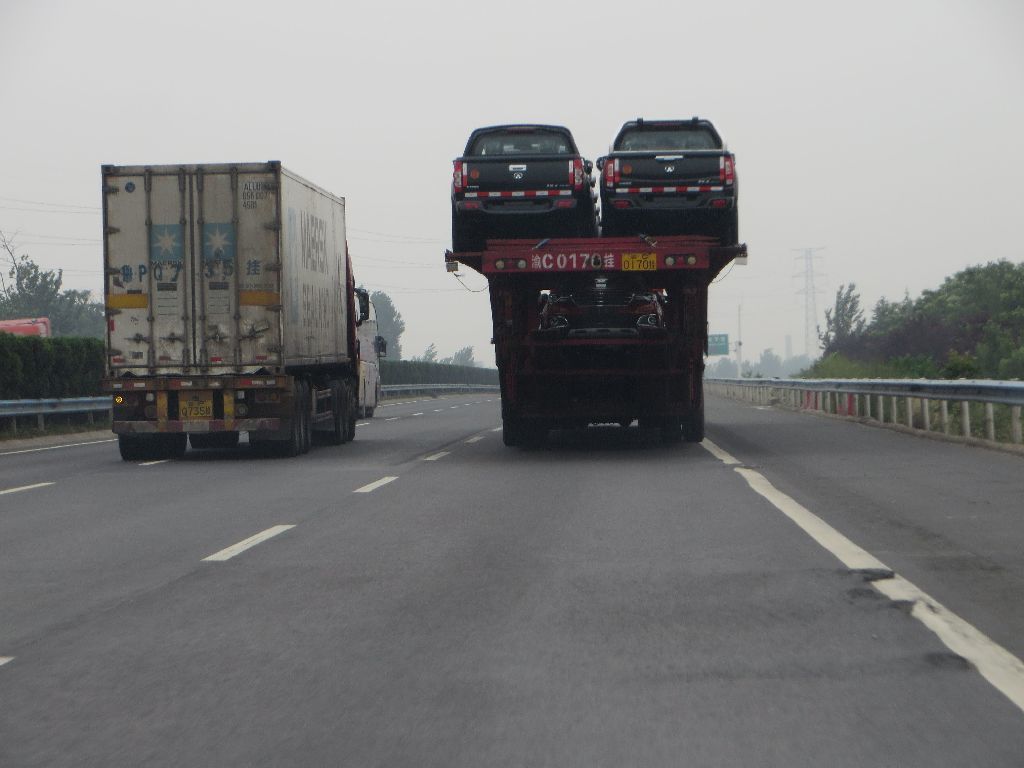
We made it in time in CGO ; the construction on the left is the building of the extension of the present terminal.

This is the present terminal.
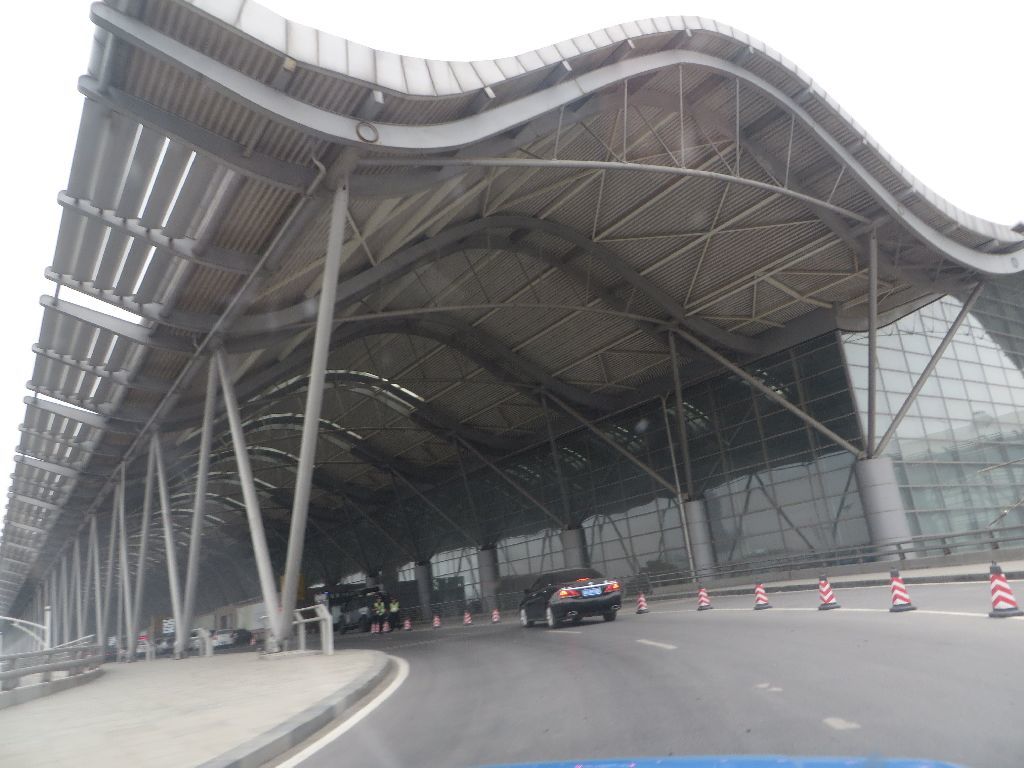
The full FIDS
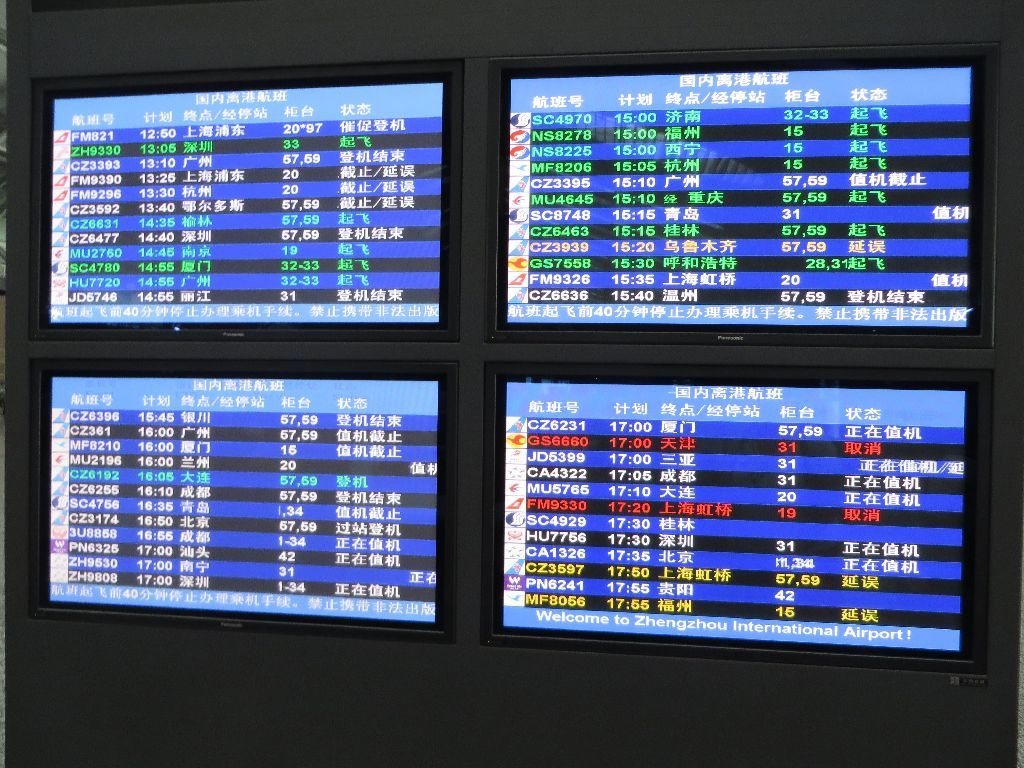
… and the screen where on flight is neither cancelled (2 flights out of 12) nor delayed (3 flights out of 12), which means that nearly half of the flight do not meet the schedule.
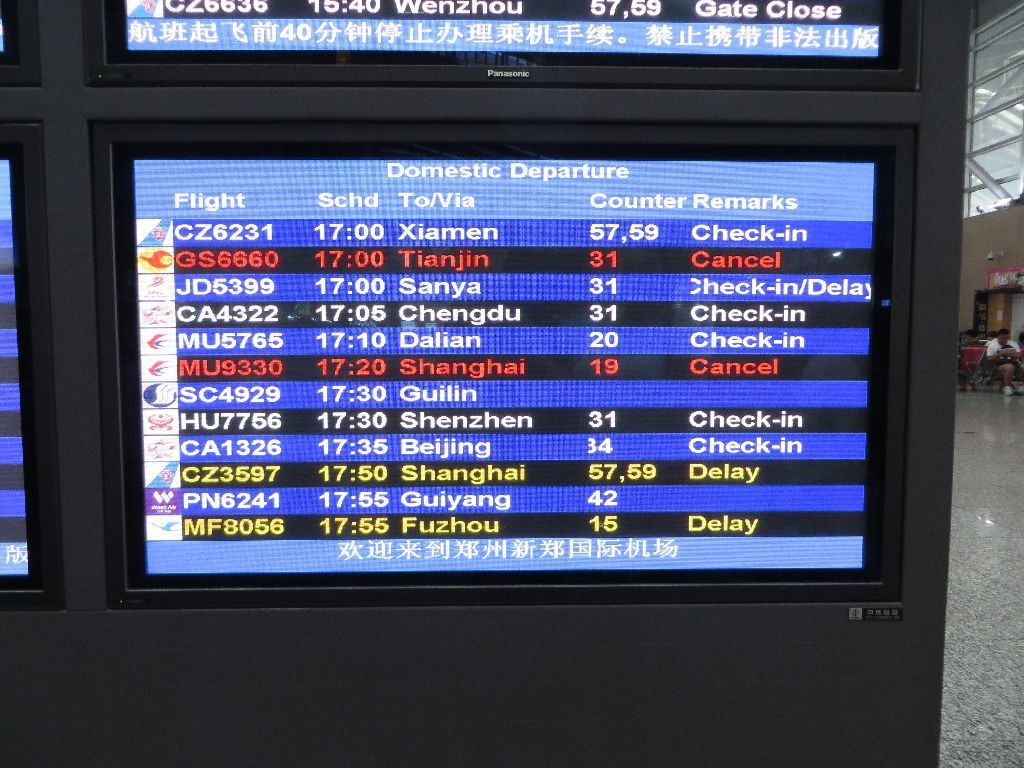
Reasonable waiting time at check-in behind a PAX whose golf bag will be taken separately by a staff member.

This counter can check in the flights of these airlines (and also those operated by GJ and GK, listed in the next screen).

A peek behind after we had received our BPs: it was definitely not crowded at the check-in counters
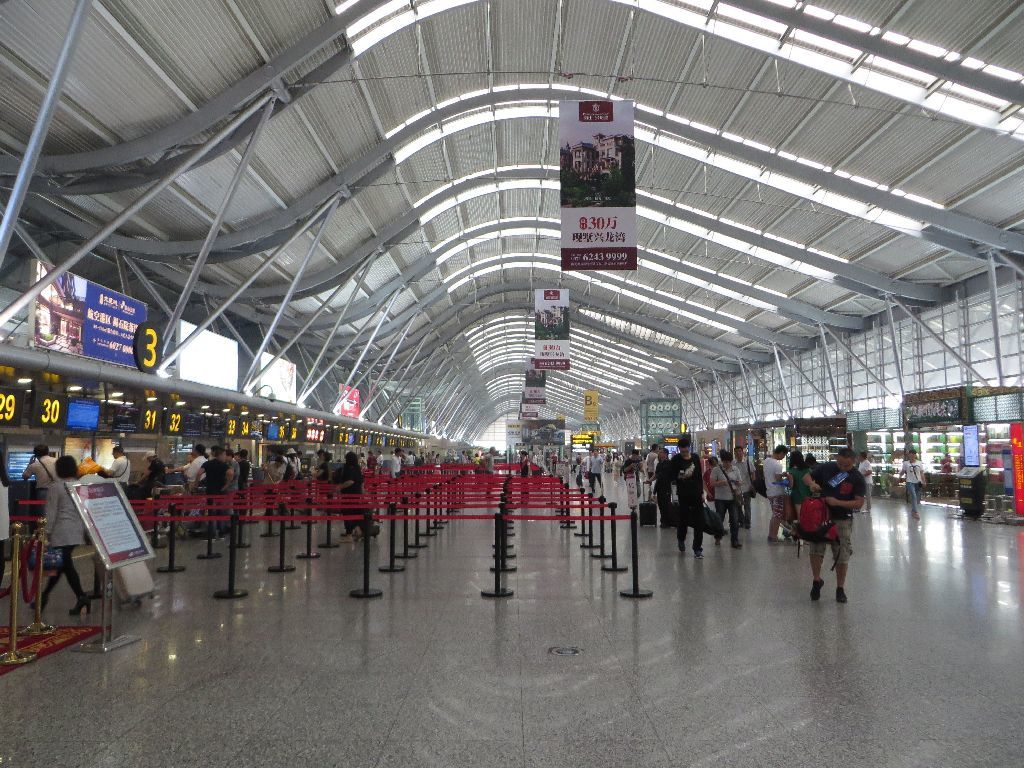
Nor in the terminal landside, actually
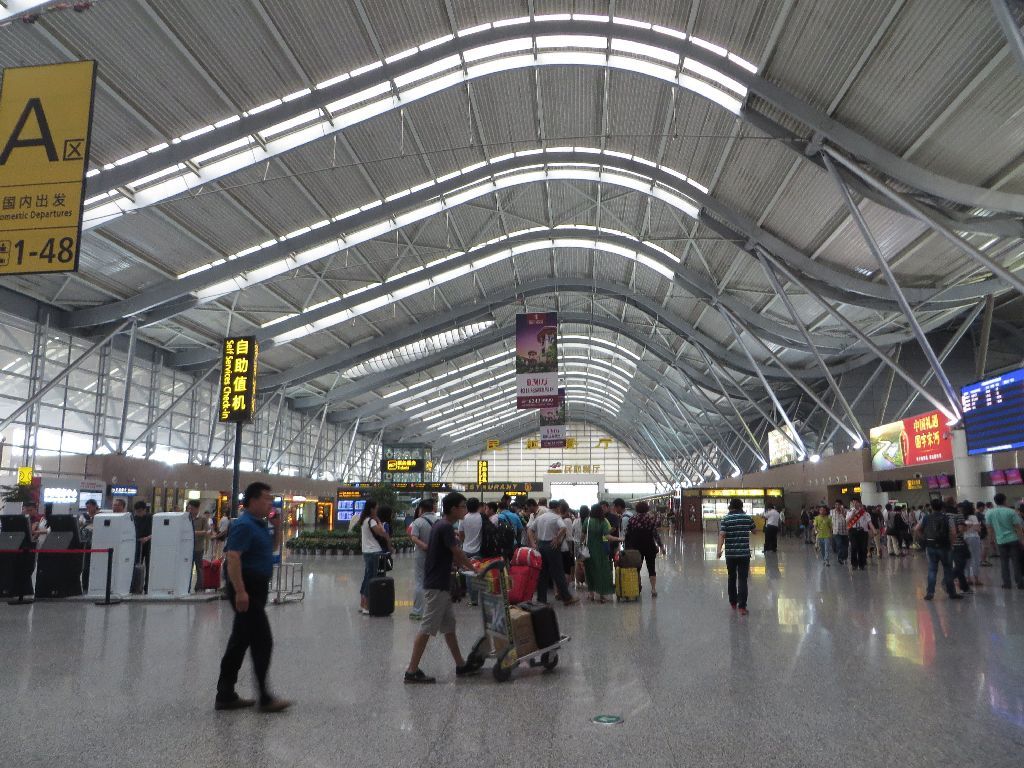
Or at the security check access on the right
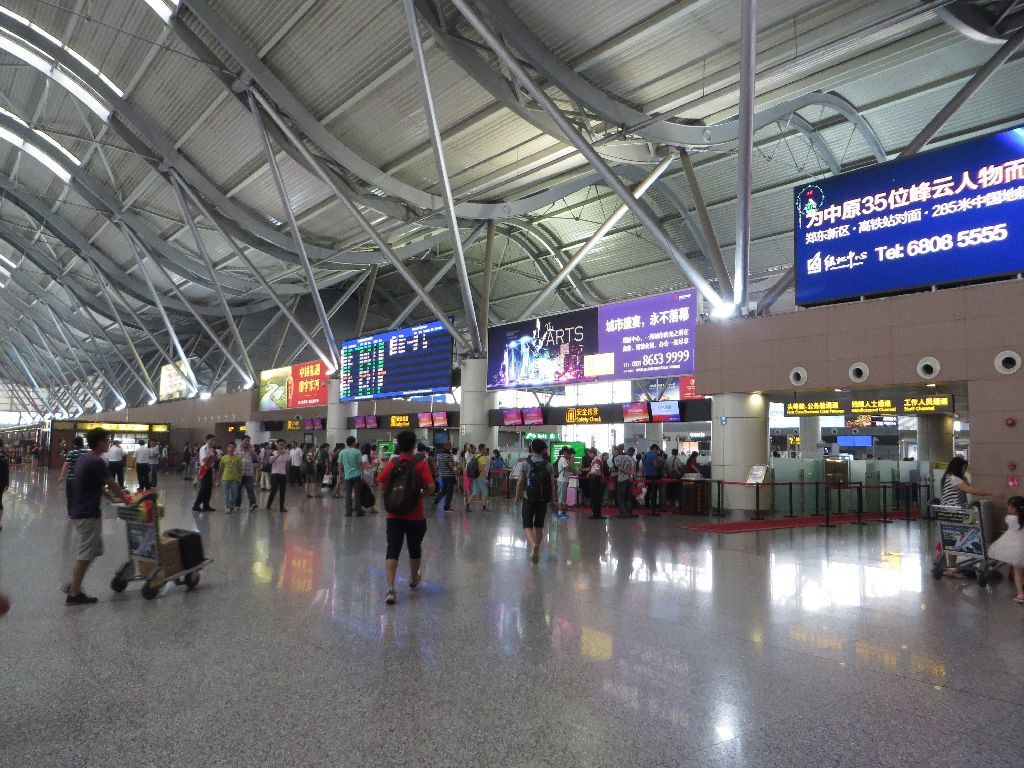
The business / Elite priority lane is consequently of little interest
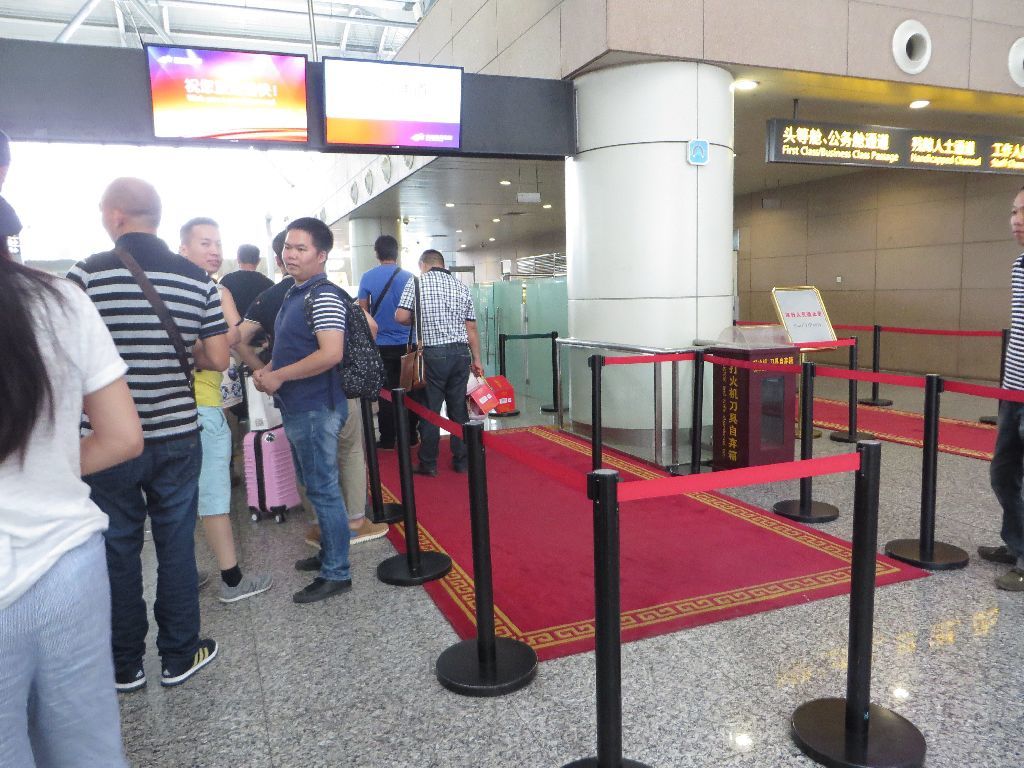
This is the BP, before stamping at the ID check
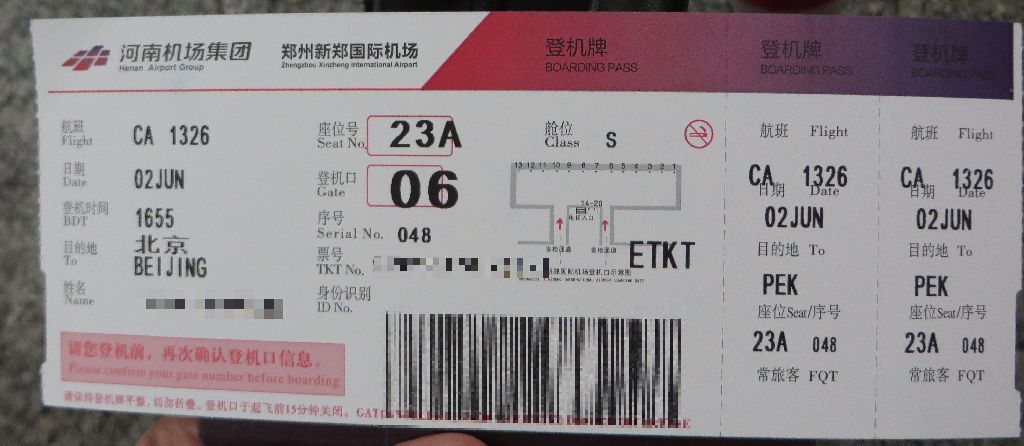
My laptop bag did not make it unchallenged through the security check, even though I had removed the laptop from it. I had to remove all this stuff (disk drive, camera chargers, cord extension) and have all that go through the X-ray machine again.
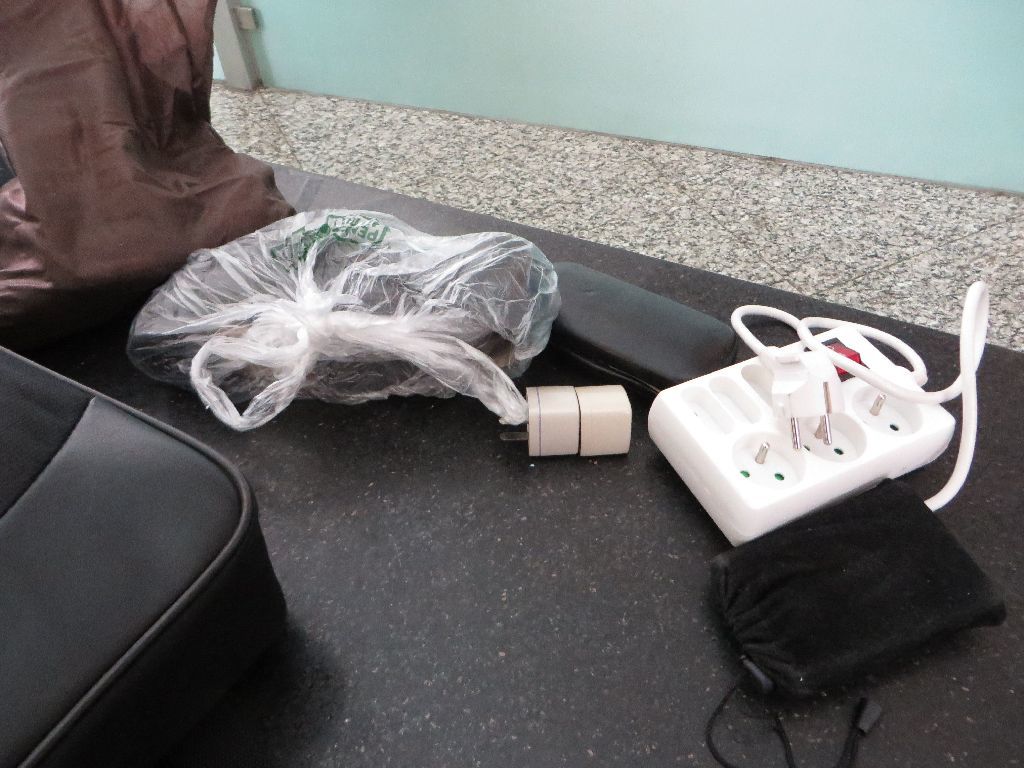
No complaint about their courtesy, both oral and written, with this “warm notice” (a very commonplace mistranslation from Chinese) at the exit of the security check area.
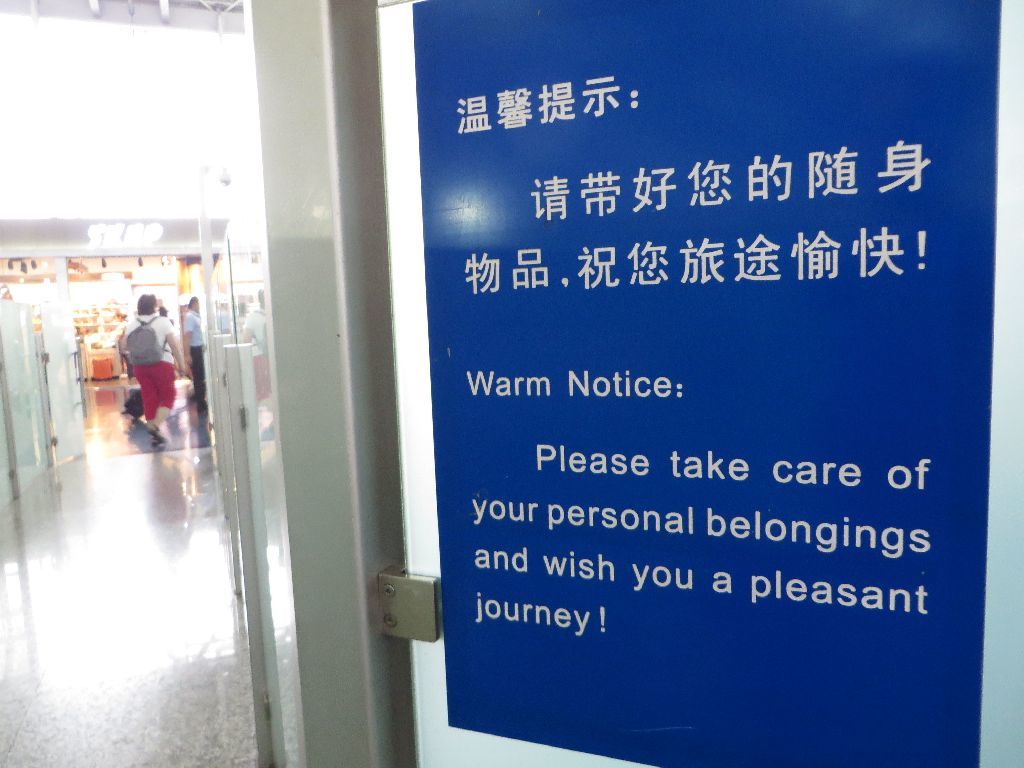
Now we are airside
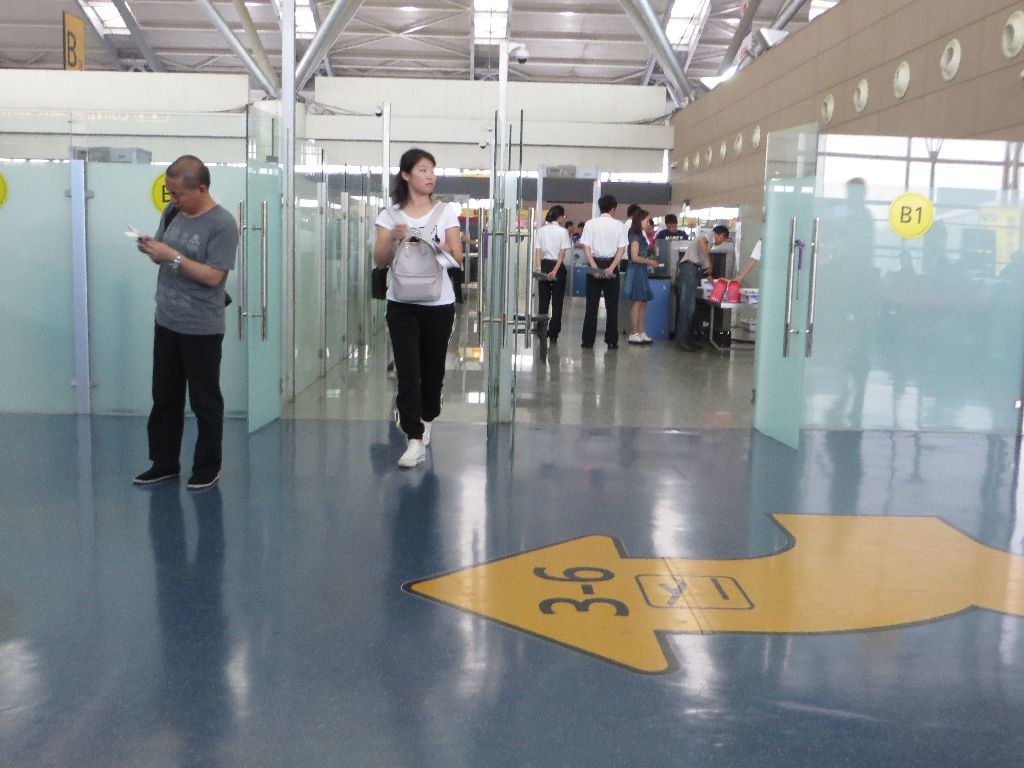
We pass here between a multi-airline lounge
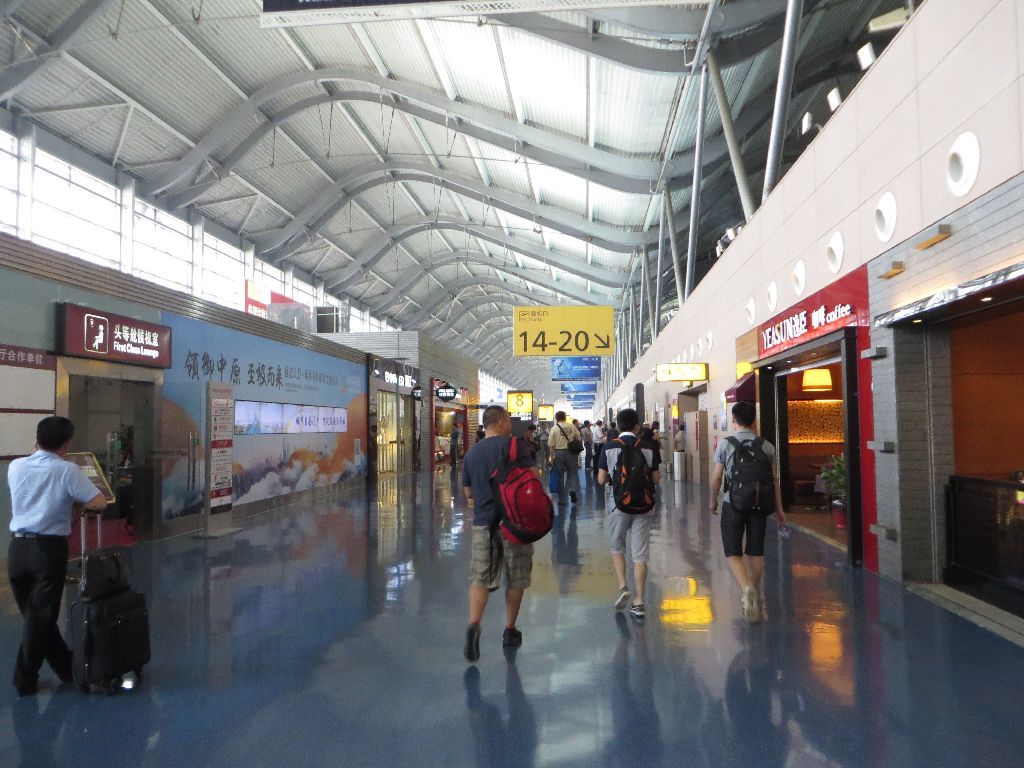
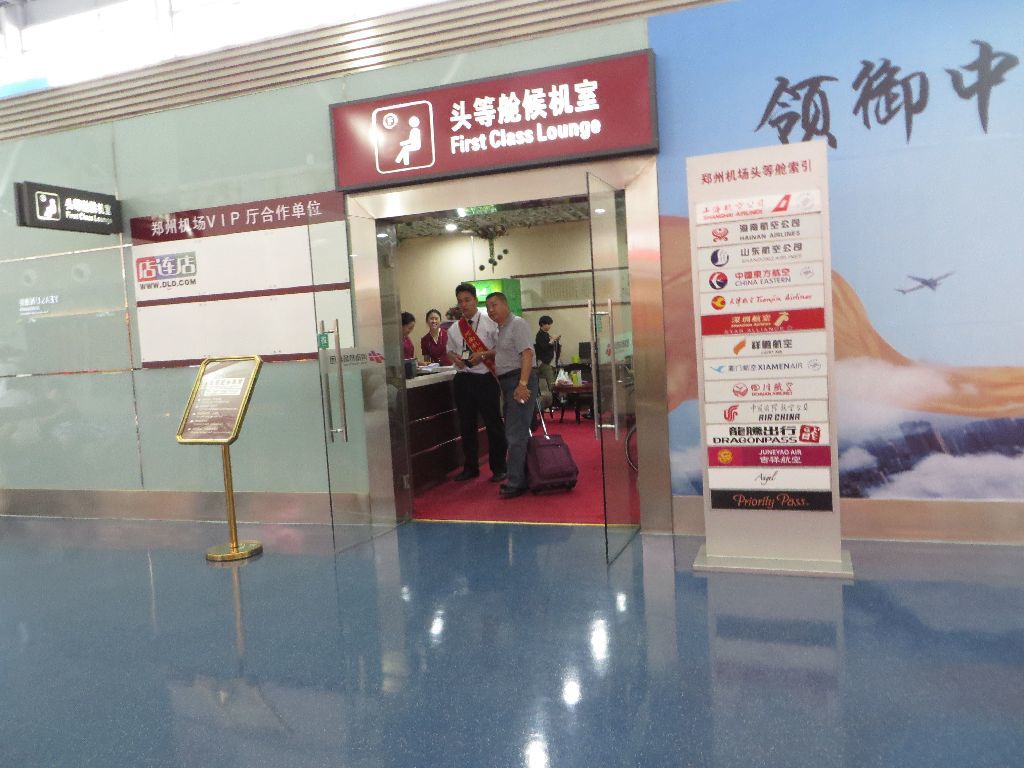
And a restaurant
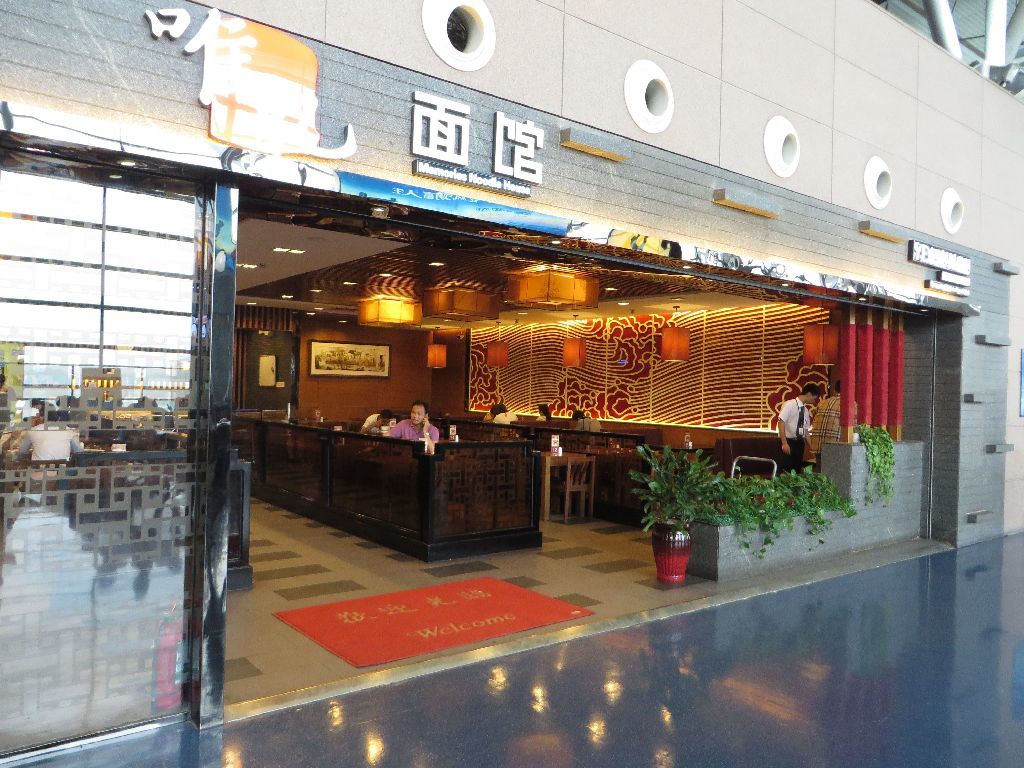
I wondered about the memories of the noodles served by this house.

I went around while my wife patiently remained seated here, keeping my hand luggage and laptop bag.

This is a present terminal layout: out of 13 boarding gates, three on the right are dedicated to international / HK / Macau / Taiwan flights

But this is what the terminal will look like once the on-going work is completed.
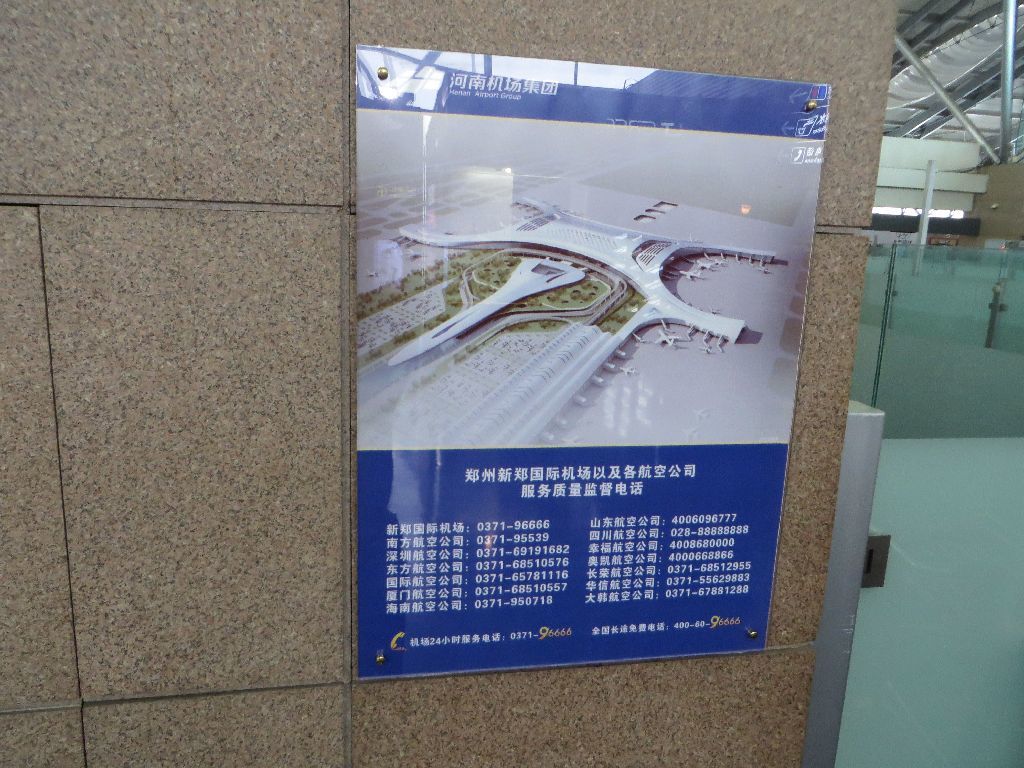
The entrance to a room for smokers is on the right
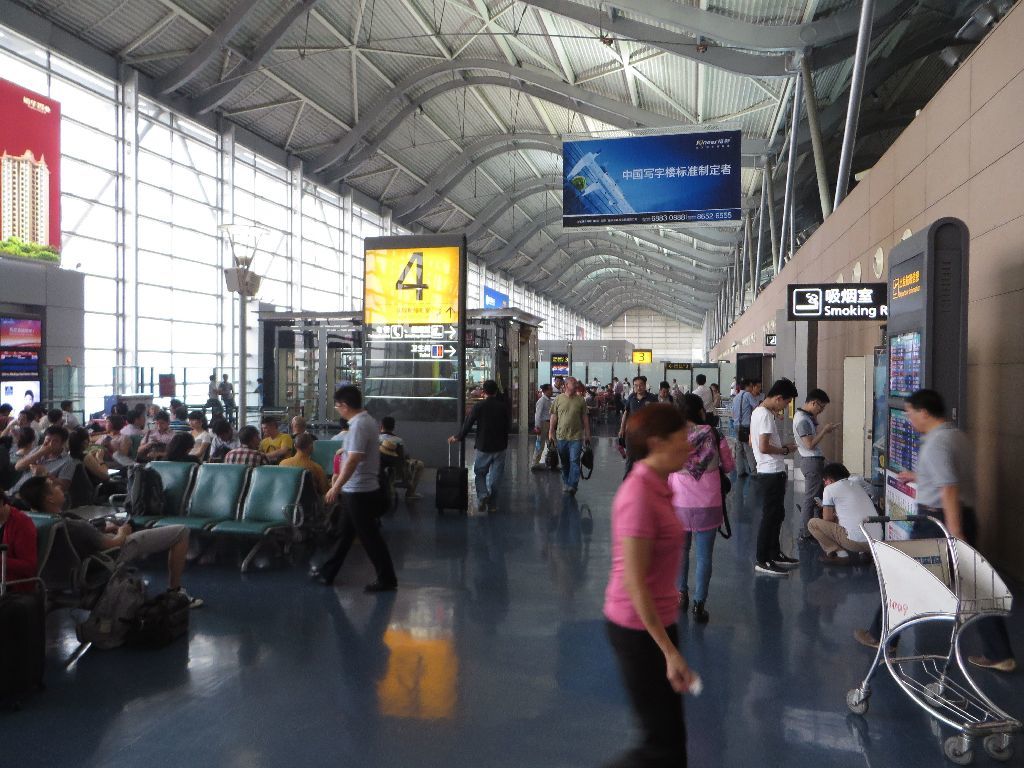
No, I’m not going to use this kids’ playground, but there is one.
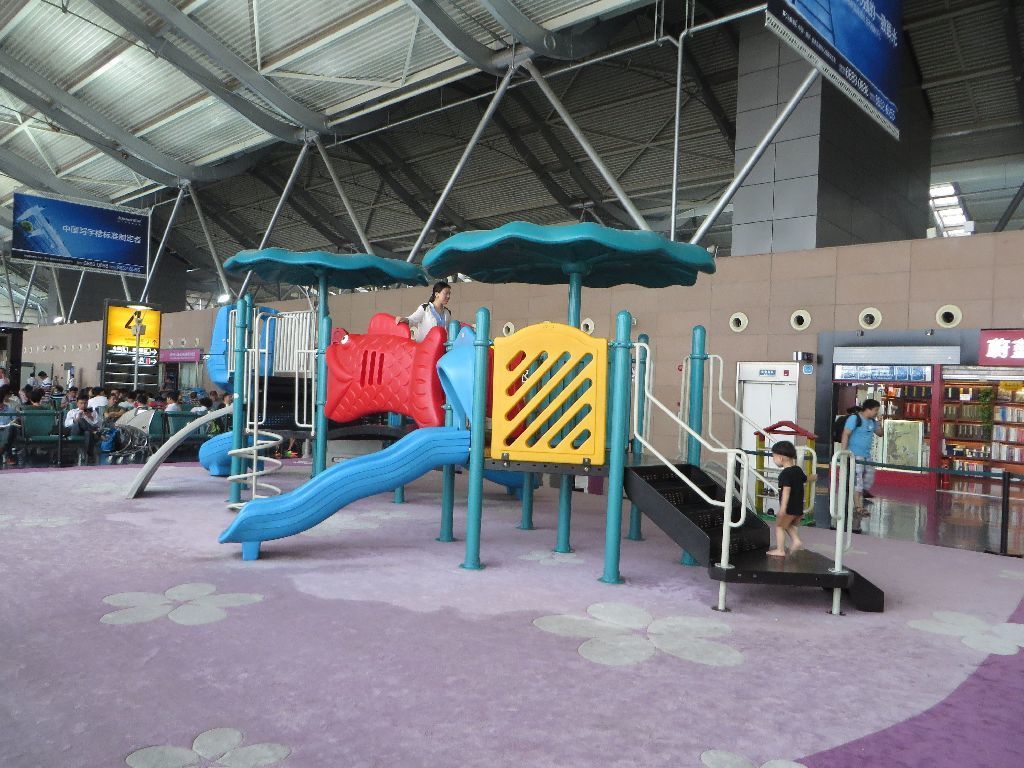
One of Flight Report’s oldest legends has it that a young and promising Flight Reporter spent a night on a luggage trolley, but I guess it was not this one.
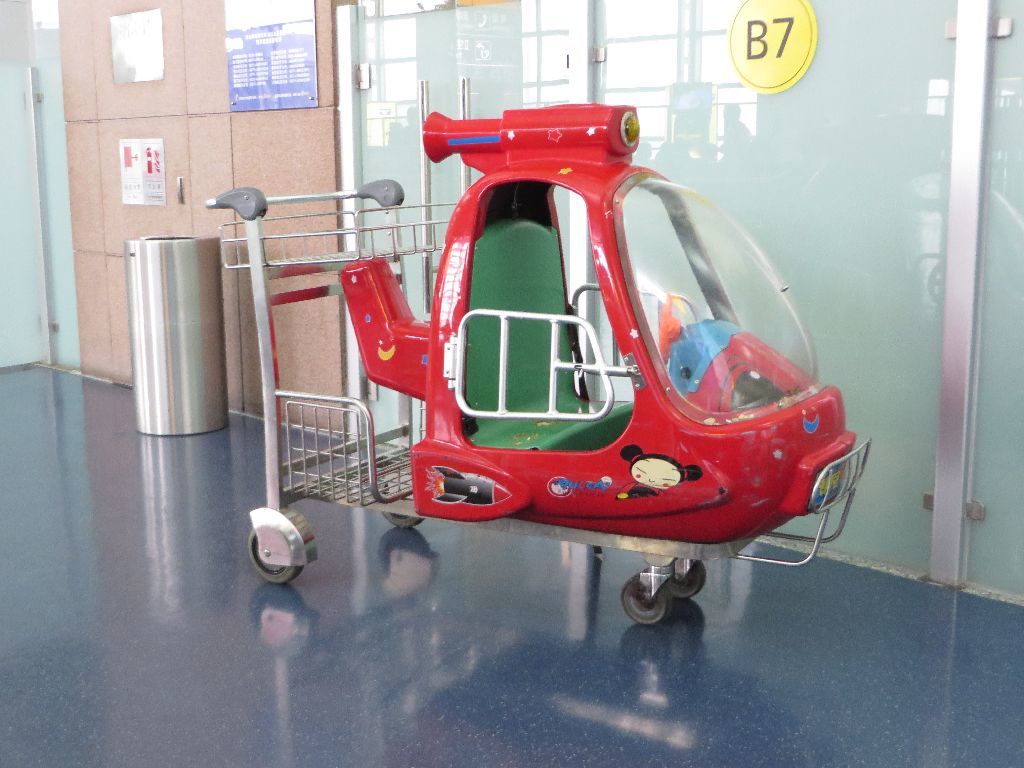
Remote boarding for the passengers of this West Air A319
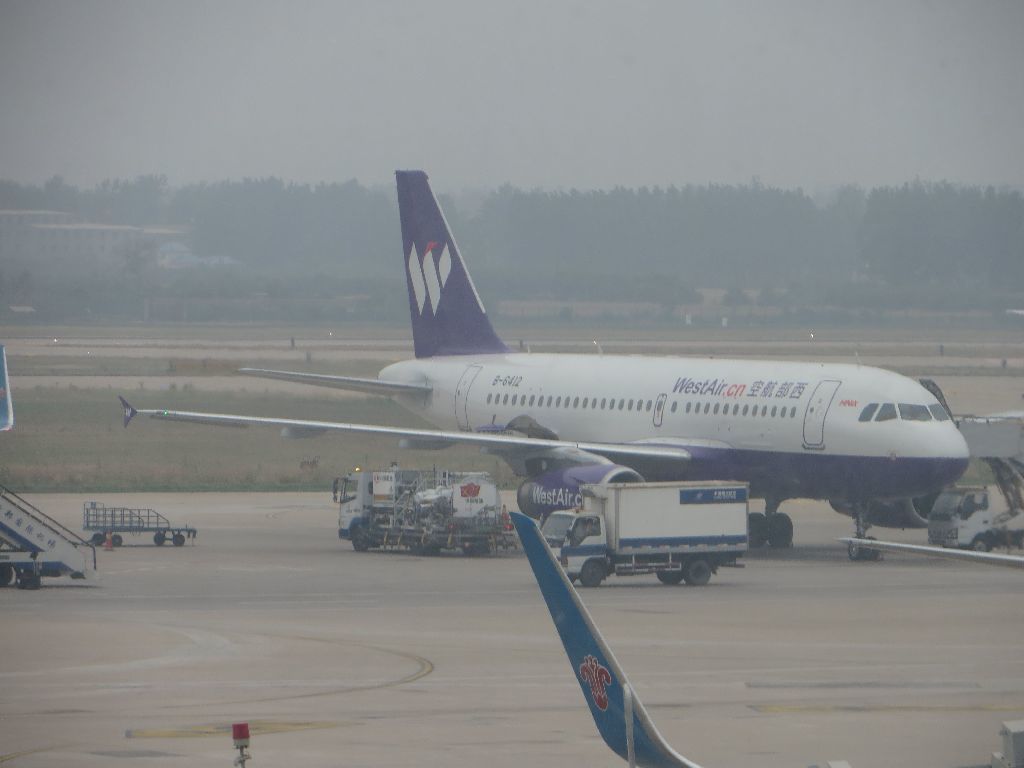
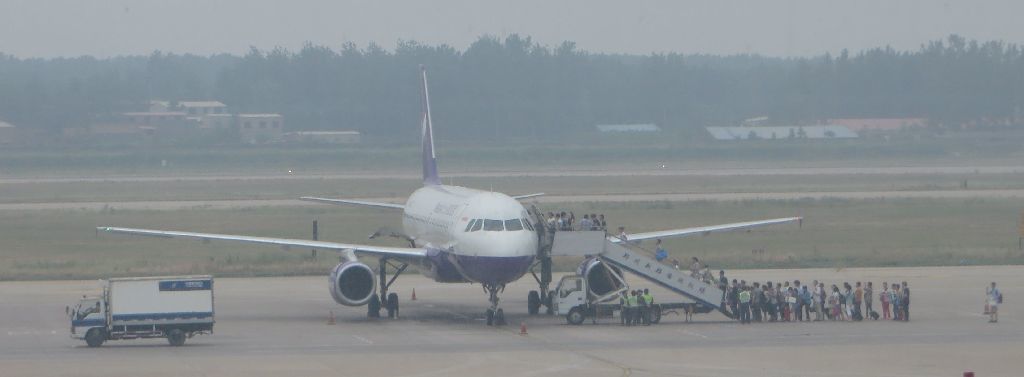
Shandong Airlines, a smallish airline named after that province south-east of Beijing
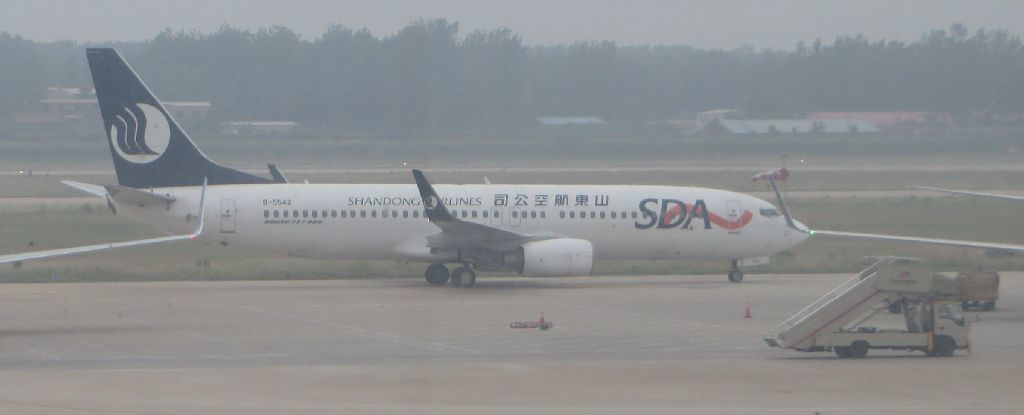
A Shenzhen Airlines 737: I often saw aircrafts of that airline during that trip, even though I was mostly very far from its hub located next to Hong-Kong. I did not post-process these pictures, which give you an idea of the atmospheric condition.
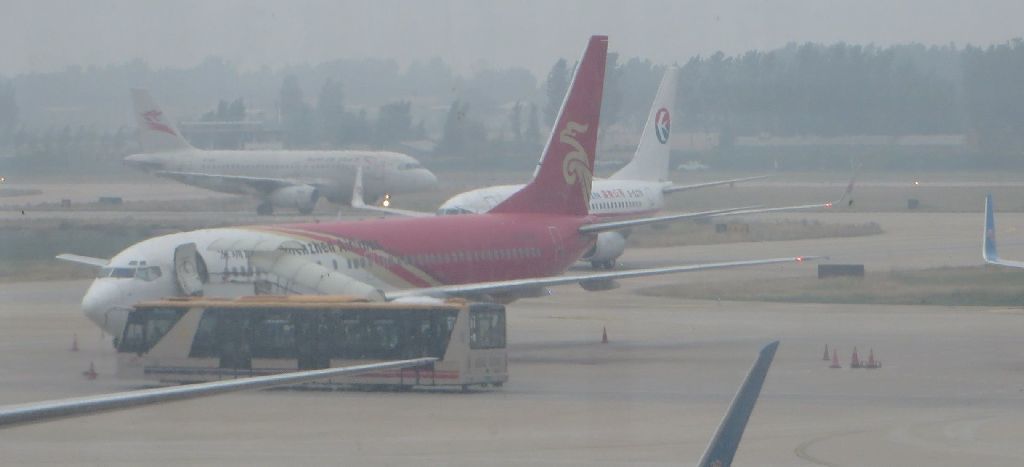
This box is another multi-company lounge
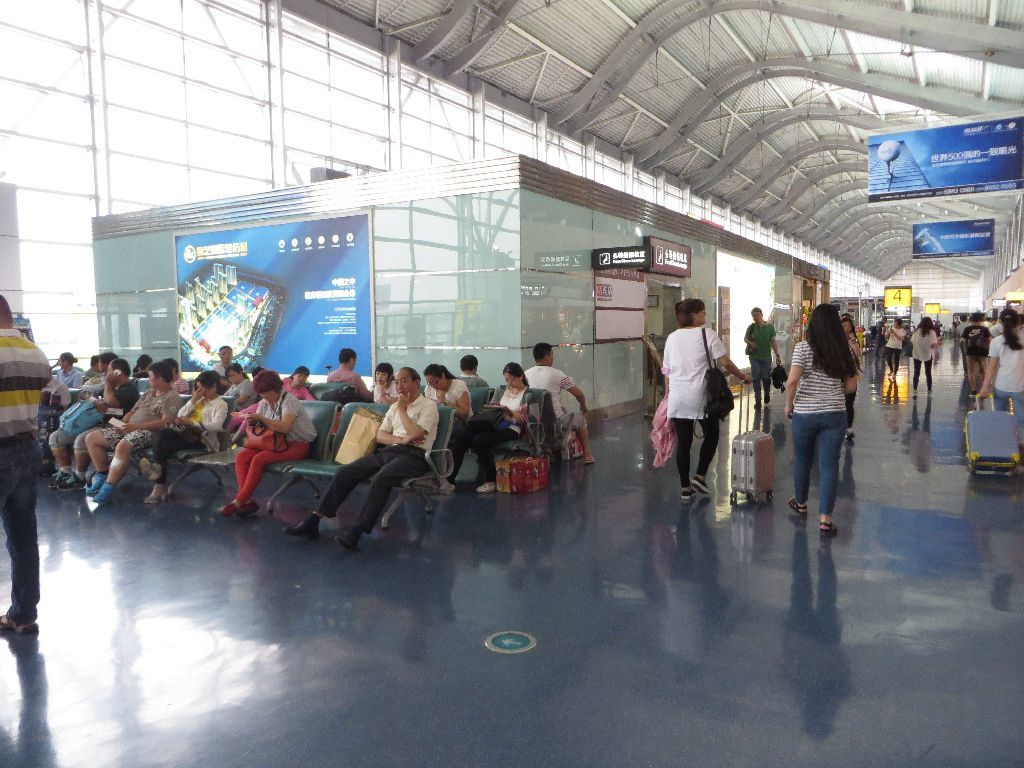
The inside as seen from the outside does not seem fascinating.
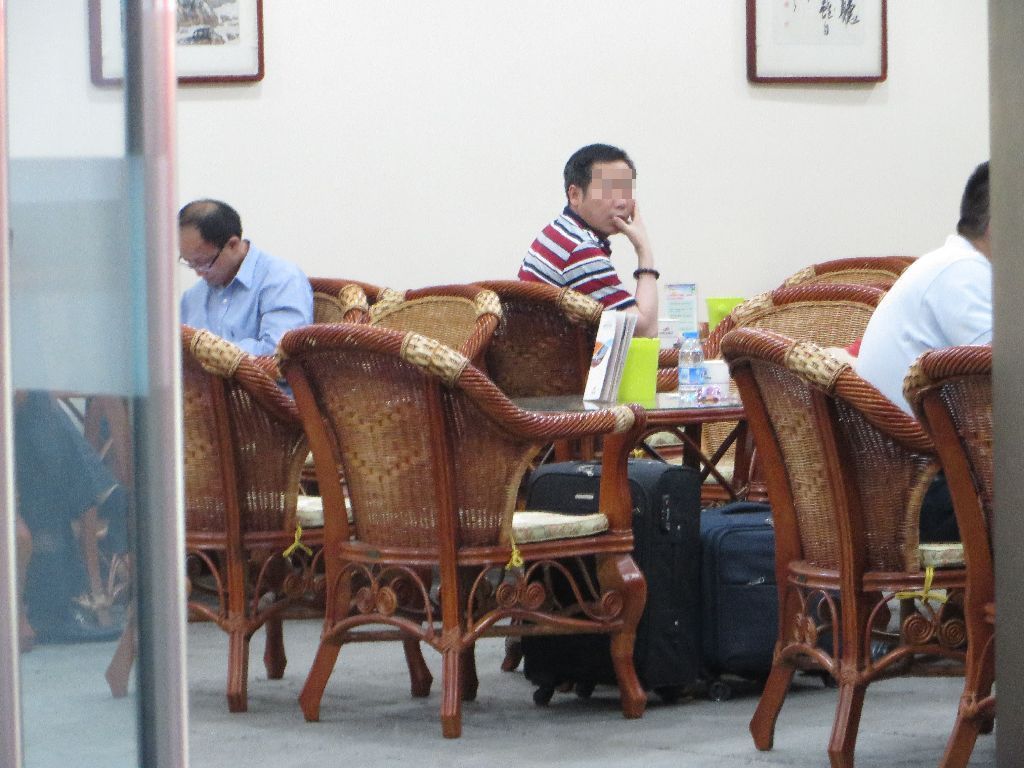
It’s time to go and join my wife before she starts worrying as boarding begins. The ad above the gate is for an upper class real estate project with a typical 21st century design.
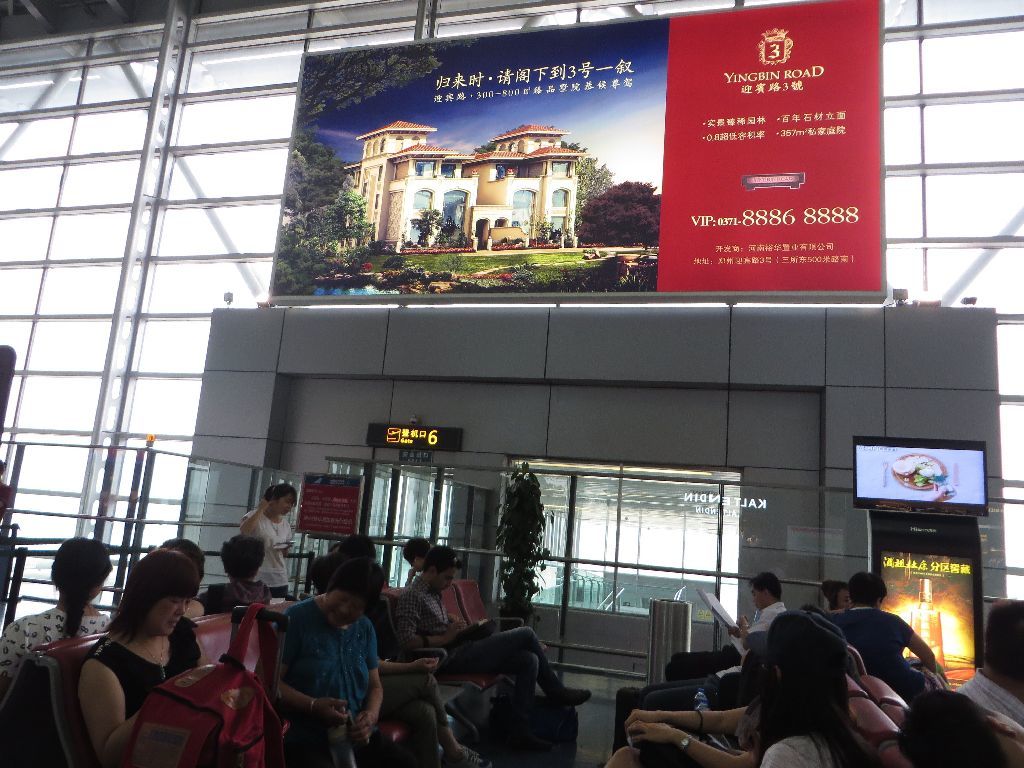
There is another one alongside the access to the boarding gate
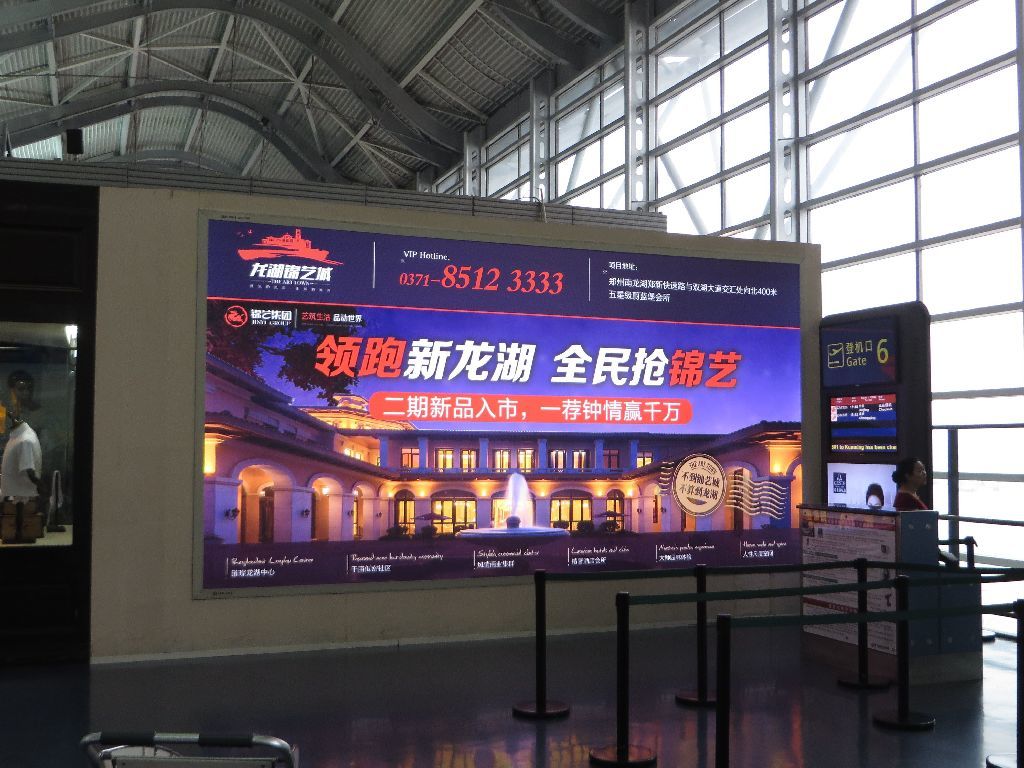
The aircraft registration number for fans

Going down two successive ramps to the aircraft door.
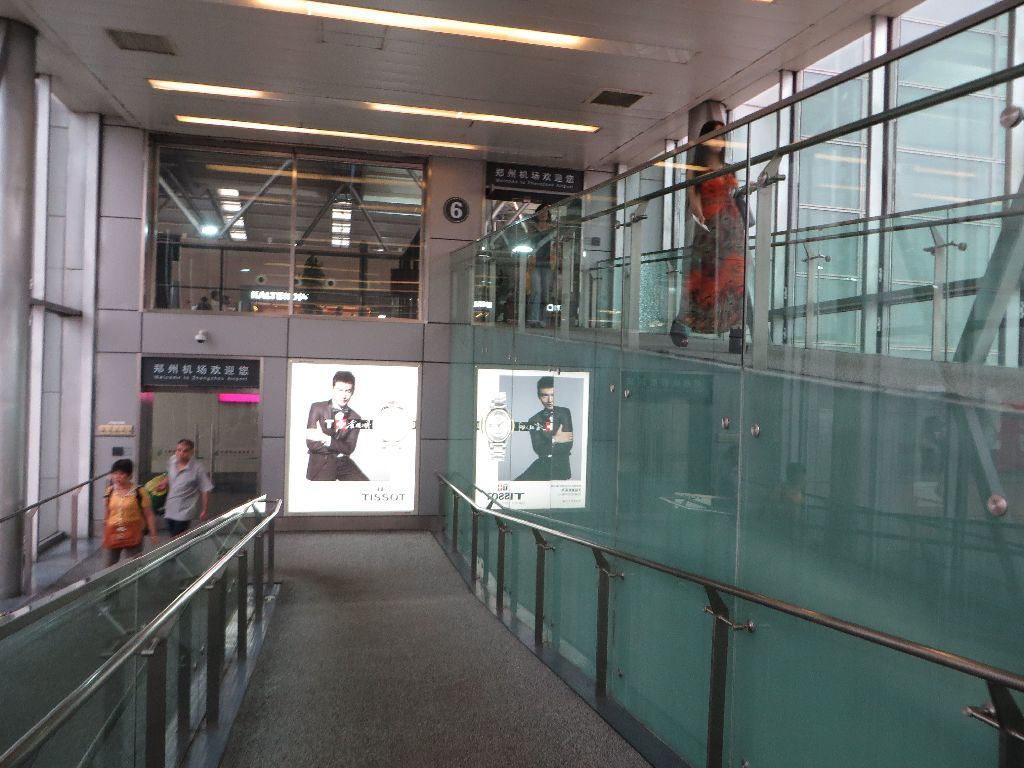
Going through the two business class rows in their typical 2+2 layout
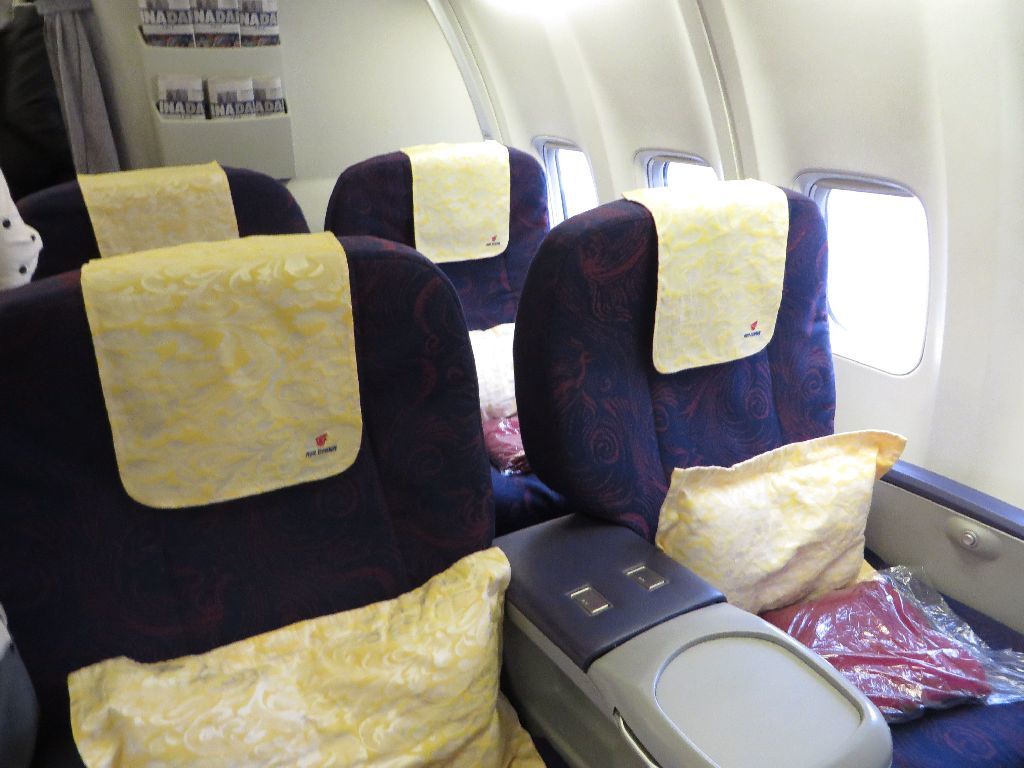
Air China economy cabins start at Row 11, and Row 13 is not omitted

The rear of the economy cabin, before it fills up
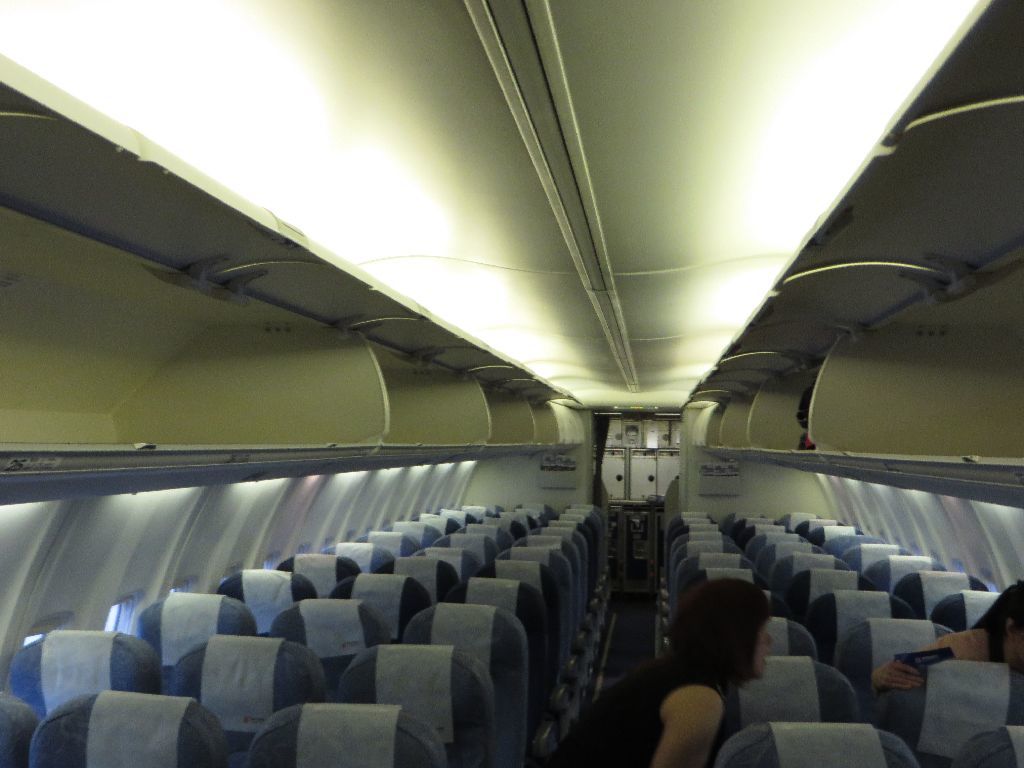
We are at the limit between two seat decoration patterns

… just after the emergency exit rows, where there will be only one passenger.
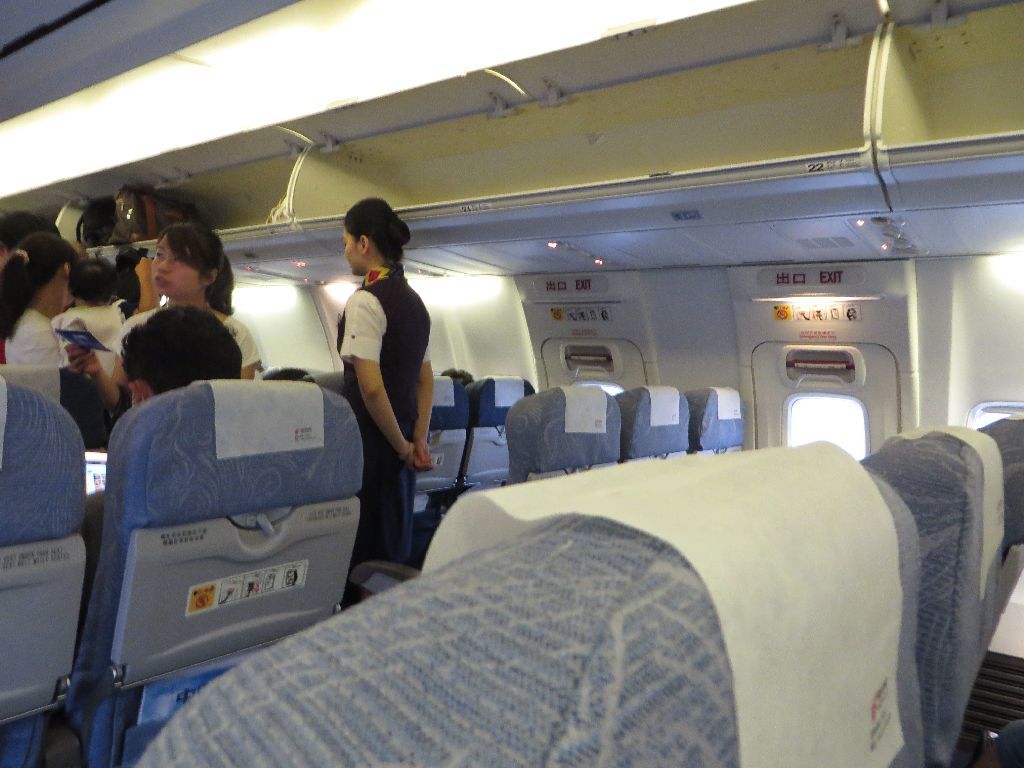
Air China did not sell advertising space on the head rests

The seat pitch is standard

… and so are the overhead lights

.. and the safety leaflet
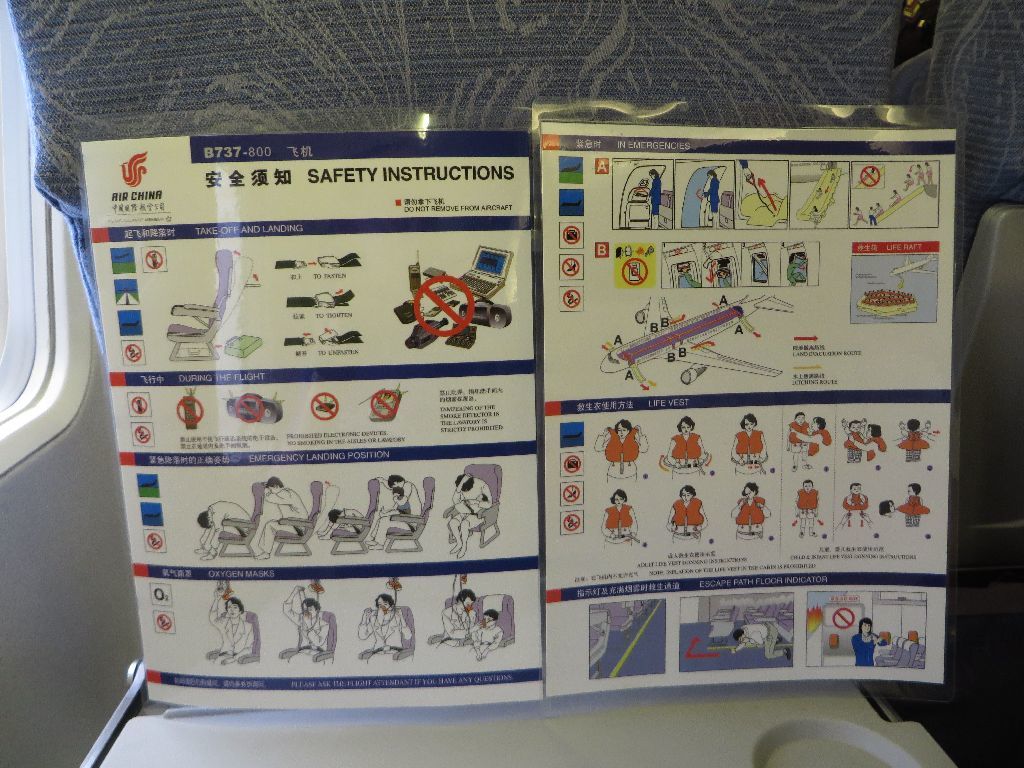
禁止使用干扰飞行通系统的电子设备 means « Do not use means of communication which can interfere with the plane’s electronics ». The translater simply forbids the use of any electronic equipment, in broken English.

There are several audio channels that I won’t try during this flight.

Push back after a CZ A320
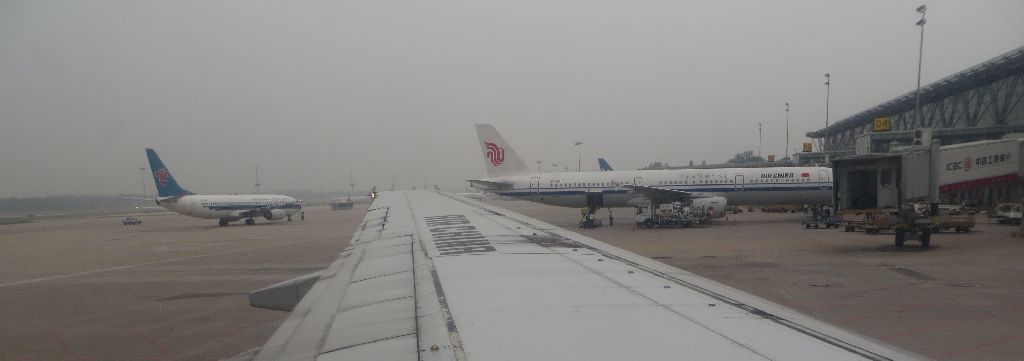
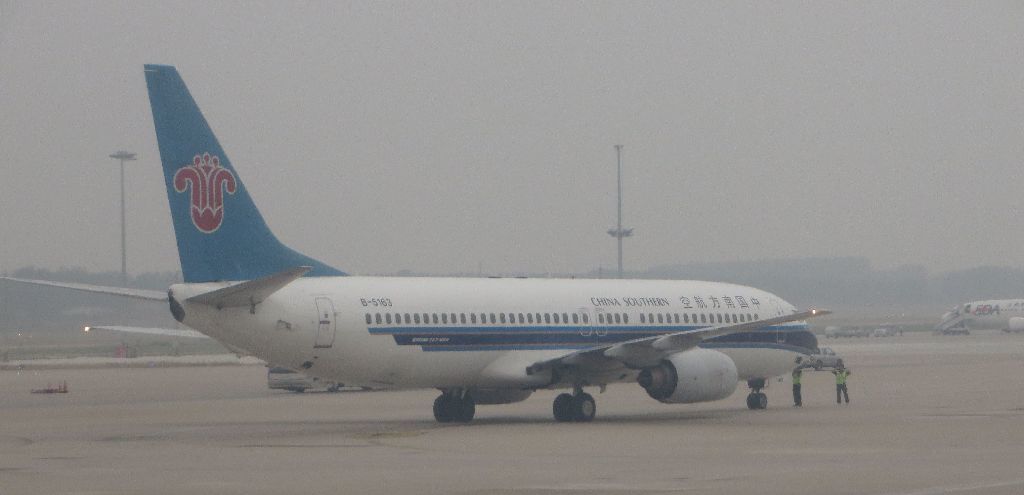
Why is this SF Airlines cargo plane at the passengers terminal?
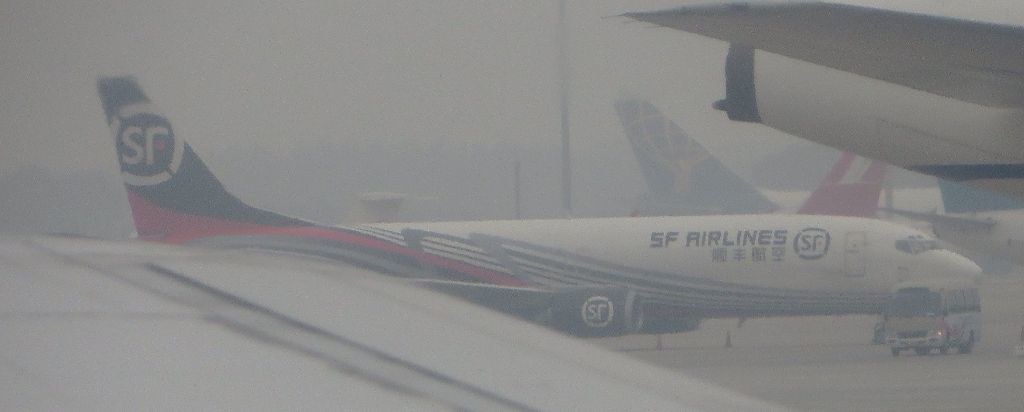
The safety demonstration is on the IFE, with a sign language translation
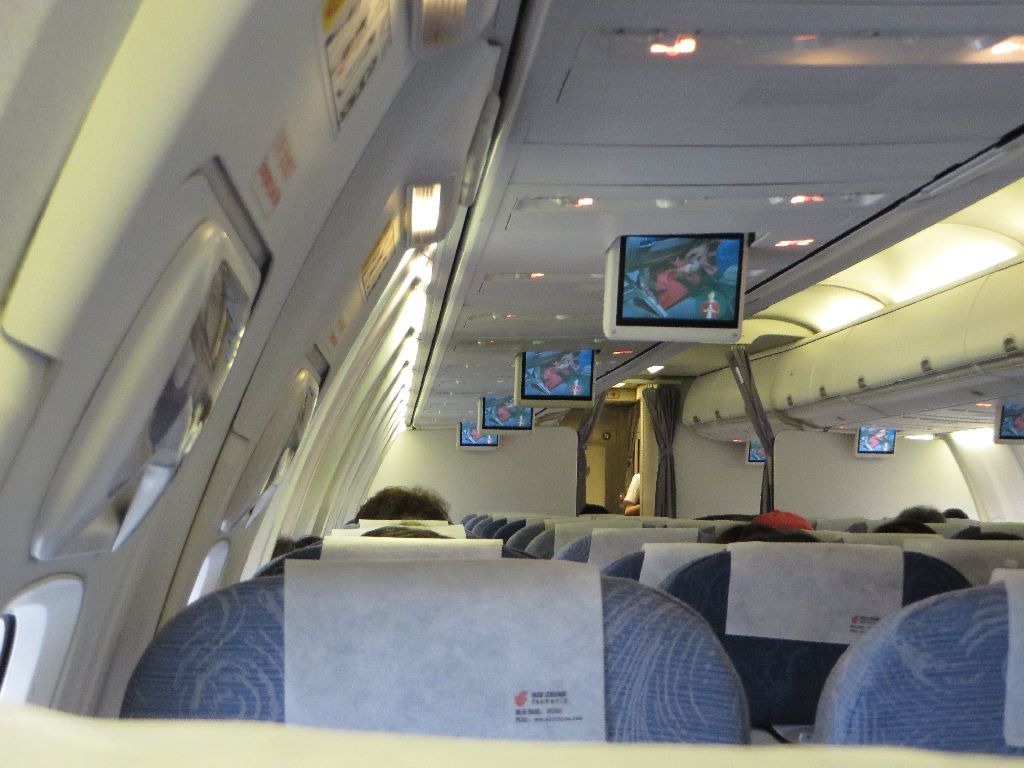
This one is a newcomer: I had never heard of Urumqi Air before!
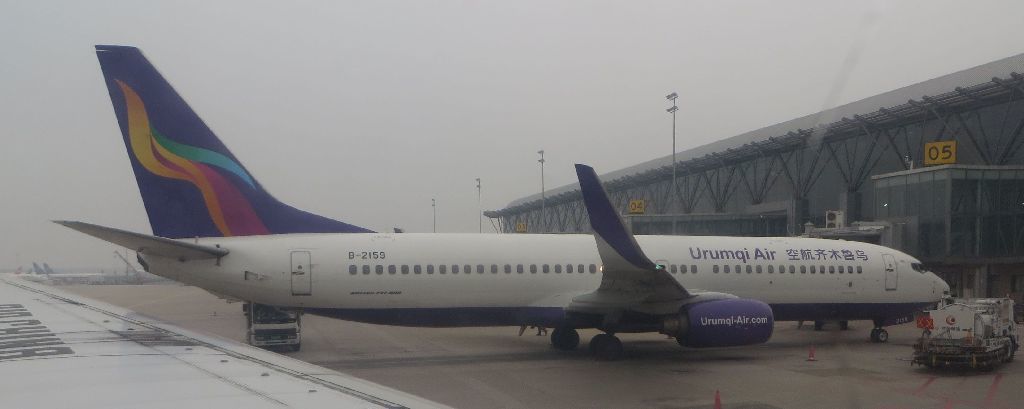
The vertical stabilizer’s livery, which I like, in front of that of CA, CZ and KA (the latter is most probably at one of the International / HK / Macau / Taiwan gates)
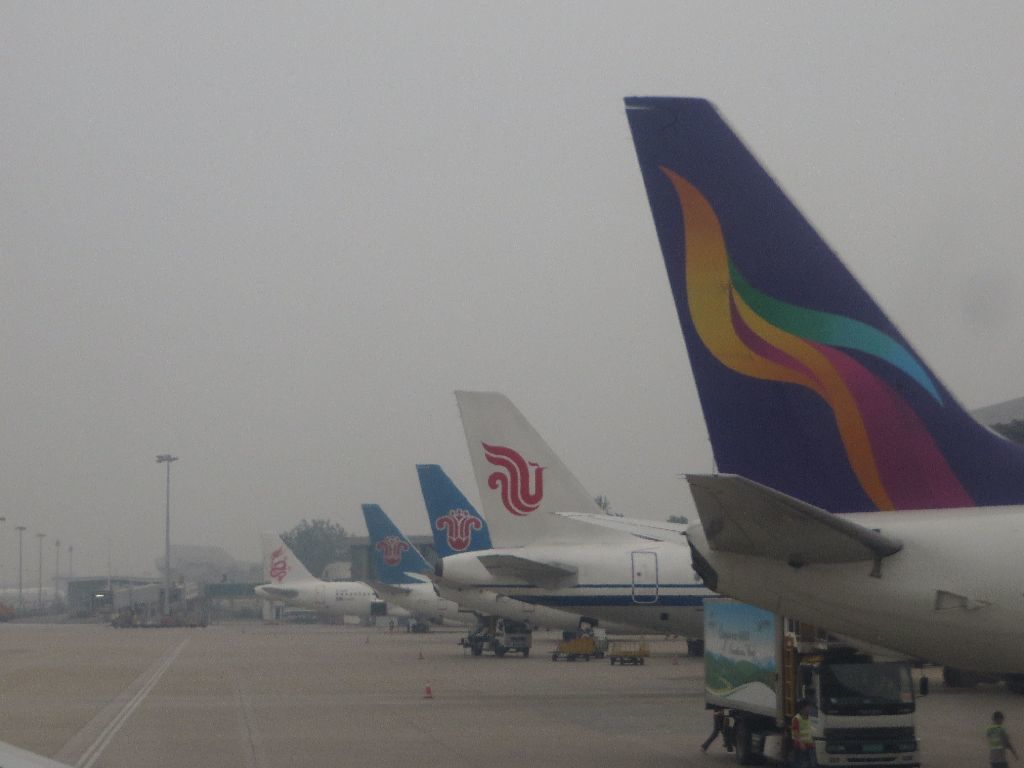
A rather misty view of the terminal

Departure of a Shanghai Airlines 737

Our time to take off. The wing is really not very clean.
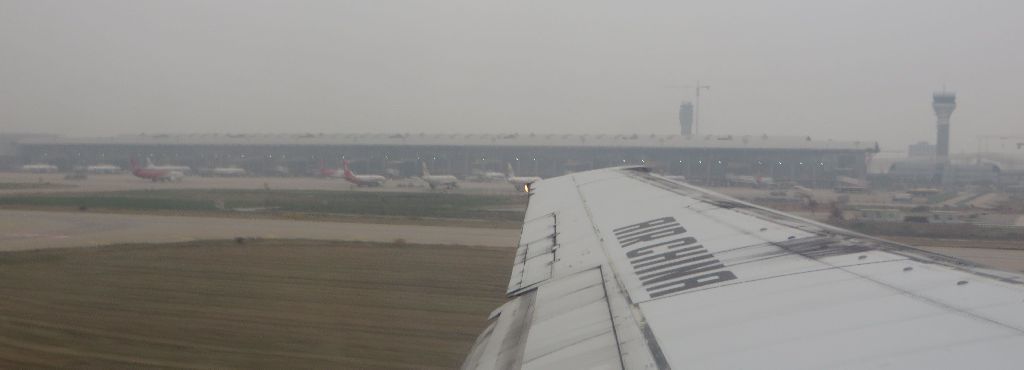
The shape of the terminal wing under construction which was shown on the map in the terminal shows clearly.
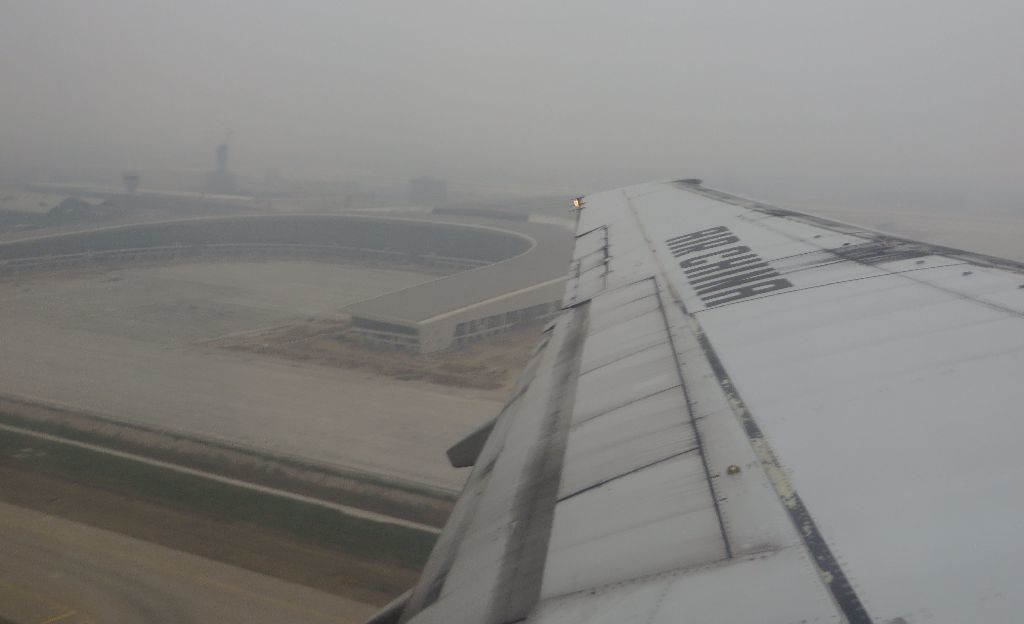
You probably guessed that we quickly reach the cloud ceiling
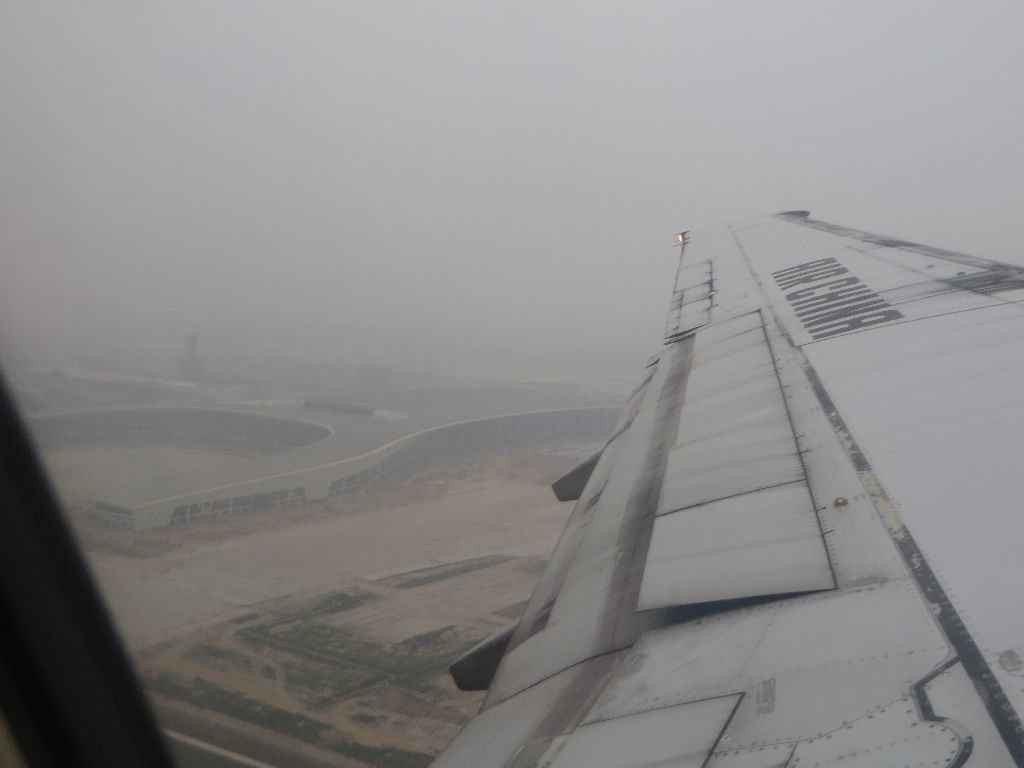
The FAs start the on-board service, which will be a short one.

Due to the duration of the flight, and in accordance to CAAC [the Chinese regulatory body], no food will be served.”
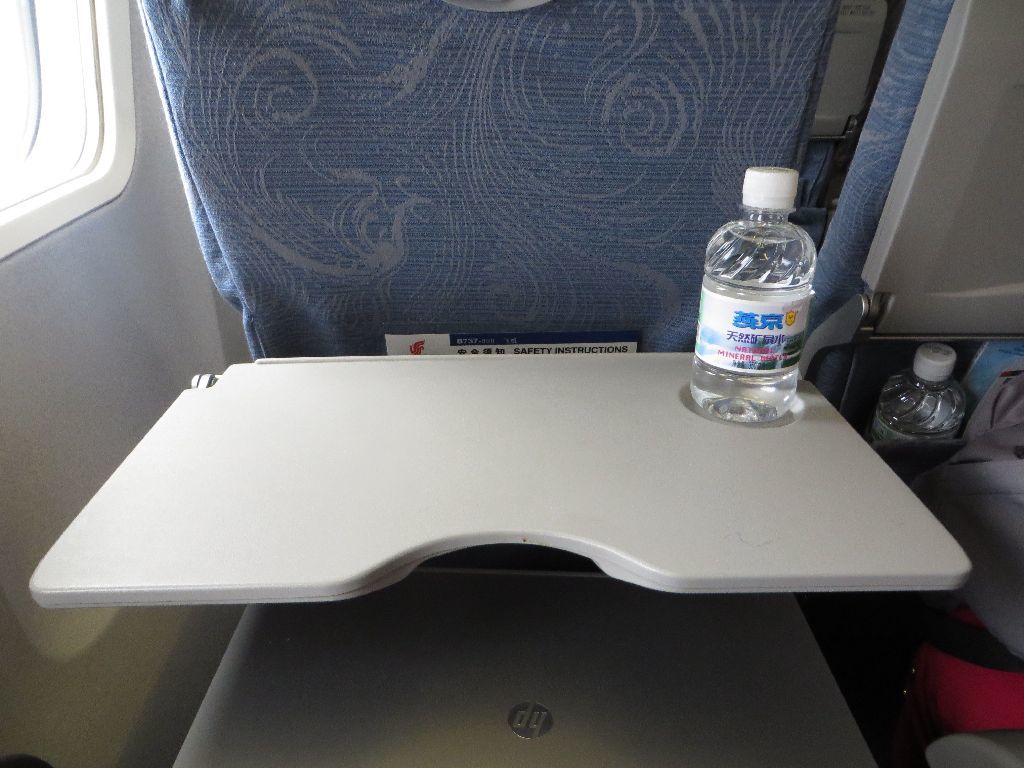
350 ml of water, and that’s it, for a flight which was exactly twice the price of the preceding PVG-CGO flight (779 RMB contre 390 RMB)! We did not have lunch, and do not have snacks, relying on the meal served on board. Furthermore, the time of arrival is such that we should not waste time having dinner in Beijing if we do not want to fall in the fast food category (which in Beijing is much more palatable than in the West, IMO, though).

Approaching PEK
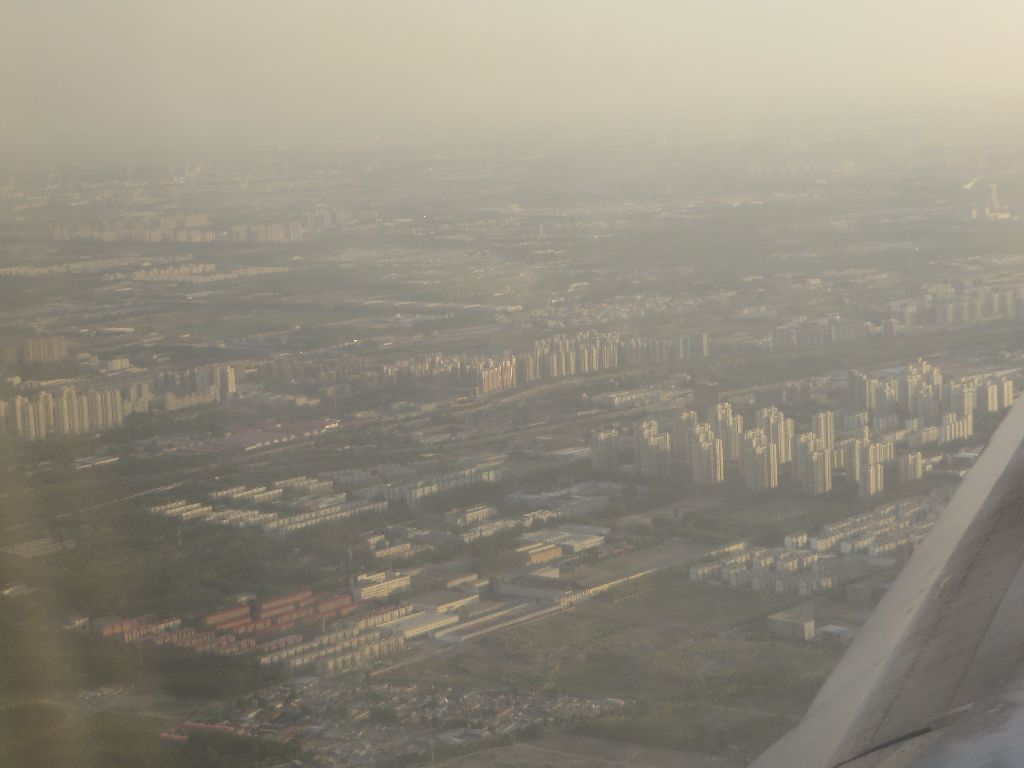
Beiijng’s Central Business District in the distance
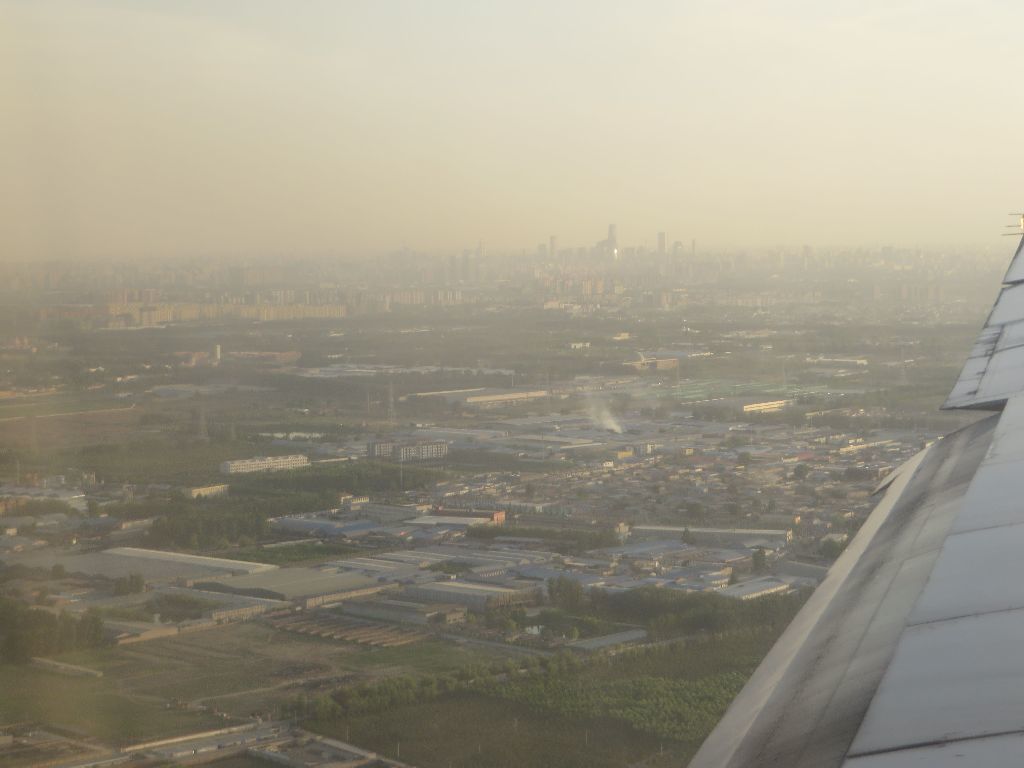
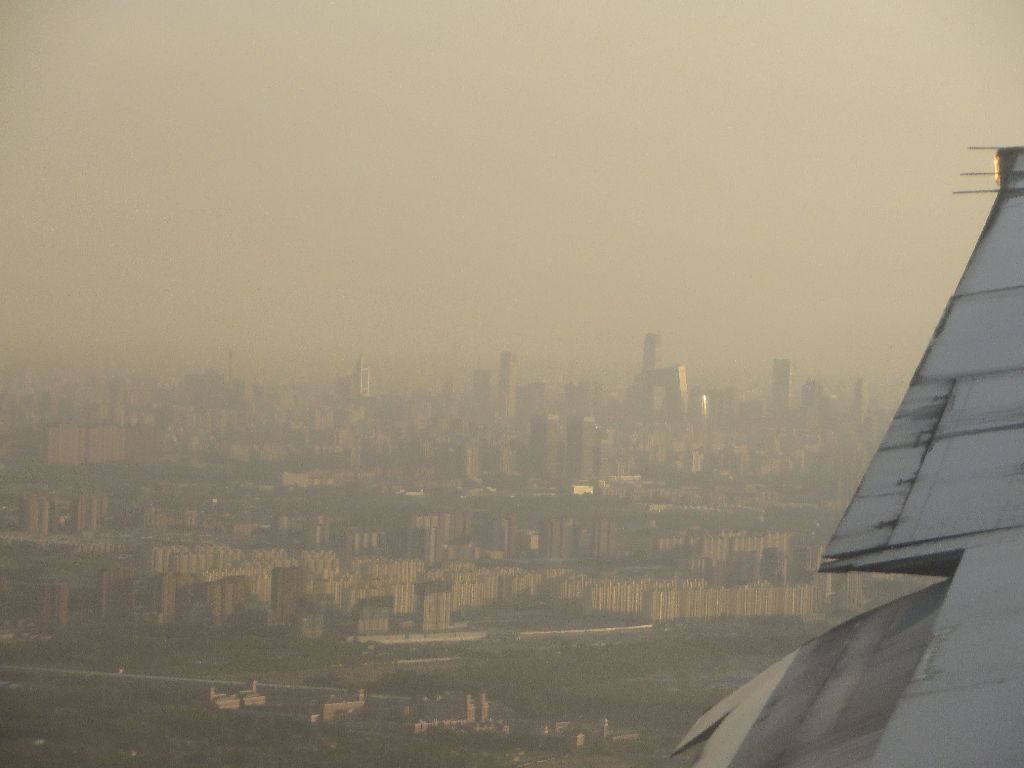
Despite maximum magnification, adverse lighting and pollution conditions, one can identify in the center the Chinese television headquarters, a landmark building designed by Rem Koolhas.
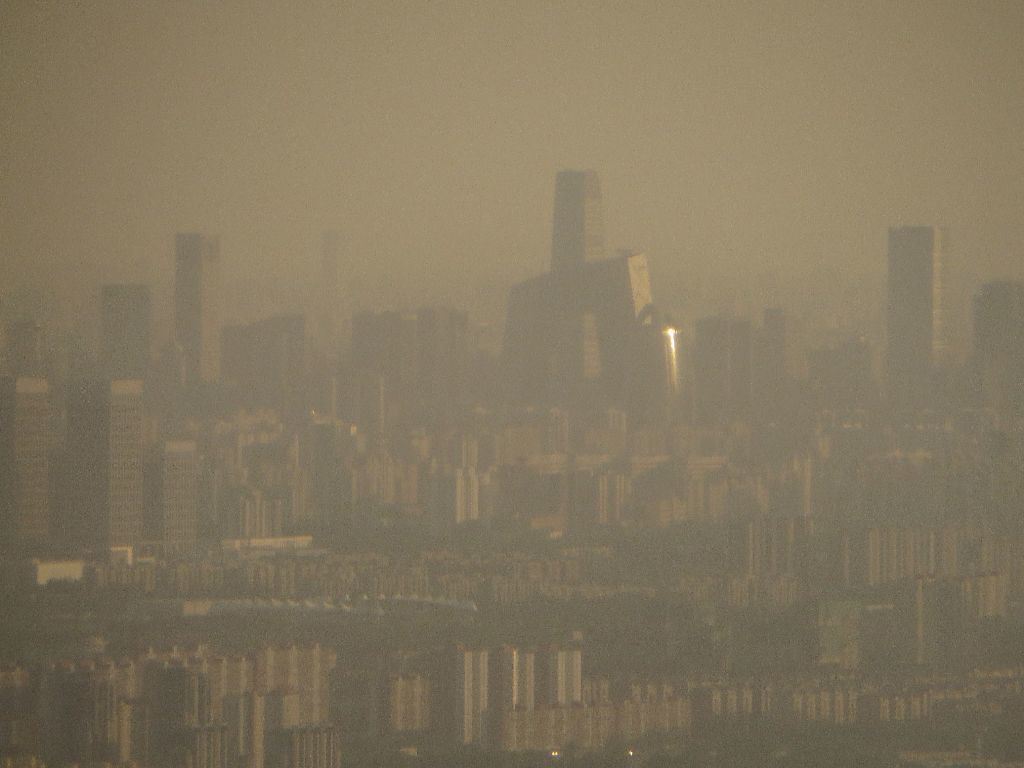
Another plane is landing on a parallel runway

Arrival in PEK right on time. Terminal 3’s size is so huge that it looks very flat from the outside.

An EK A380
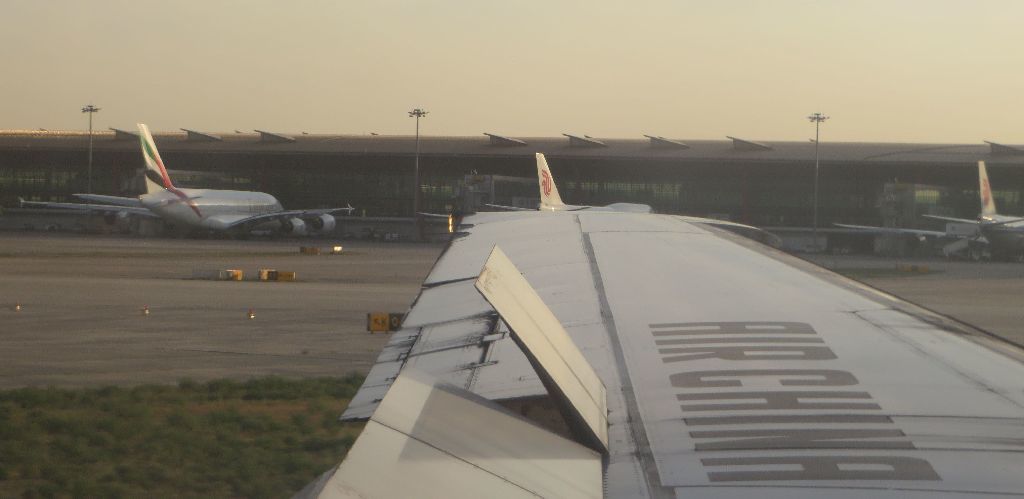
There are of course many CA planes, since this is their historic hub

A CA A320 has just arrived
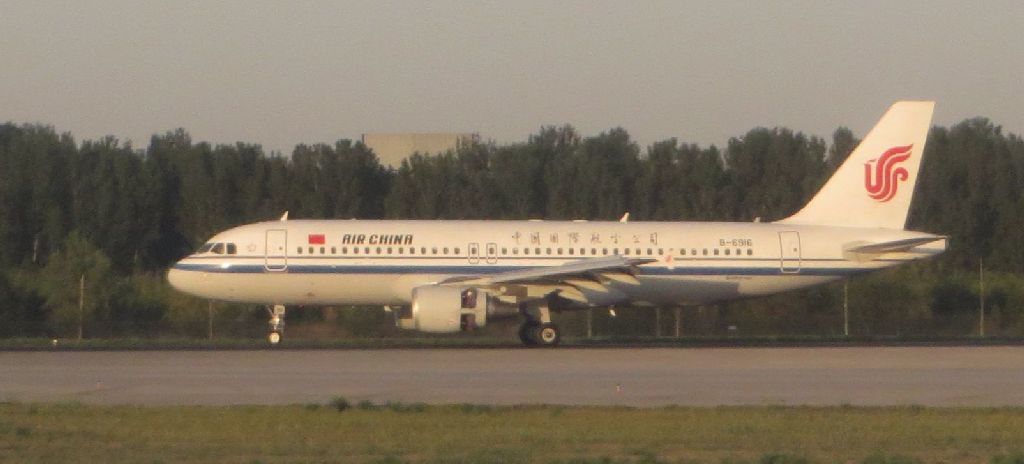
… while a CA 737 takes off (note the coexistence of Airbus and Boeing single aisle aircraft in the fleet)
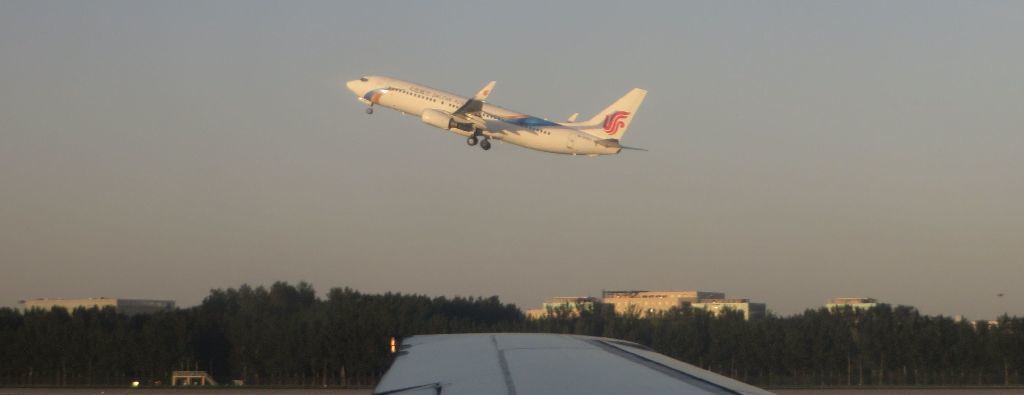
Reaching the gate next to a Shandong Airlines aircraft in a special livery

I admit I had never heard of that flower exhibit
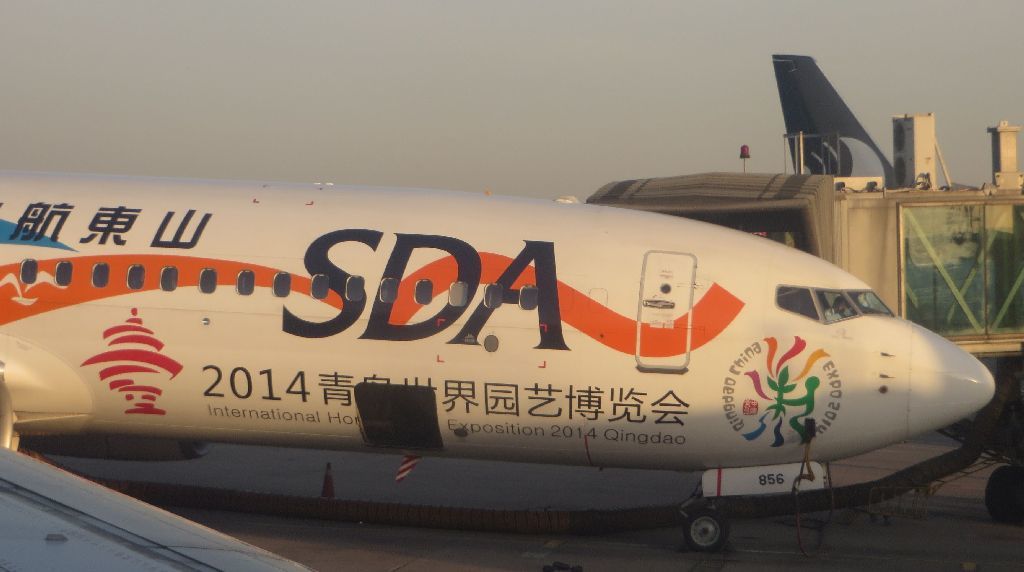
The SC 737 in special livery, from the terminal
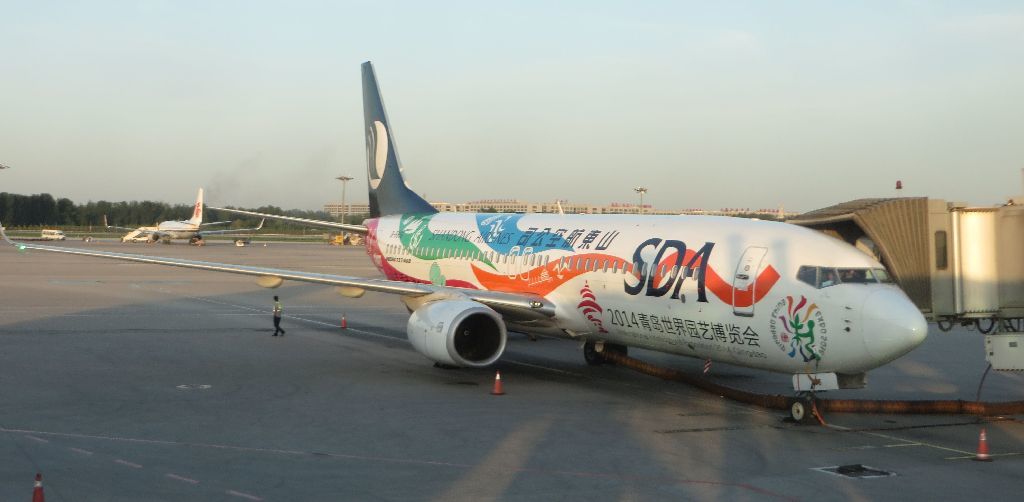
… next to another one in the standard livery
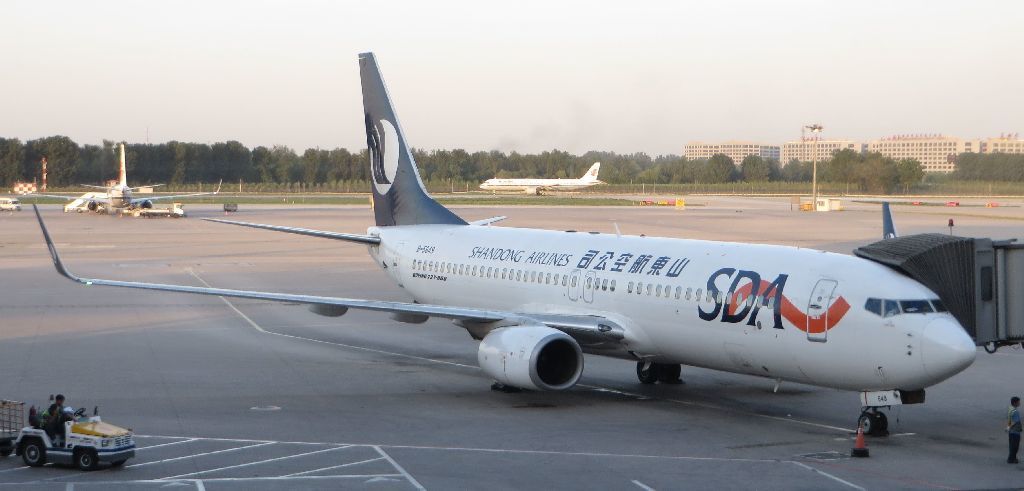
Last views of the cabin before leaving it
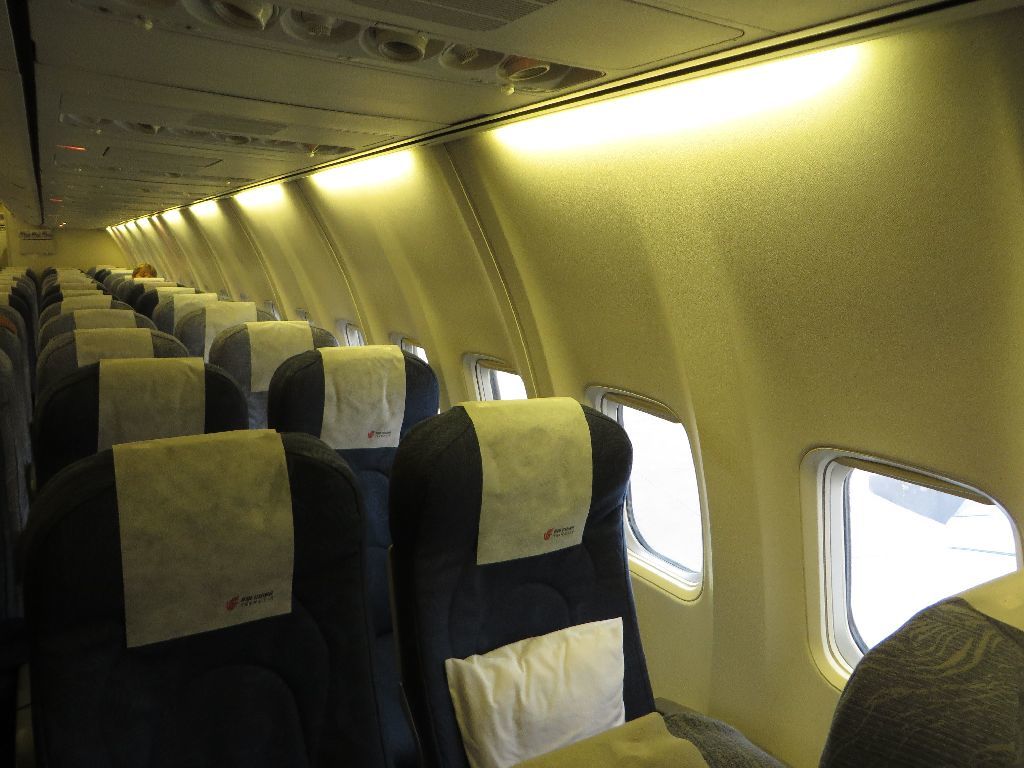

We can see Terminal 3D, which is isolated between the south (domestic) and north (international) triangular terminal sections.
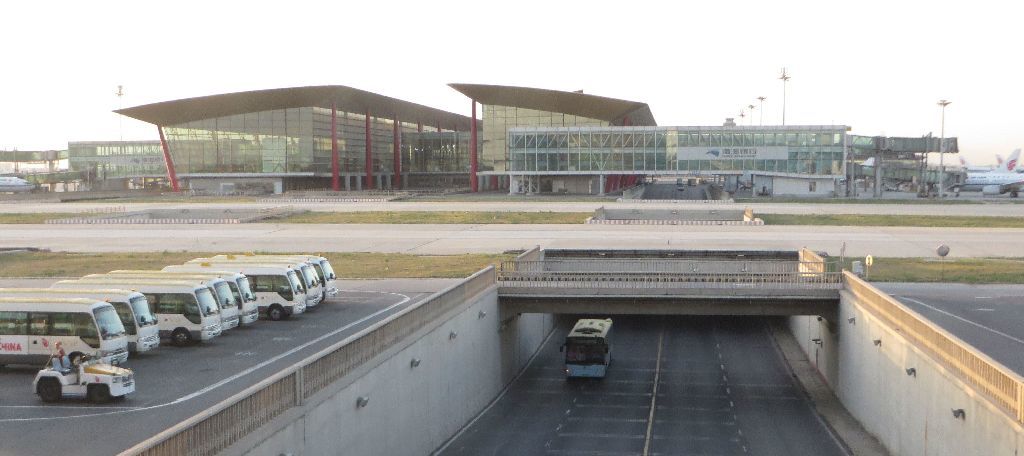
A sample of CA aircraft : 738
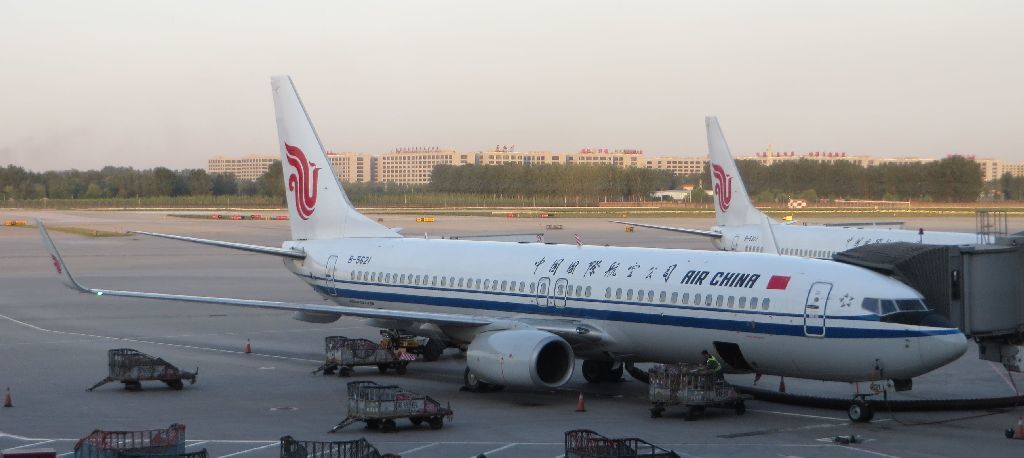
A320
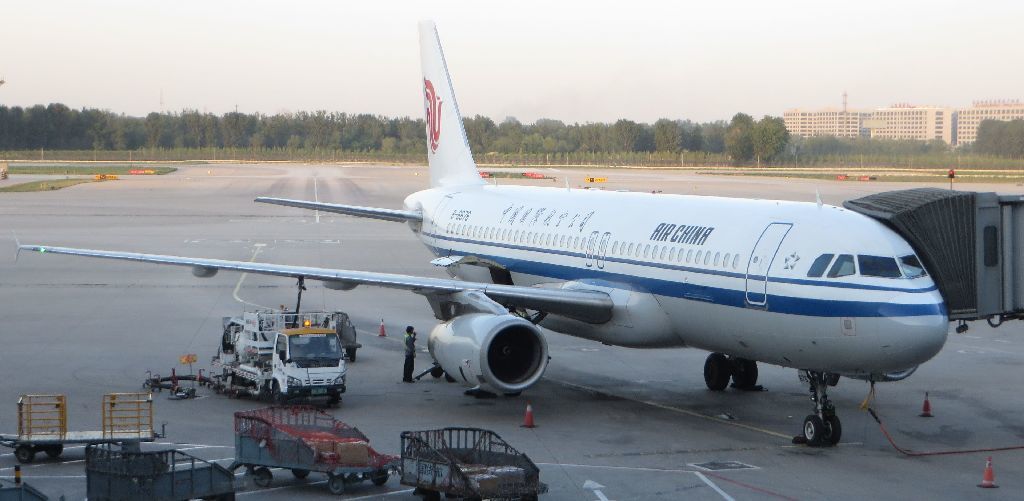
777
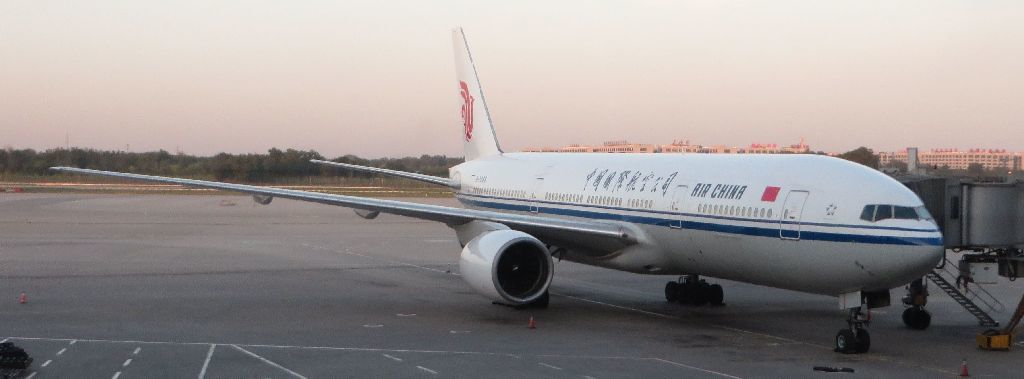
738 in special flowered livery
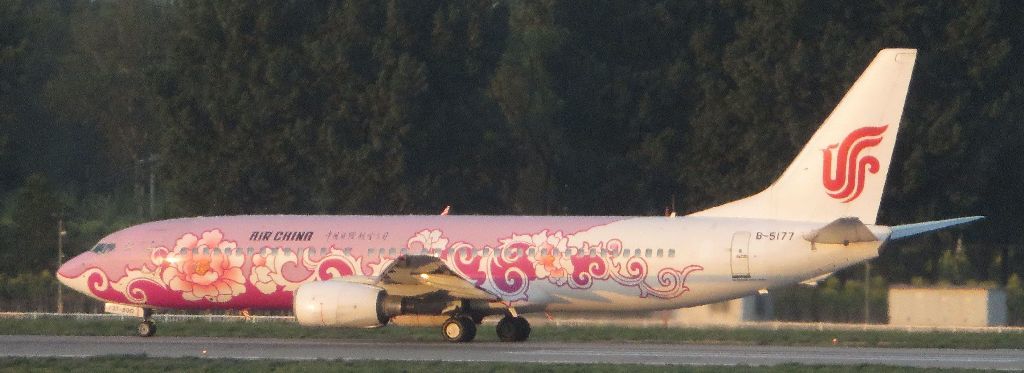
Arrival of a Sichuan Airlines A321
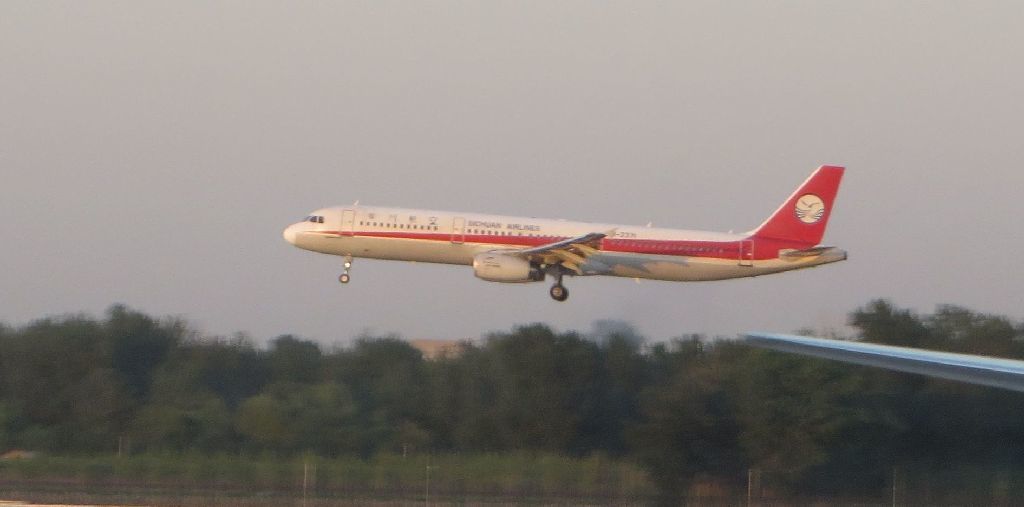
We should have gone upstairs to have dinner in the terminal; there was nothing landside at this level.
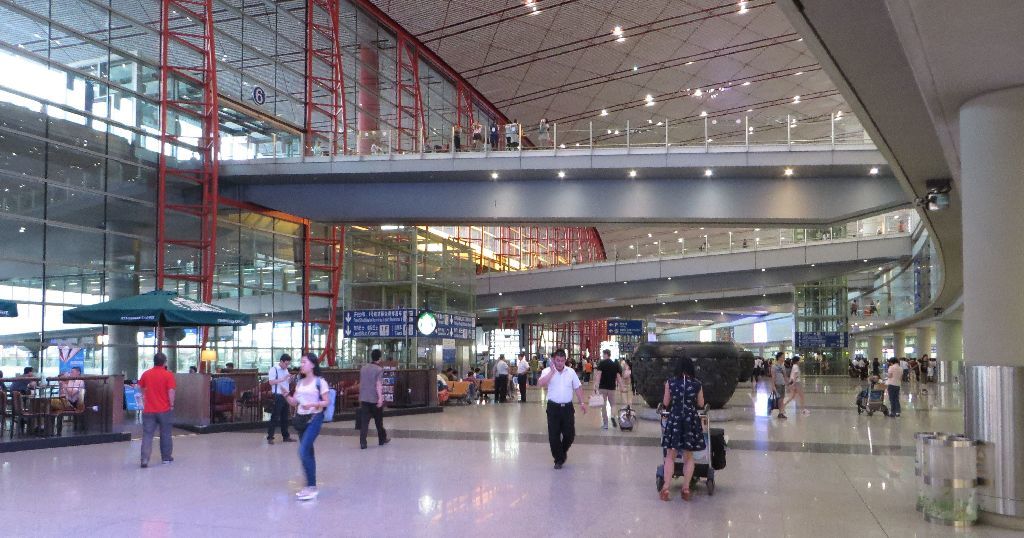
This is something new: it is possible to obtain a temporary Chinese driver’s license in exchange for your European one. I do not remember the details, but I remember reading that there was nevertheless a rules of the road test. Anyway, driving on Chinese roads is so wild, and since a foreigner is always wrong in case of an accident, I let others test this before I consider taking the wheel there.
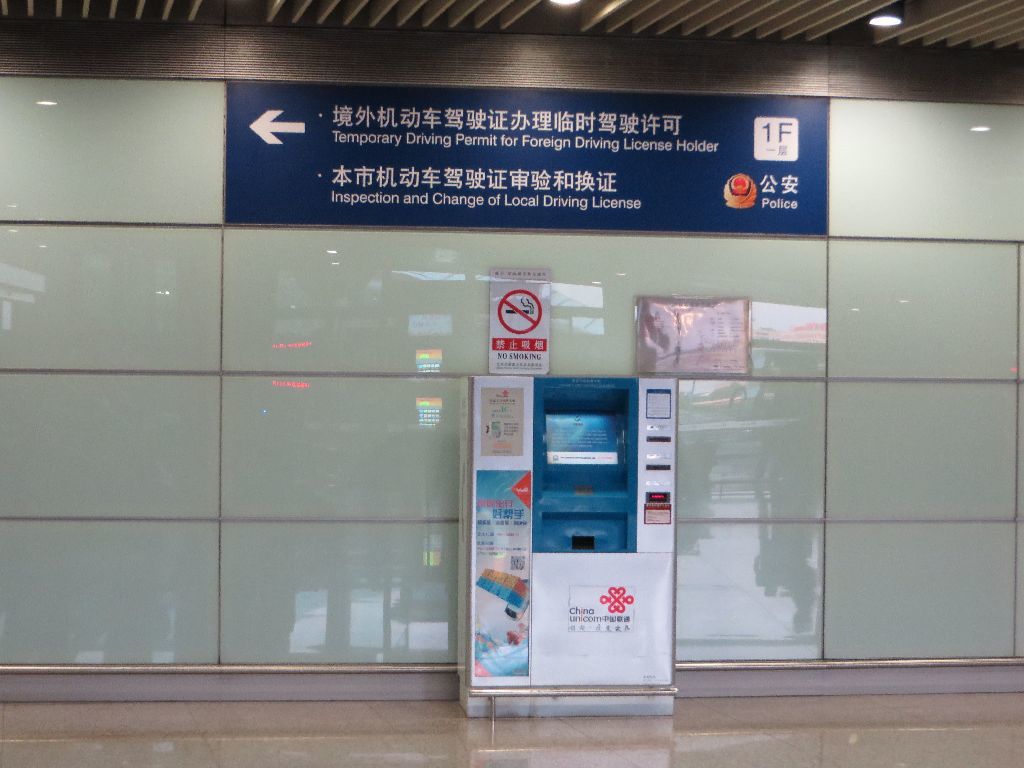
It is a two minute wait for a taxi, and that is not an empty promise
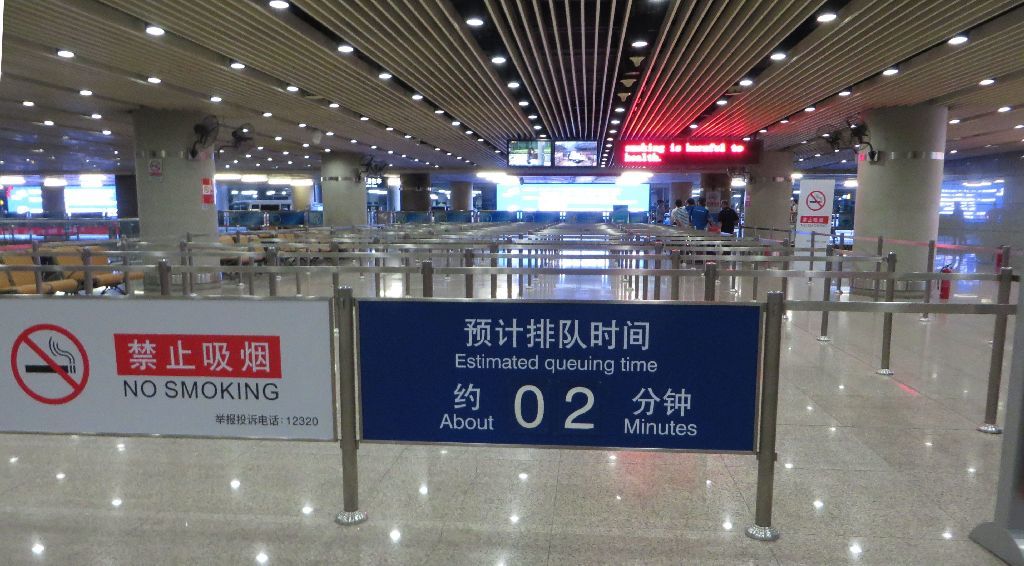
We were there in less than two minutes.
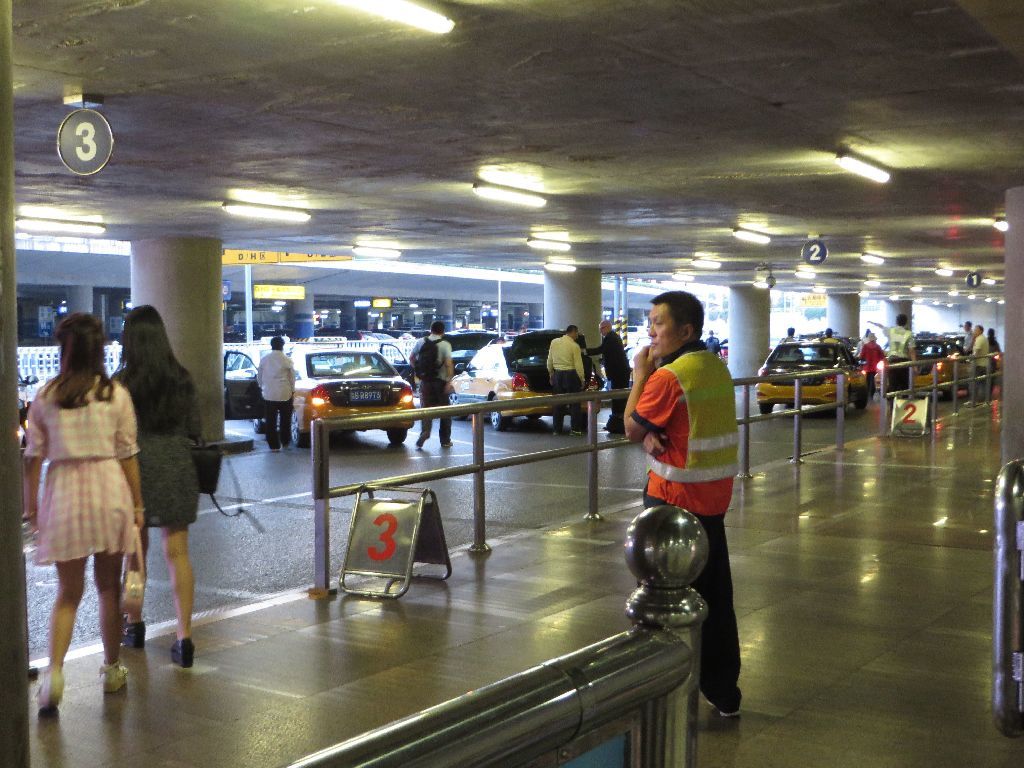
And hardly later, we were in a taxi, while a China Airlines aircraft was landing from Taiwan.

The expressway tollgate
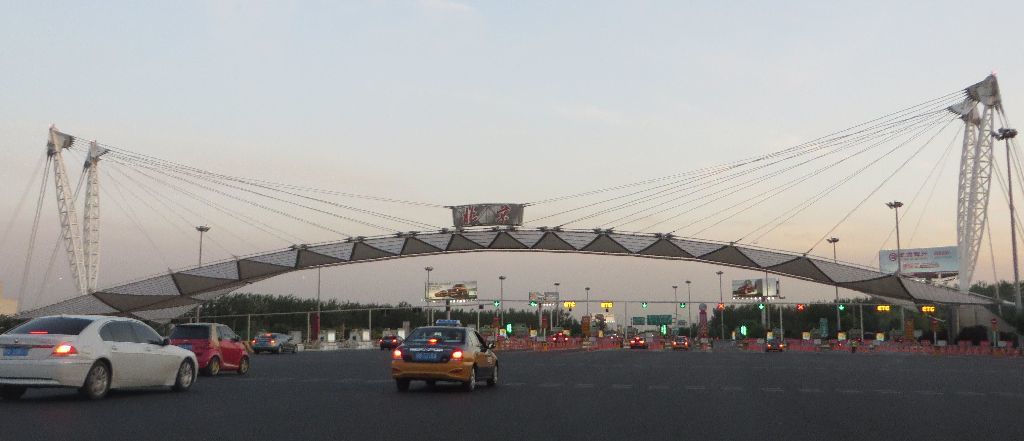
This taxi has a dashcam, to protect itself in the case of a voluntary accident: some Chinese, on foot or on a bicycle do not hesitate to cause a traffic accident for the sole purpose of demanding a cash compensation from the driver to close the matter.
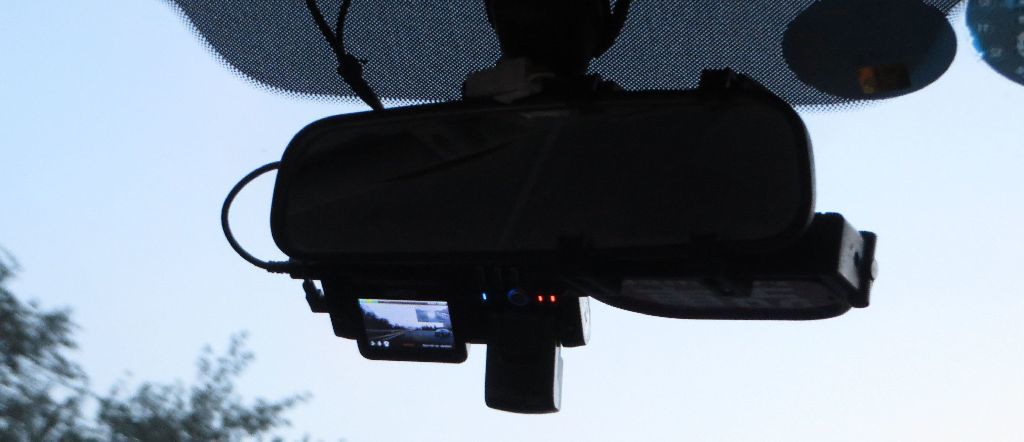
This is the end of the FR, and the beginning of an unusually avgeek oriented bonus. I spent the next day in a museum that few foreigners in Beijing visit, or even heard about. It took me some time to find and cross-check the access information on Chinese websites, but once you know how to get there, public transportation is a real (and dirt cheap) option. It is easier if you have a preloaded bus/subway card, but this is not absolutely necessary.
The first step is to reach the north end station of Subway Line 5, i.e. Tiantongyuanbei天通苑北Station. Using the subway network in Beijing is very easy, and this first segment should not require specific explanations.
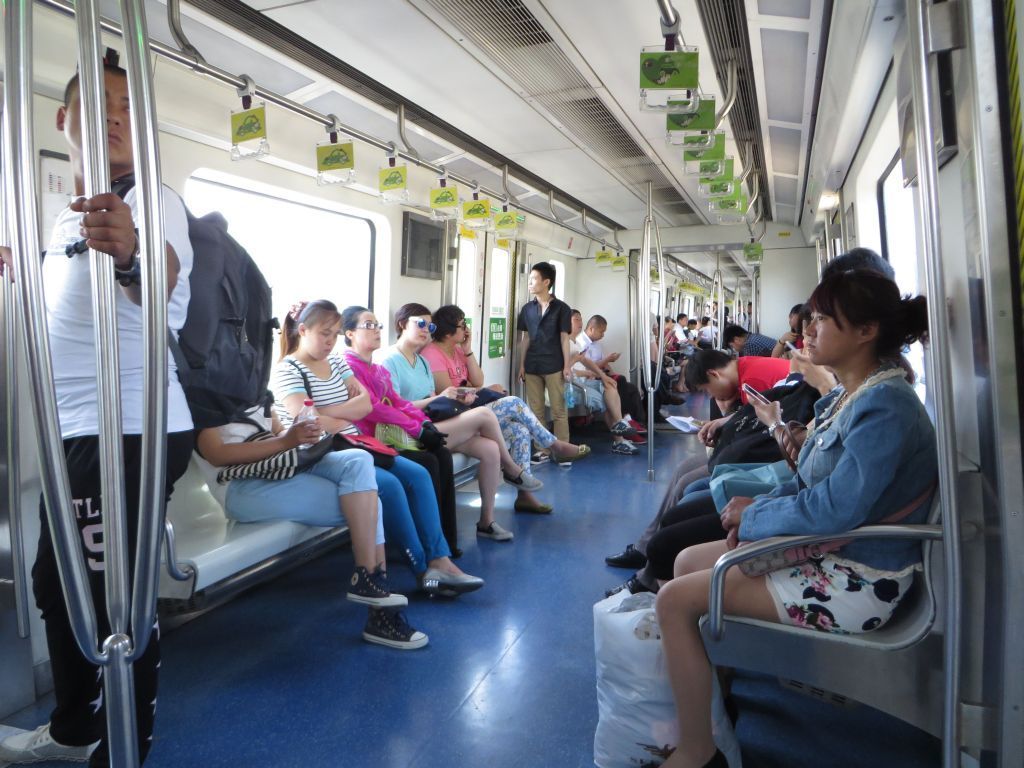
When you leave the subway at the end station, you find a bus station (this picture was taken on the way back, when I had more time)
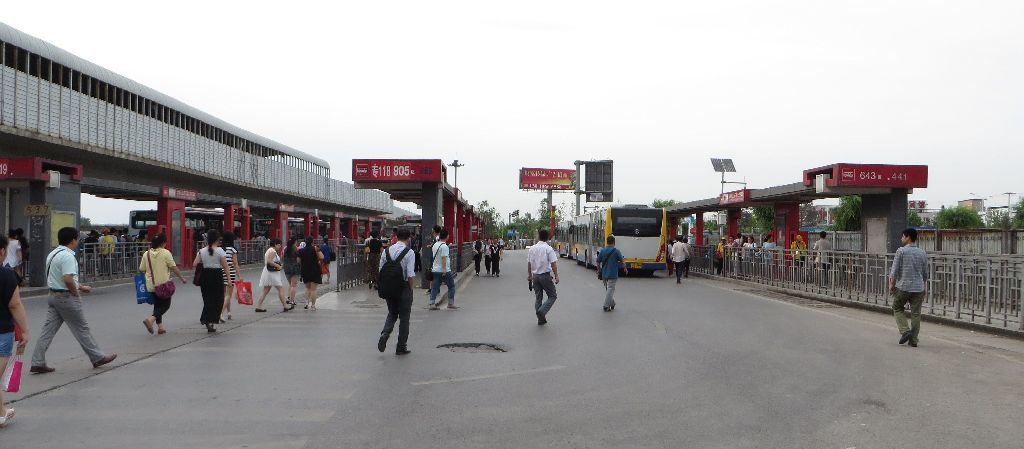
… and you can recognize that the stop for Bus #643 is on the far right.
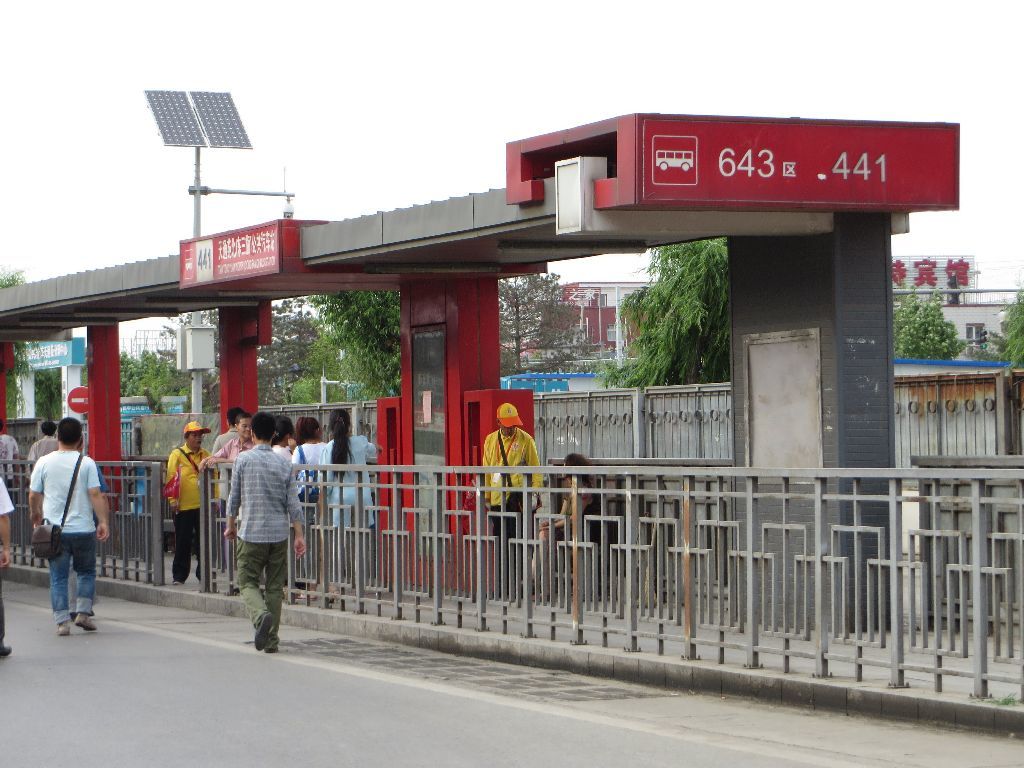
And off you go ! You are authorized to feel somewhat anxious at the thought of leaving the easy to navigate environment of the subway into the unknown suburban bus world.
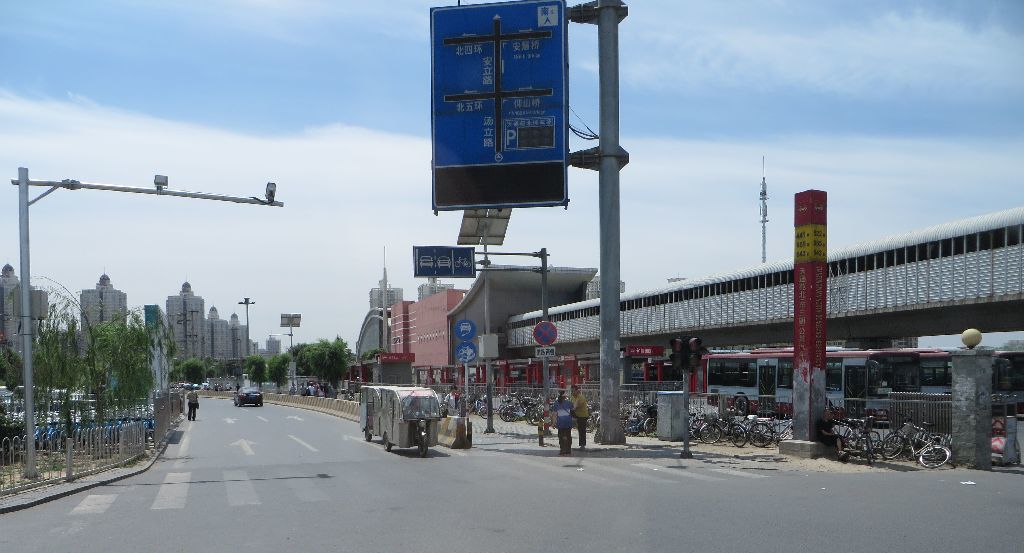
You have two trump cards, though. First, you know that the stop for the Aviation Museum (航空博物馆Hangkong Bowuguan in pinyin, the standard transcription in Latin alphabet) is the 15th one from the subway station. This sign is that at the museum’s bus stop, which is pointed at by an arrow. The numbering is somewhat haphazard, but what counts is having the list.

The second trump card is that the buses are equipped with a passenger information display which shows the name of the next station when approaching it, in Chinese ideograms.
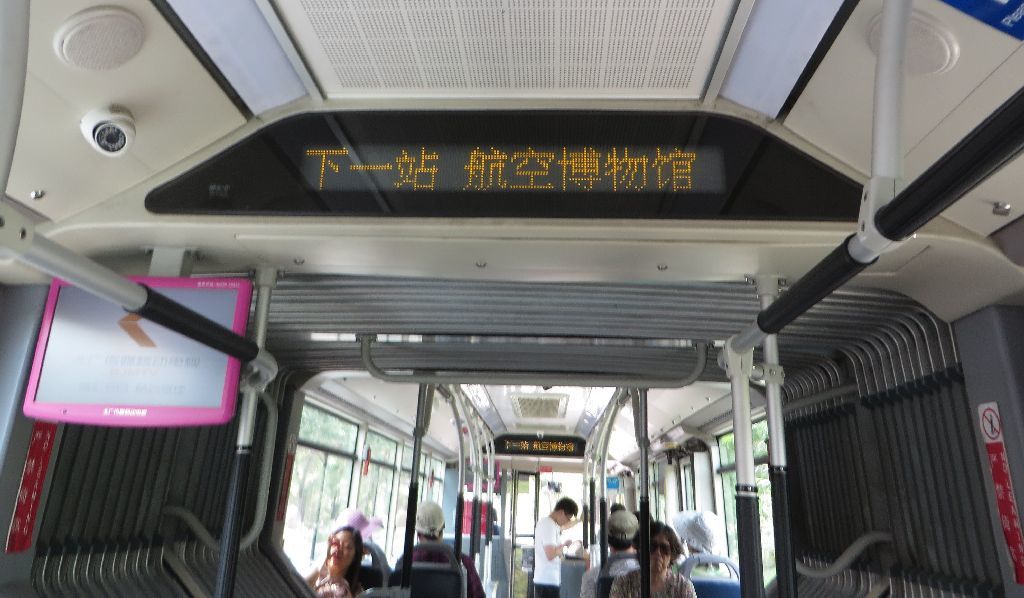
Next stop, Aviation Museum
And then in pinyin transcription, both twice

You leave the bus after validating your preloaded bus pass or given to the bus staff a few yuan, and your anxiety rises one notch while seeing the bus depart

… leaving you in the middle of nowhere
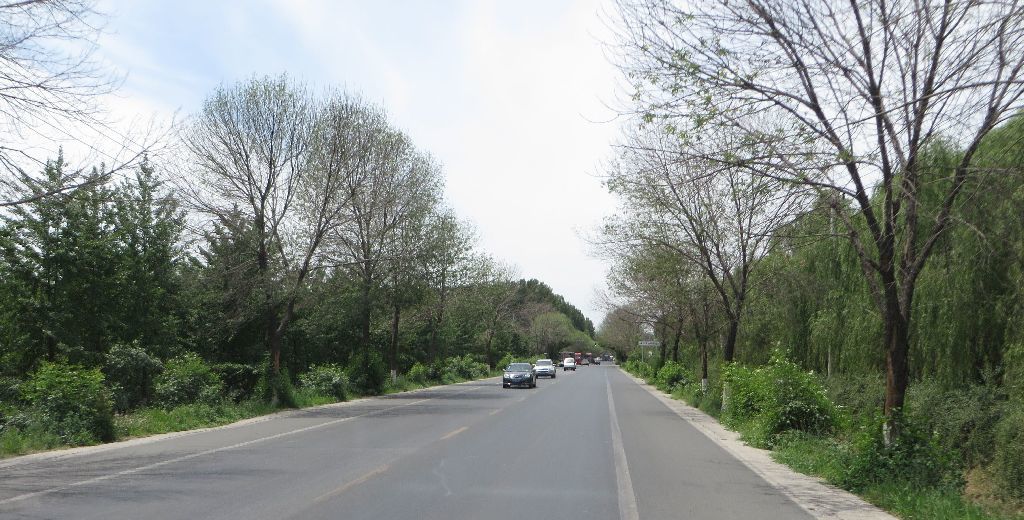
I outrageously exaggerated the situation, because this is in fact the view looking back on that road, but there is a crossroads 20 meters after the bus stop, and you can’t miss this monument on the right.
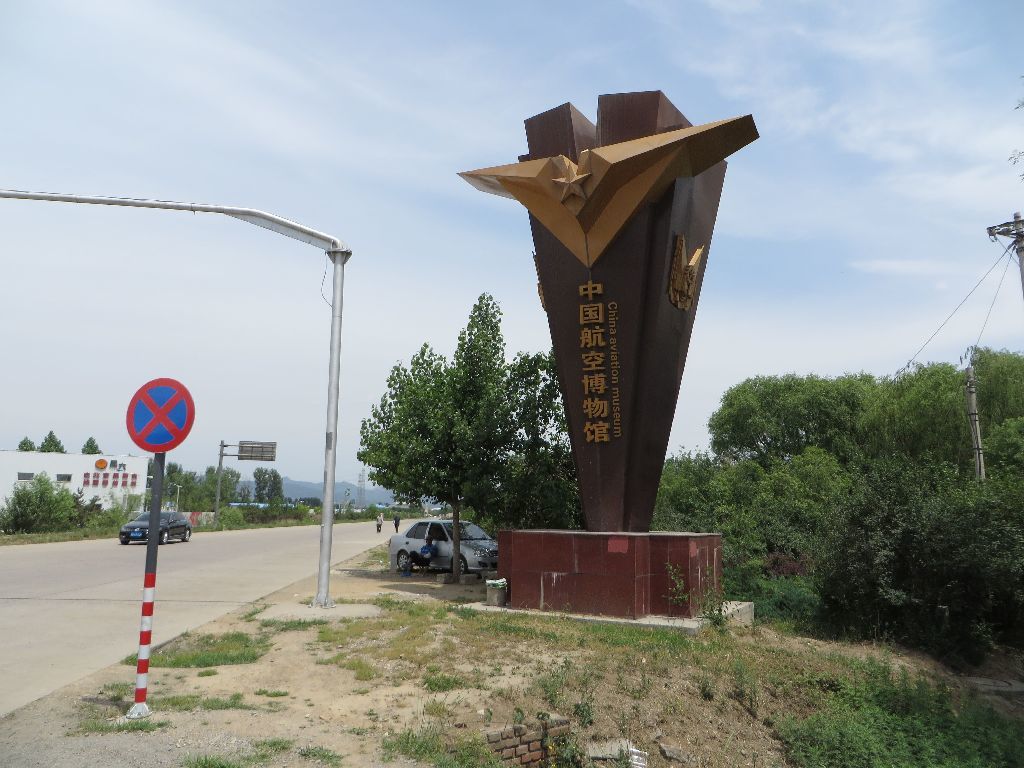
It says (vertically) China Aviation Museum, and it is obvious that you should take the same direction as this young girl who does not go all the way to the museum, but was wise enough to have taken an umbrella to protect herself from the searing heat from the sun on that kilometer long straight line.
This oversized road was actually a taxiway linking two air bases, one of which now holds the museum.
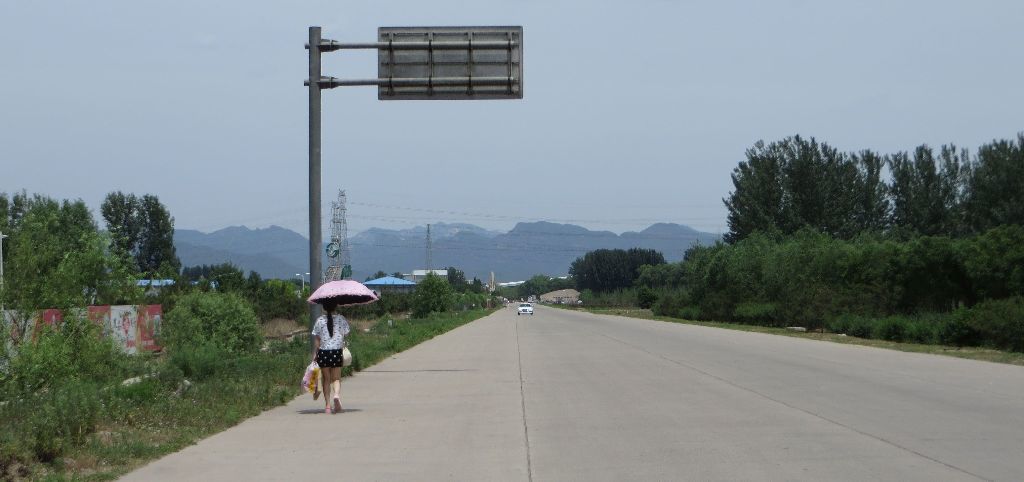
You are passed by dozens of buses of kids on a school outing.
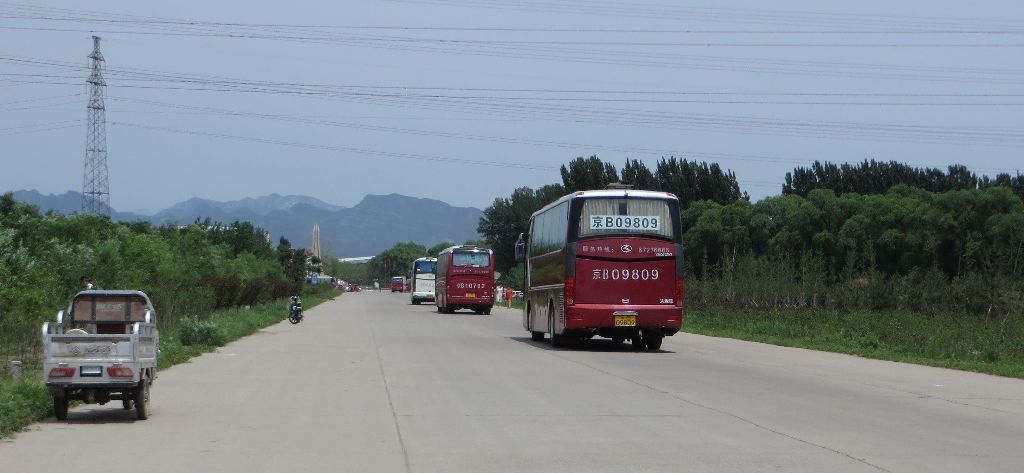
These buses unload hundreds of kids who will not be a nuisance in the museum, because there is so much space there.

From (for instance) Dongzhimen station on Line 2, it took you about 2 hours travel time, and with a preloaded travel pass, it cost you a total 6.5 yuan, which is about 1 USD. It costs slightly more if you pay cash. The way back is much easier to navigate, since you only need to take a #643 bus in the reverse direction to the end without needing to check where you are. Do not worry about taking your time in the museum: the buses run long after the museum closes at 5 pm.
Admission in the museum is free; this security check system is disused. Some parts of the museum require a 20 yuan fee, which does not add up to much.
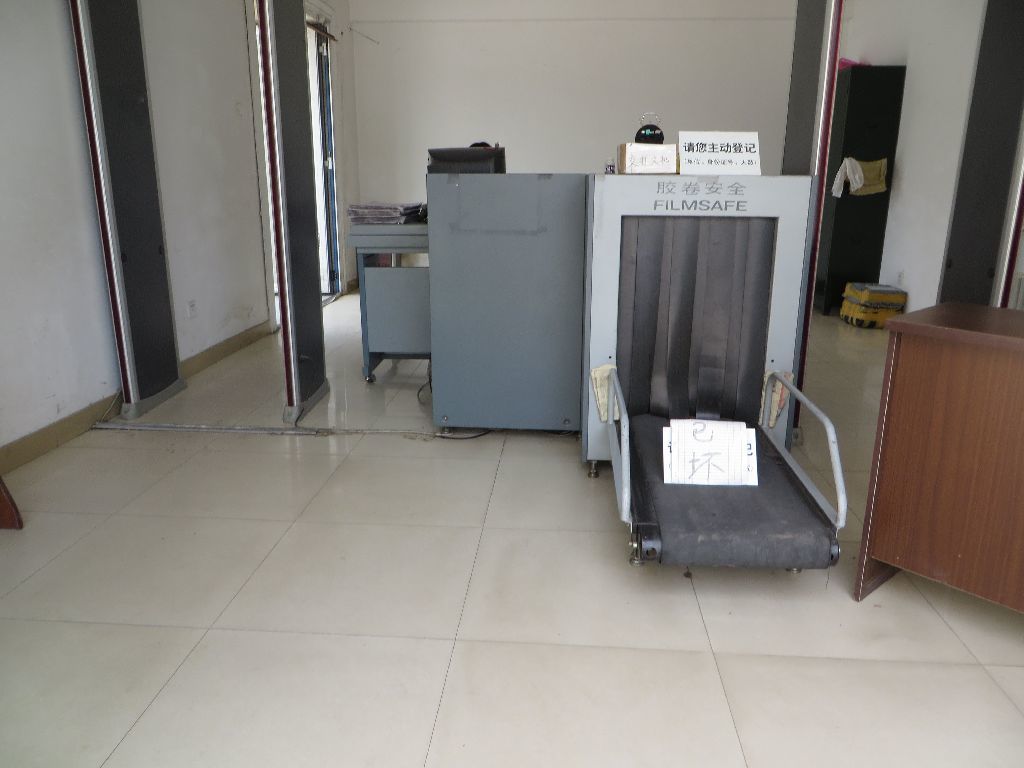
This is the plan of the museum, but it is not really needed for visiting, because it is easy to understand the overall layout of the exhibits.
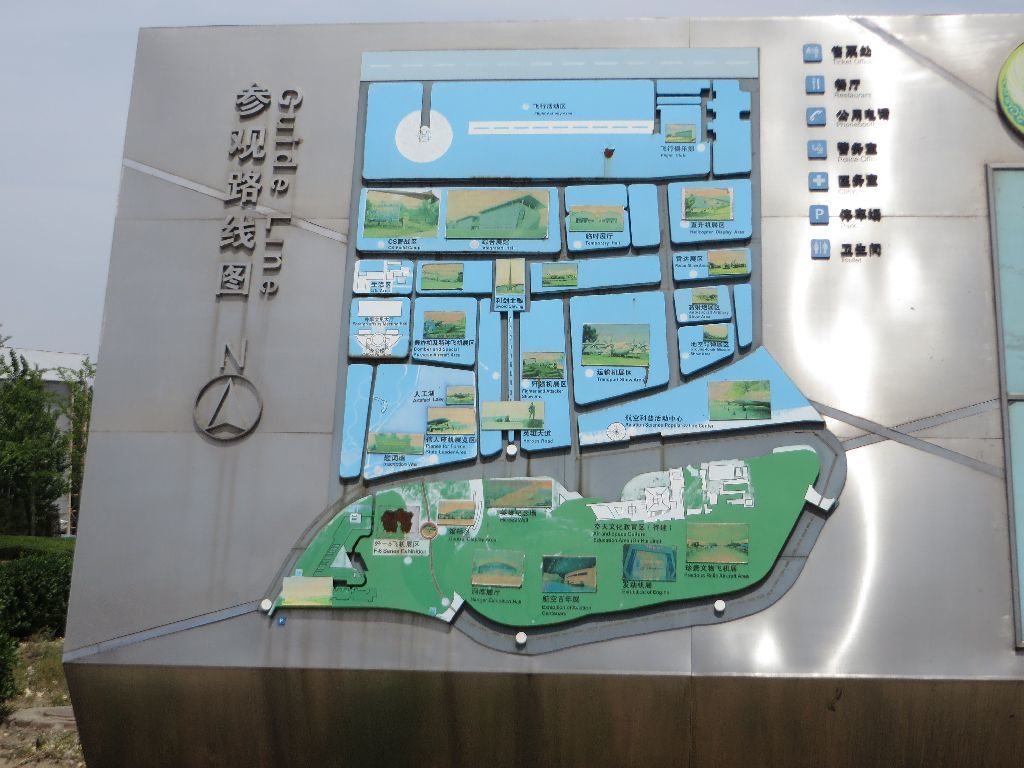
You will be quickly attracted by “MiG Alley (as nicknamed by the few Western visitors, as a reminder of the notorious air dogfight area above the present Chinese – North Korea border at the time of the Korean war) : an incredible row of Korean War MiG-15, all in mint external condition.


Front view, with its two 23mm and single 37mm cannons.
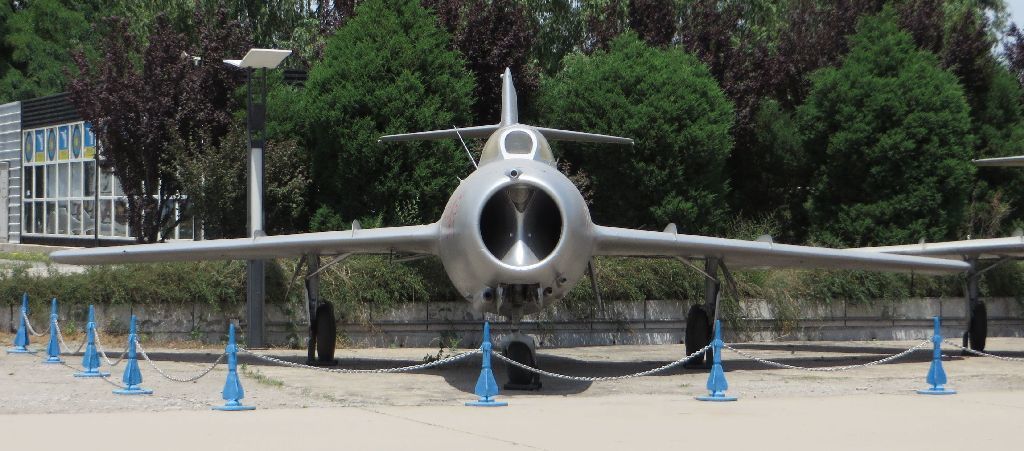
The MiG-15 was a single seat fighter, but there was a two-seater trainer version too
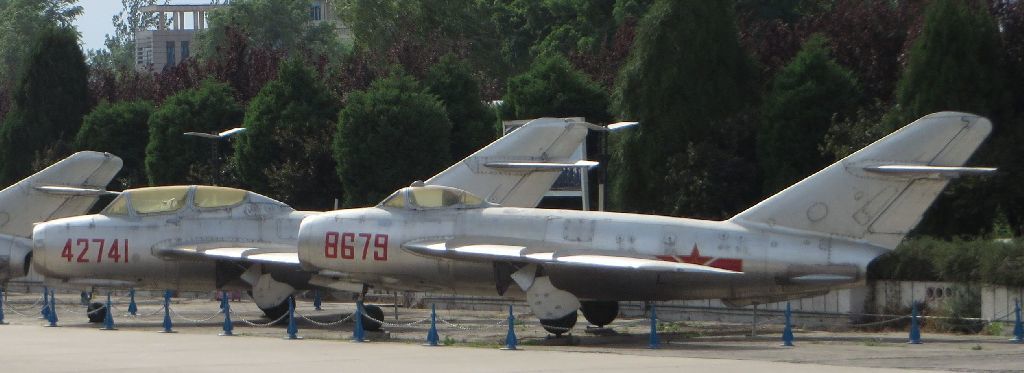
Don’t go too far in that direction, because you will have a chance to walk all the way from the far end after visiting a must-see exhibit.
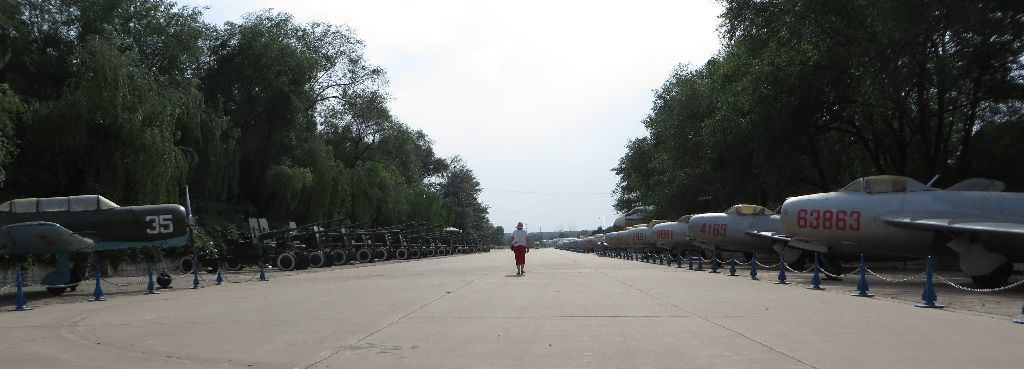
To the right of J-12 Nanchang,

… at the end of a wide alley, there is the entrance of an artificial cave digged in a hill when this was the now disused Datangshan air base.
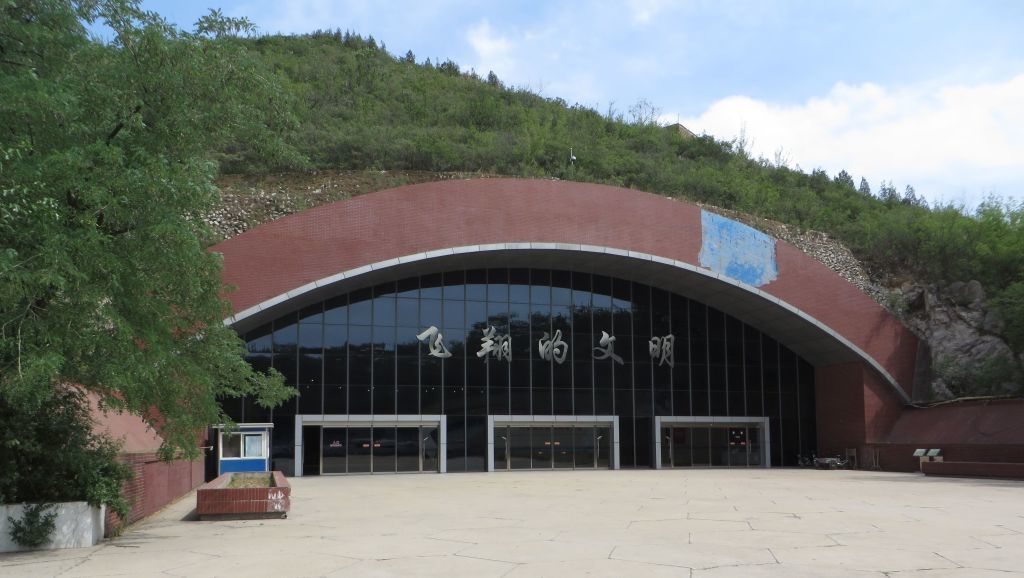
There is a small fee for getting in, and the first part on the history of aviation, where the signs are in Chinese only, will not be of much interest to you (What is written and what is NOT written about Taiwan is interesting, though, if you can read it), but you eventually reach this treasure trove:
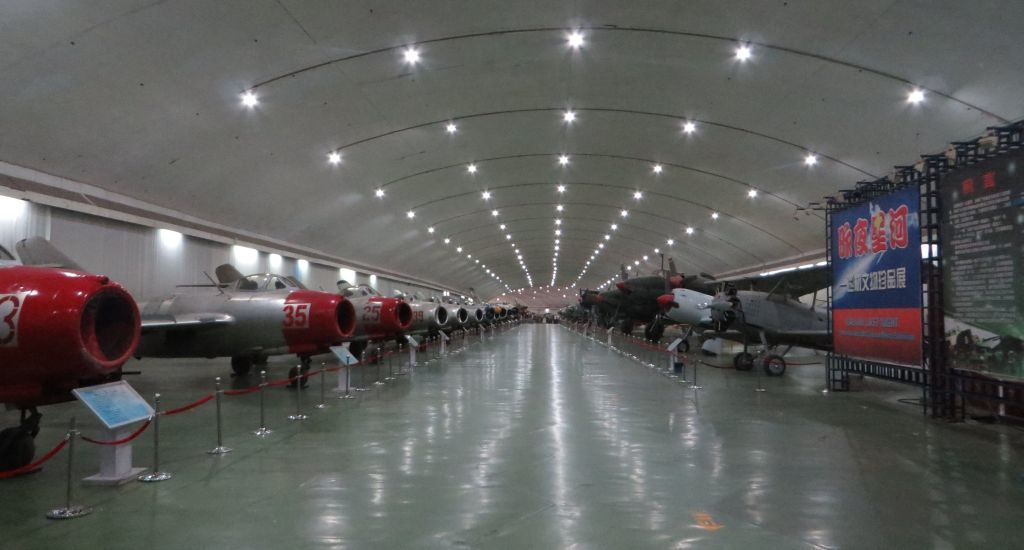
A neat lineup of vintage military aircraft, made seemingly endless by the fact that the tunnel has a bend in the distance. They are evidently mostly Soviet made, then Chinese-made after the Chinese-Soviet break-up in 1960, but there are some exceptions. Nobody can ignore that this F-86 Sabre has been donated to the museum by the Pakistani Air Force: it is written on the plane itself. This was the type of aircraft opposed by the Americans to the Chinese and Soviet MiG-15 during the Korean War.

On the other hand, whereas most aircraft in the museum have a detailed bilingual sign, this one does not have any, because it is impossible to comment the presence of this aircraft in this museum in a politically correct way.
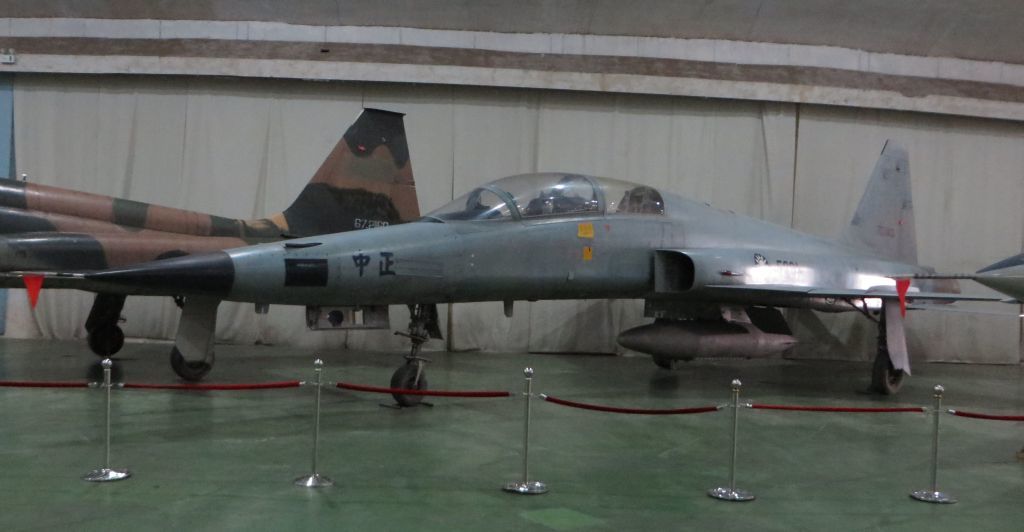
中正, on the nose of the aircraft is one of the Chinese names of Chiang Kai-shek, and this blue twelve branch star roundel , is the emblem that Taiwan inherited from the Kuomintang. This Northrop F-5 registered 5361 / 70343 was that of Taiwanese Air Force Major Huang Zhi Cheng, was defected to Mainland China on August 8th, 1981. Note that the Chinese did not return the aircraft, as is customary in such a circumstance.
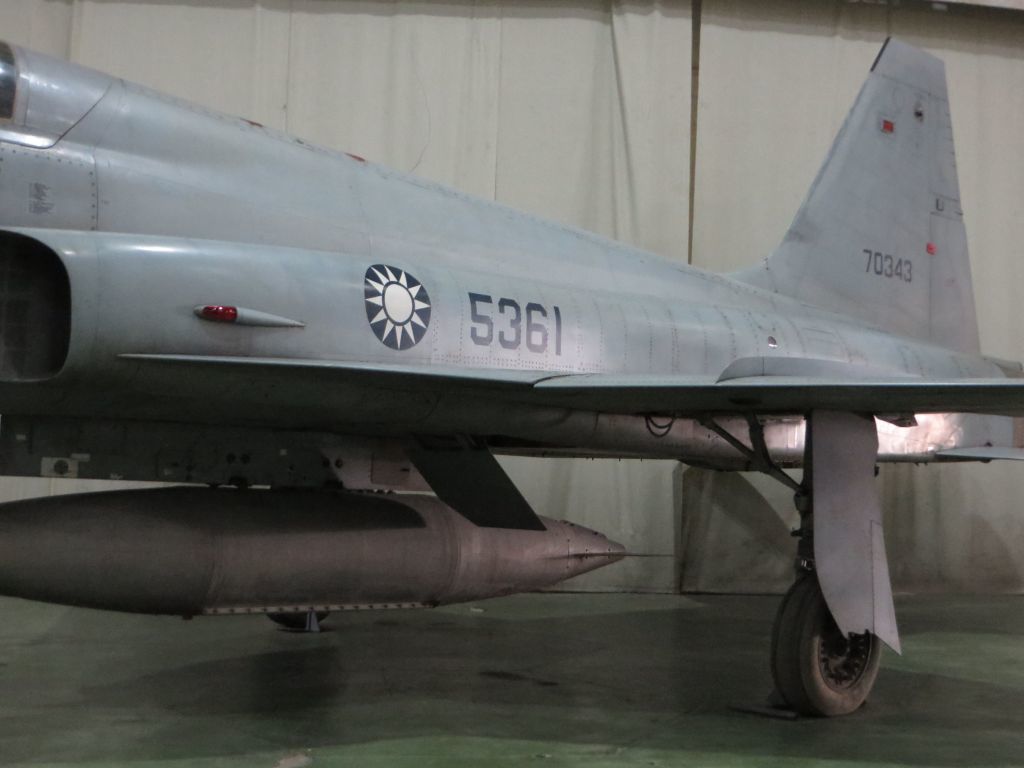
The vast majority of the 300 some aircraft on display there is military, but there is more than enough to illustrate civilian aviation for a Flight Report.
Some Western made planes: this DC-8 was a eye surgery plane-hospital which was offered to this museum when the charity which operated it replaced it by a DC-10.

There was a foiled hijack attempt on this Vickers 843 Viscount on 30 July 1982, according to the sign, but I have not found any detail on that incident on the internet.
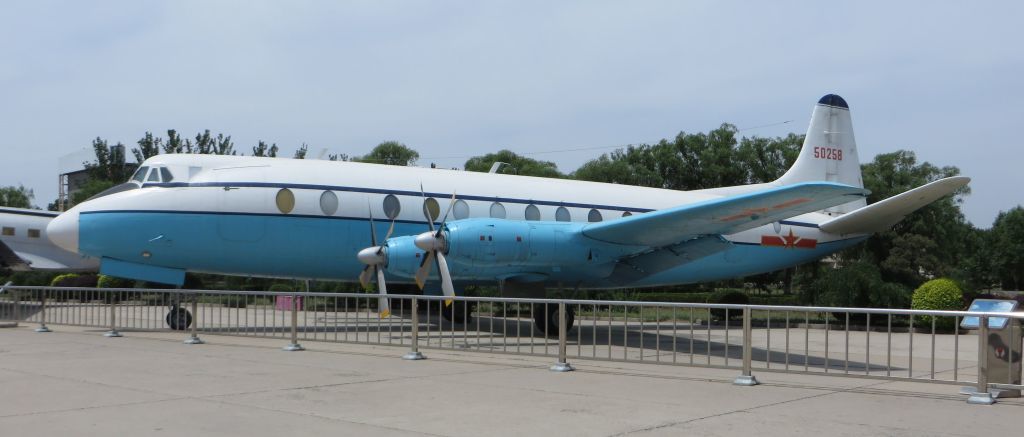
Hawker-Siddeley 121-2E Trident
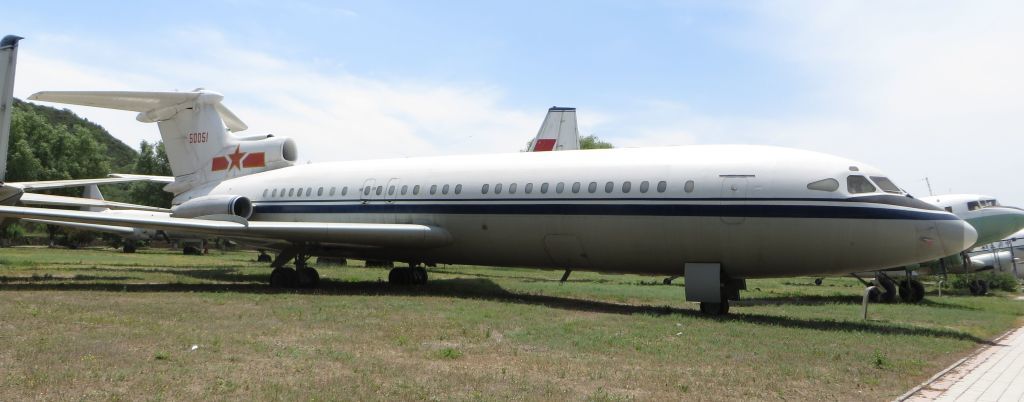
Now the Soviet block with this An-12
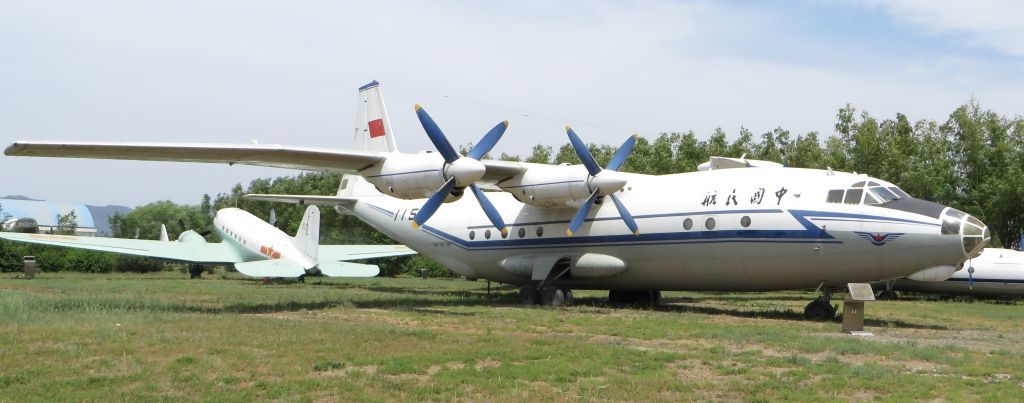
An-24
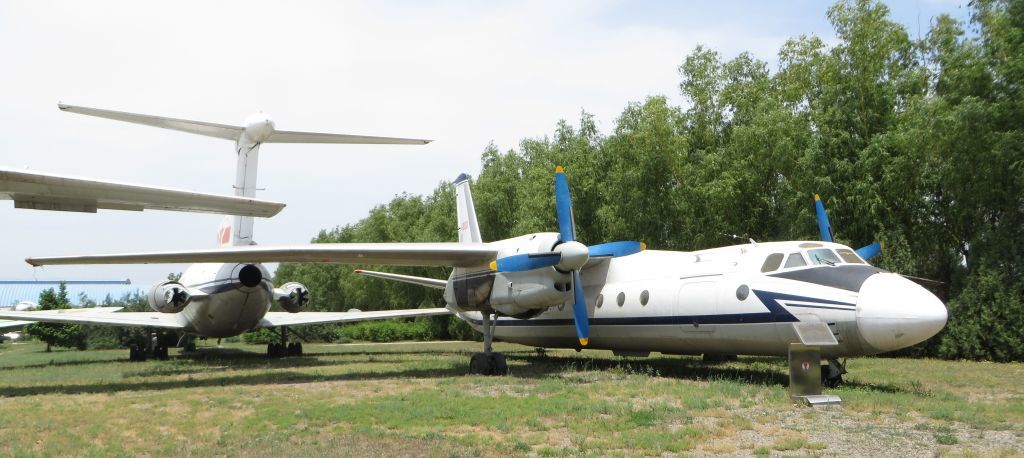
Tu-124
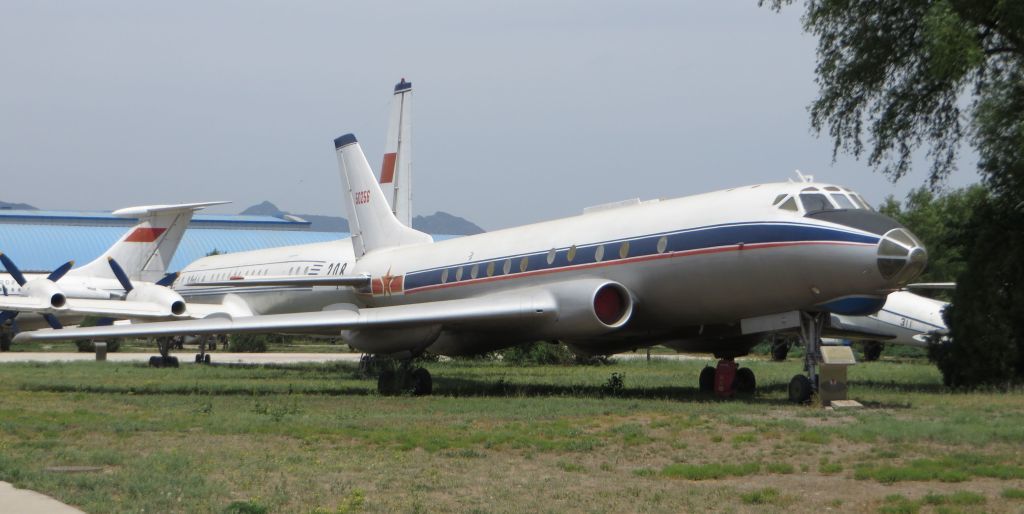
Il-62
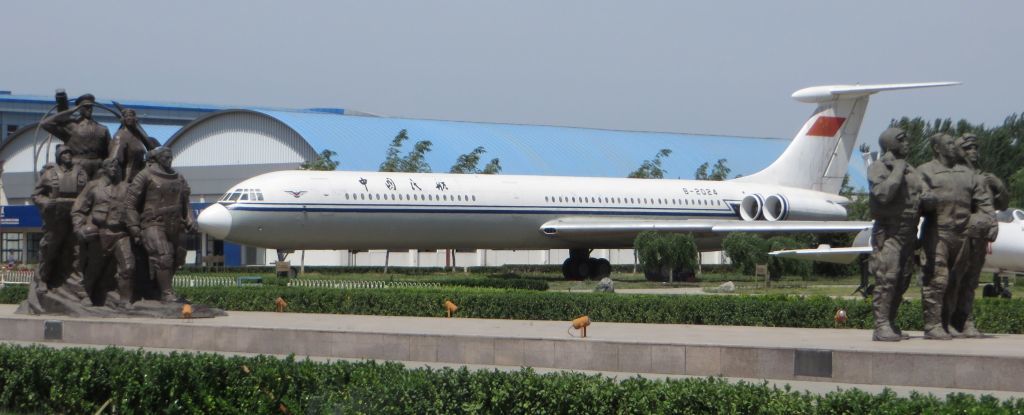
I treated myself with the visit of this Il-18 which was Mao’s presidential plane until 1967.

There were adverse lighting conditions in the cockpit (be there early if you want them to be better). Note the picnic-like jumpseat in the middle of the four normal seats for the captain, copilot, flight engineer and navigator.
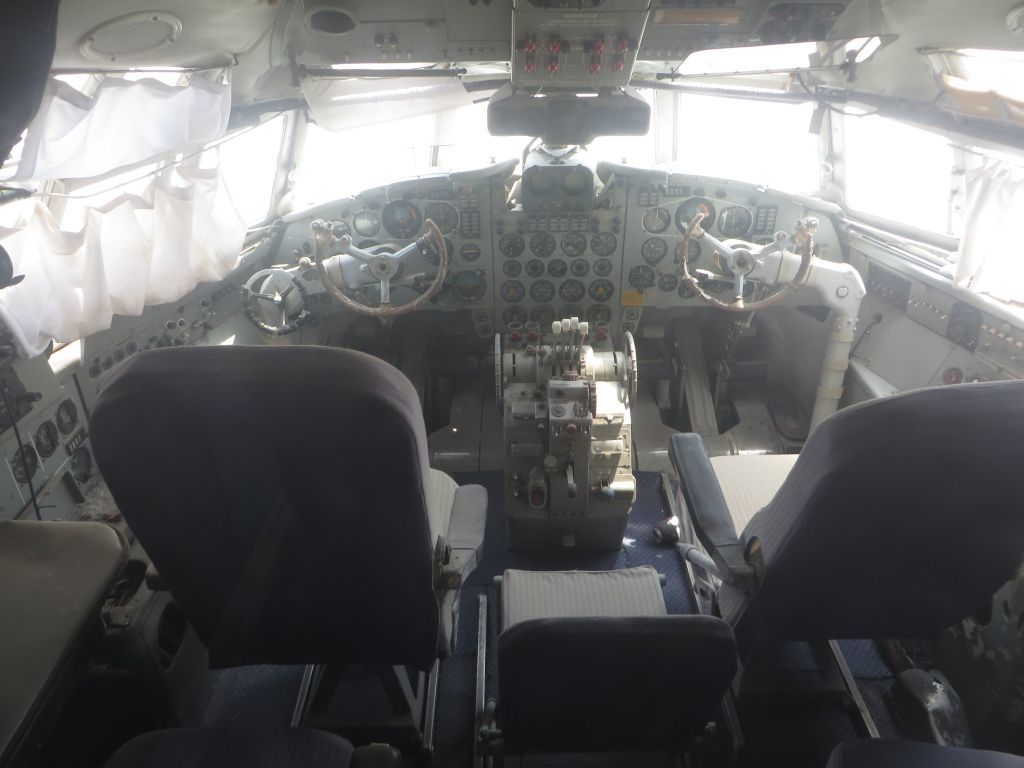
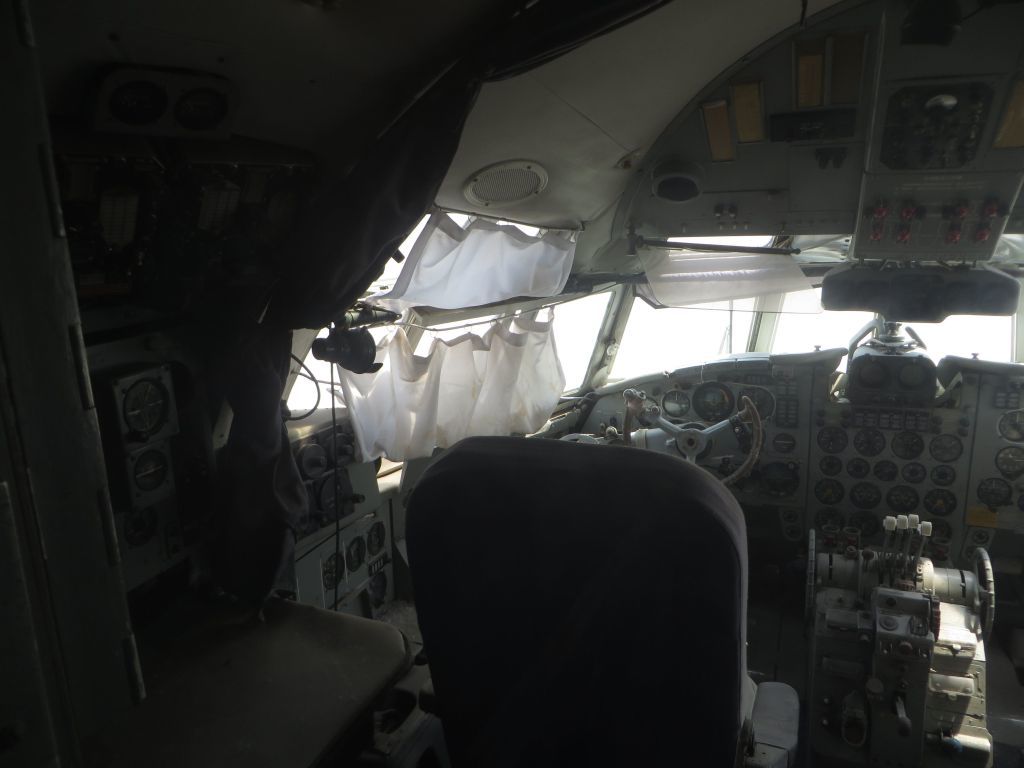
Two cabins with a 3+2 layout

The ladder for use in airports which do not have movable stairs

A luggage storage area, with a clothes hanging rod
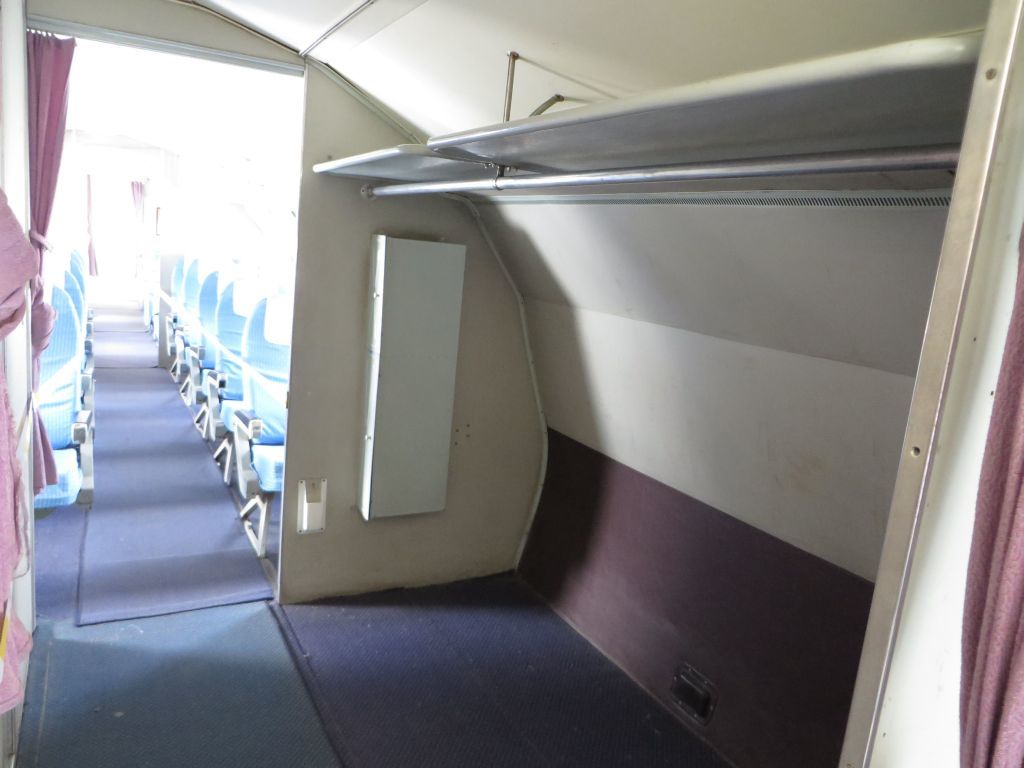
The presidential bed is in the rear, with a saloon with two pairs of seat facing each other on the other side of the aisle.
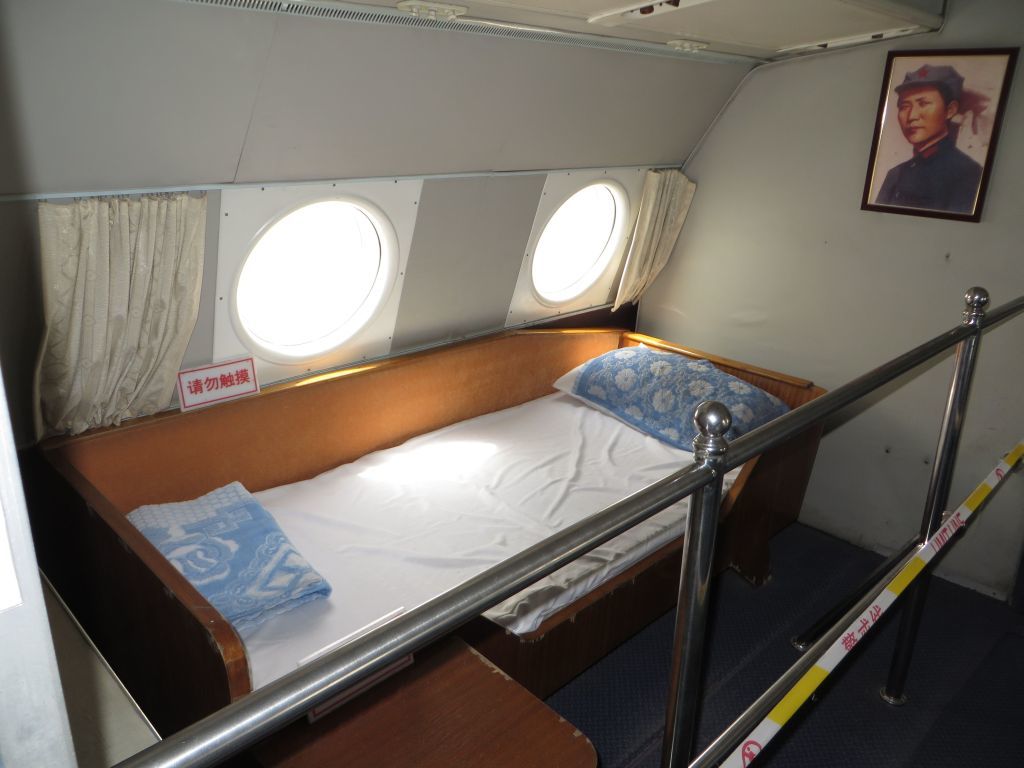
The galley in the rear, seen from the rear
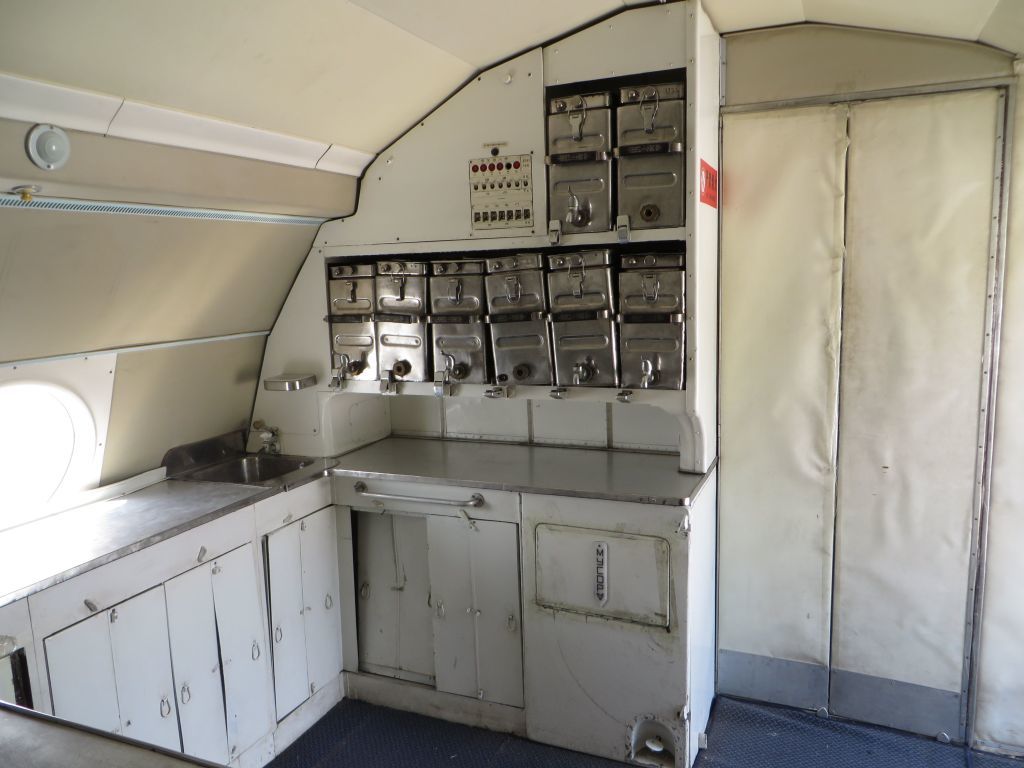
… and from the front
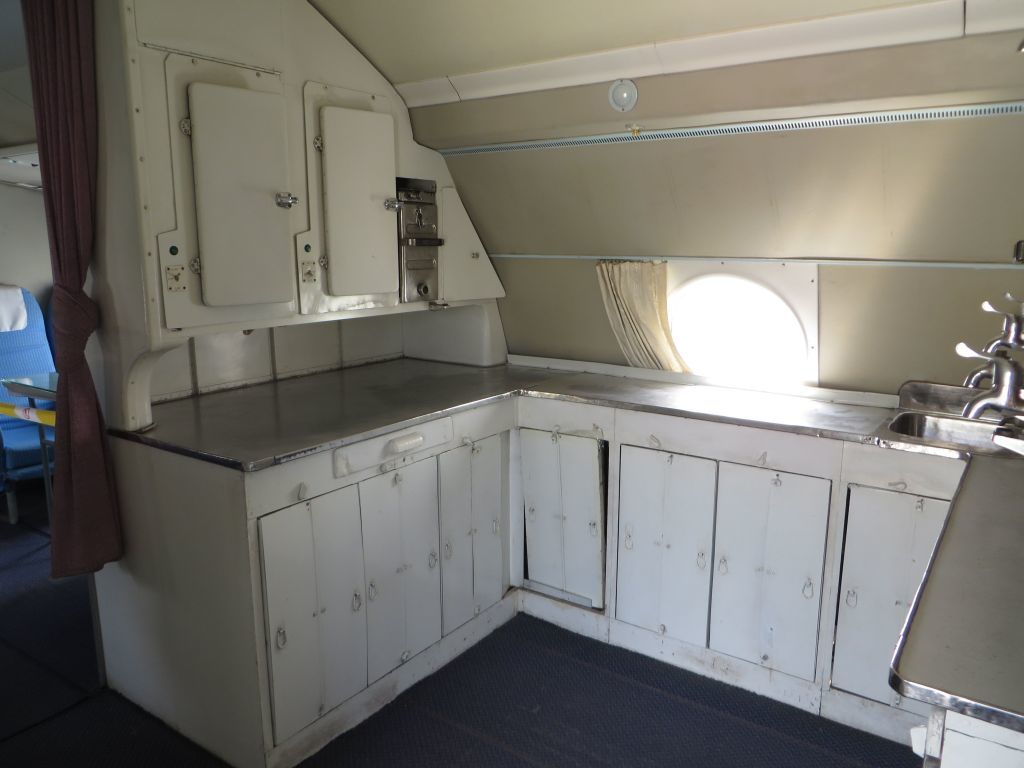
An amusing detail: all the labeling is in Russian, but in the galley, Chinese translations have been riveted on top of the original ones.
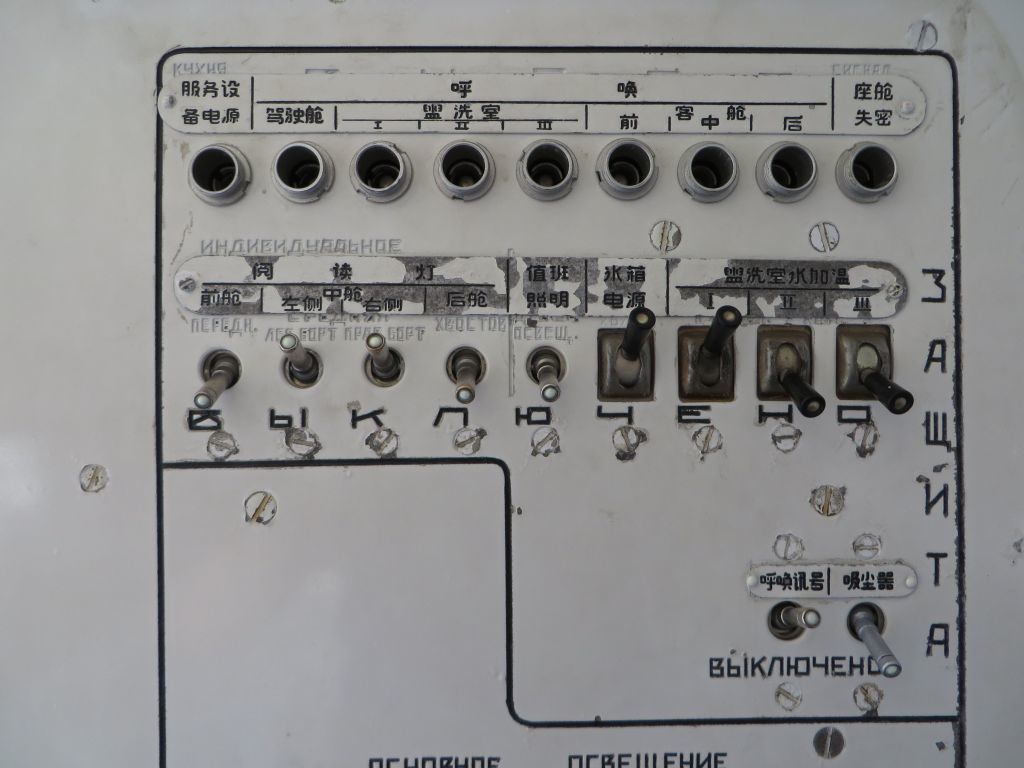
There is way too much to see in this museum to show in a Flight Report bonus, but I hope that you liked this preview. Thanks for reading this, and if you think that it was useful, or if you want more details, feel free to leave a comment!
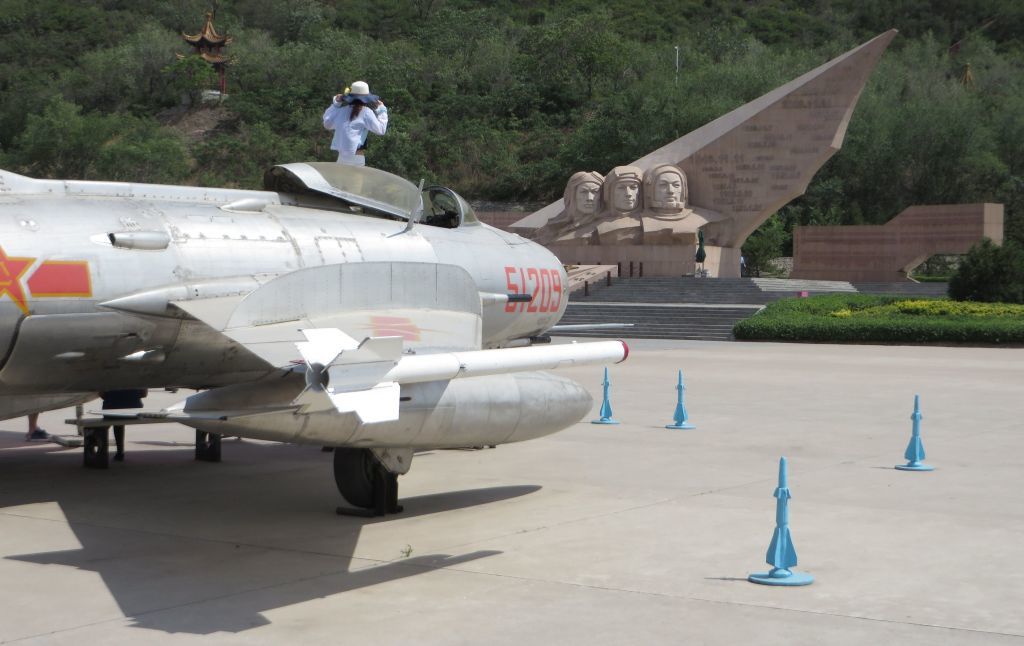
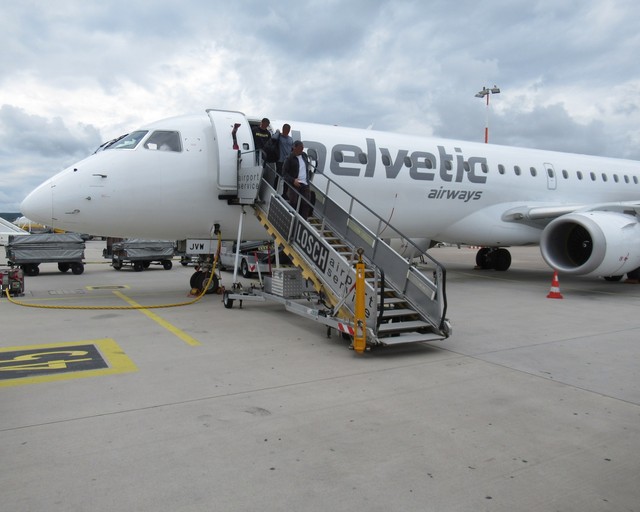

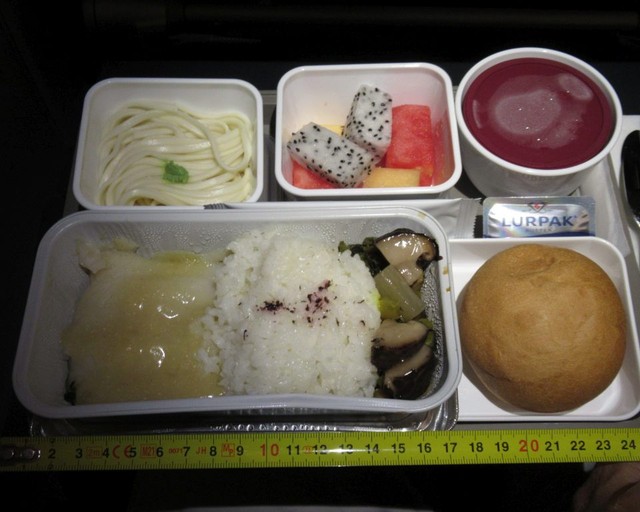

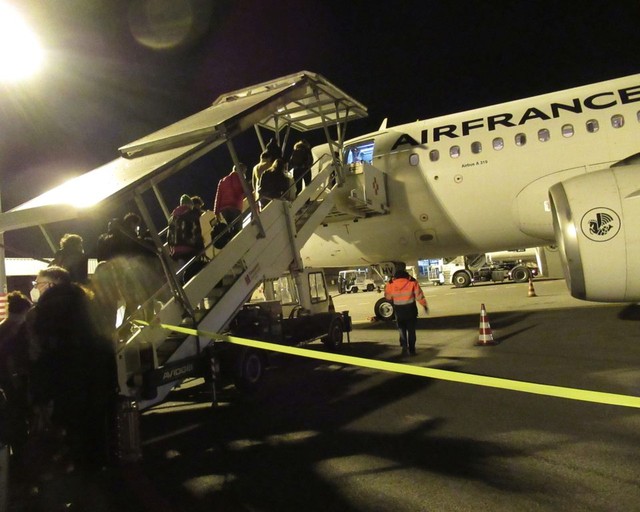
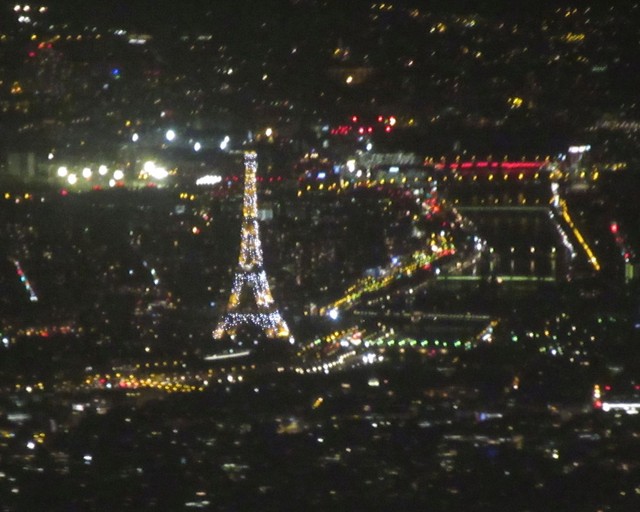

Thank you for sharing your report. The Flight itself was interesting enough to read but the bonus got me really excited! What a great museum! The biggest aviation museum I've ever seen is Udvar-Hazy (IAD) but this seems to be much, much bigger and with a lot of interesting a/c we usually just don't see. Fantastic pictures, if you find another opportunity to share more, please let me know!
Yes, this museum is HUGE, four time larger than the Udvar Hazy Center by rough Google Earth reckoning.
I positively identified over 60 different types of aircraft, but there are more than that. A number of Chinese-made aircraft indeed cannot be seen anywhere else, since this is the one and only aviation museum in Mainland China.
The aircraft on display are uncluttered; some areas have no barriers at all : like most Chinese museums, the place is very photographer-friendly. I took a zillion pictures; I make a mental note to propose another such bonus next time I report on a Chinese flight.
Thanks for stopping by and for your comment!
Thanks for sharing this great detailed report. It's always interesting to get an inside look at Chinese domestic travel. Wow, those over loaded trucks on the highway are scary! I would not want to be anywhere near those. With so many delays and cancellations, which I guess is typical, you got lucky that your flight was on time! Chinese regional airports always seem so impressive with how big they are. The cabin is nothing special, but it is nice that there are overhead IFE screens for a short flight. Nice spotting on departure and arrival, looks like you got lucky with some clear weather on arrival to Beijing.
Awesome bonus! I am not usually of fan of military aircraft, but the sheer numbers in this museum is truly impressive. It's also really neat to see all the soviet civilian aircraft. Mao's presidential aircraft is not particularly impressive, but I suppose this is in line with his communist principles. When you see those adds for the huge mansion housing developments at the airport, it really shows how China has changed!
I saw many 55 ton weight limit signs in China, vs a typical 38 ton limit in Europe, and the height clearance on tollways is 5.2 m, vs 4.5m in France. Truck overloading is something in China, and you would not believe the number of crashed trucks that I have seen in that country when I worked in mountain areas, even though my experience is that they removed the wrecks very quickly.
The urban area of Zhengzhou has 4.2 million inhabitants. Add close to a million for Kaifeng going east, over a million for Xinxiang going north , two million for Xuchang going south (Luoyang in the west has its own airport) : overall, CGO serves a population close to ten million people. So yes, CGO will be big once expanded, but we often fail to realize how big second tier cities are in China.
Thanks for your comment !
Thanks for stopping by the English side to report on my favorite carrier ;)
The airports in China never cease to amaze me. So extravagant for such a minor airport. I also like the airport issued boarding passes. CGO reminds me a lot of PVG on the inside. Will CZ expand its operations at CGO after the new terminal opens?
The J-cabin on your B738 looks very different from the J-cabin I had on their international B738s. Standard Y cabin, I like the ash trays under the armrest :)
“Why is this SF Airlines cargo plane at the passengers terminal?”
- Human trafficking?
What was the CAAC reasoning for no snack box? PEK-CGO can’t be that much shorter than PVG-CGO, can it? Only offering water seems pretty poor for Chinese standards.
Great bonus Marathon, we appreciate your willingness to explore the less traveled parts of China :) I've had many experiences like you have described, where you get off a bus in the middle of nowhere and panic thinking you'll never be able to get back...
By the way, is it just me, or does that bed look more like coffin?
I doubt the Big Three (CA, CZ and MU) would expand much their operations in CGO : their hubs in PEK and/or PVG+SHA are too close. I would rather expect second tier airlines developing there, the likes of Shenzhen Airlines, Tianjin Airlines and Capital Airlines. Zhengzhou is the capital of Henan Airlines; fledgling Henan Airlines was renamed Kunpeng Airlines after crashing one of their four aircrafts in 2010. They have ordered 100 ARJ-21s, a Chinese-made aircraft which has yet to enter revenue service.
The J cabin is pretty standard for Chinese domestic flights in Boeing and Airbus single aisle aircraft. I had not noticed the ashtray ! :)
No clue why the catering was so limited. I’ve had water only on flights below one hour, but this one was longer.
Being able to communicate in Mandarin goes a long way towards feeling secure in the middle of nowhere, but I remember what it felt when I was a total beginner in the language.
The bed is indeed Spartan by today’s standards. Mao was 1.80m tall and I guess the bed was made long enough, even though the picture makes it look shorter than that.
Thanks for your comment !
I would have assumed Daxing would have served as the base for expansion for most of the secondary carriers to get greater access into that Hebei/Henan/Tianjin region.
It sounds like the decision on catering was made before the plane left, in other words, the plane was never catered.
Kind of related to the Comacs, but I got a first sighting of the Mitsubishi regional jet at Nagoya-Komaki airport. They were doing flight testings when I was there to fly JH last month. That mystical bird will be entering revenue service soon^^
I was tempted to book CA on my way home for Christmas this year too, but the 9-12 hour layovers in PEK killed that idea. I promised myself that I'll fly CA again :)
* Zhengzhou is the capital of Henan province.
Great report with lots of details, even if the flight itself was rather boring and regular. The museum bonus was awesome!
Thanks for sharing!
Haha, my introduction hinted that this was really a Aviation Museum Report with a flight account as a bonus :)
Thanks for your comment !